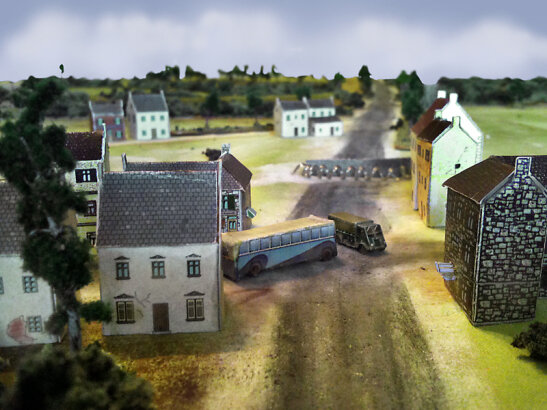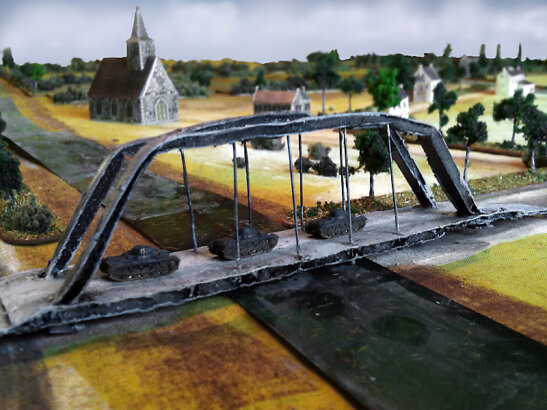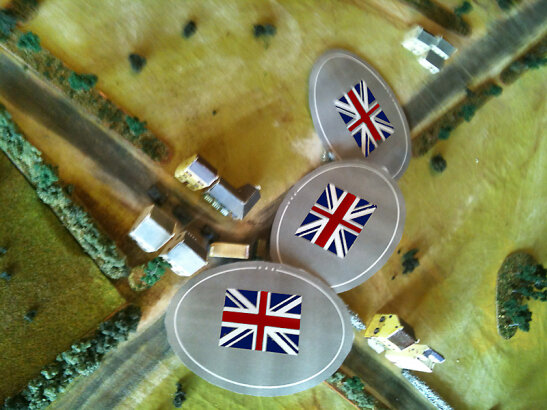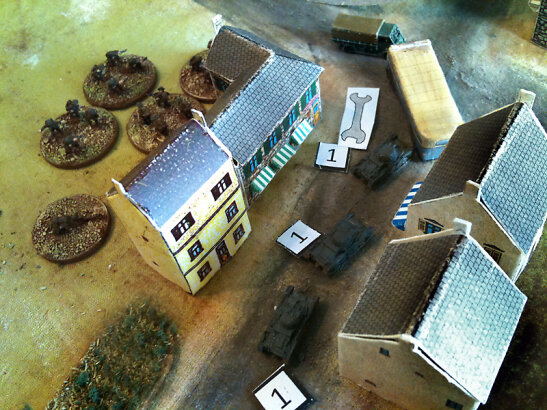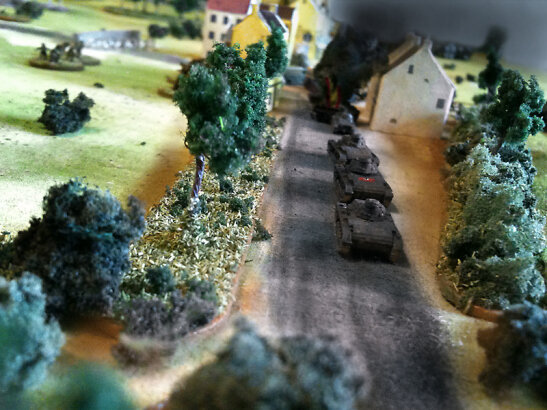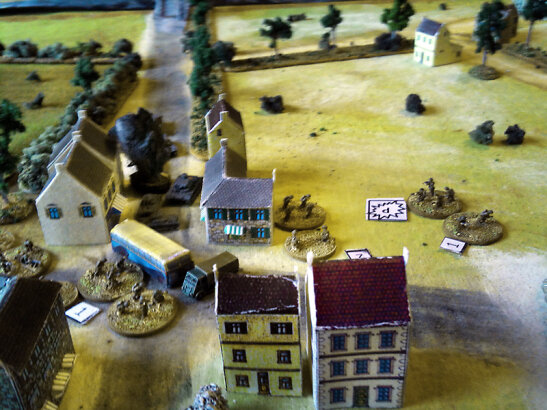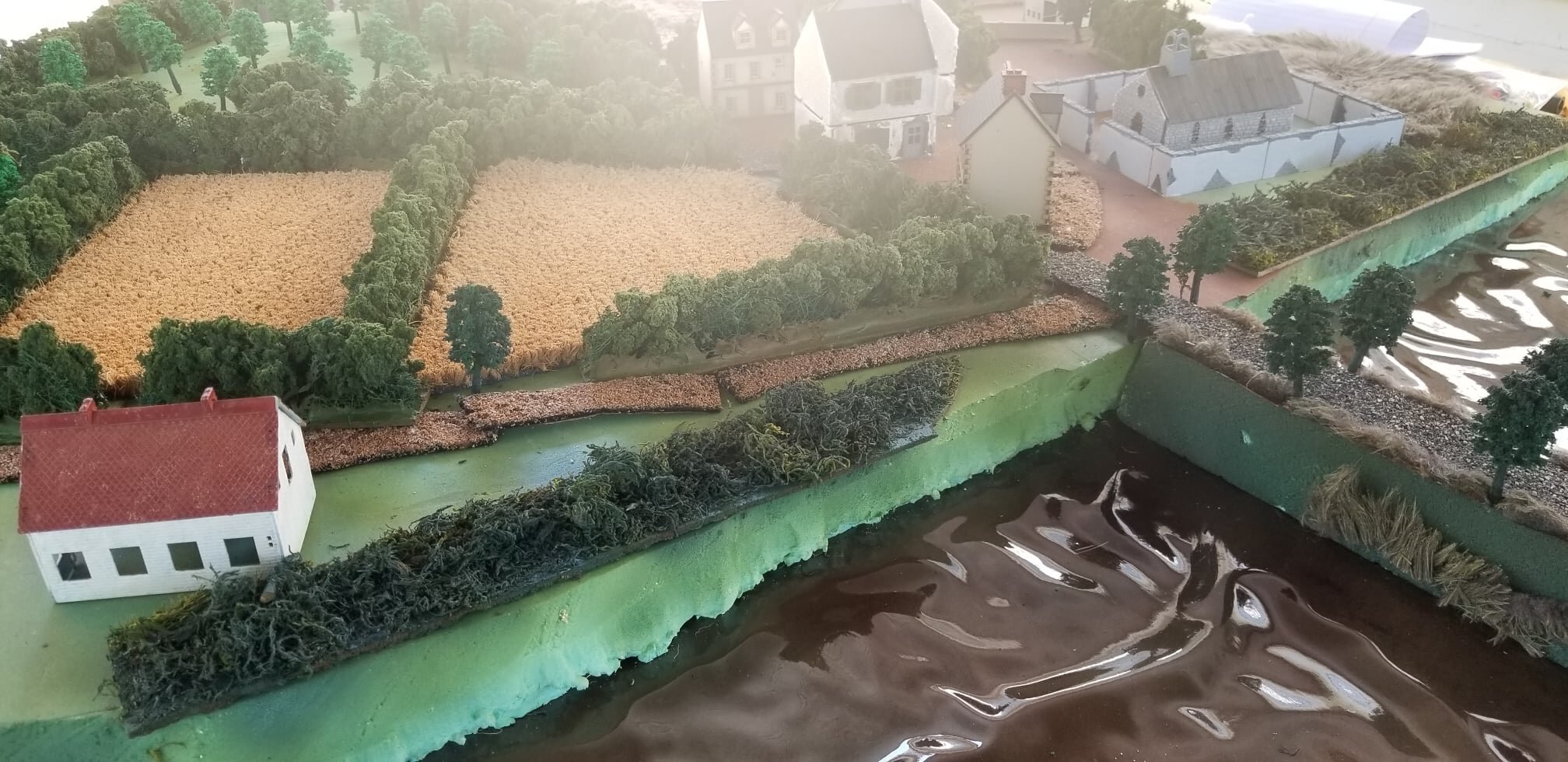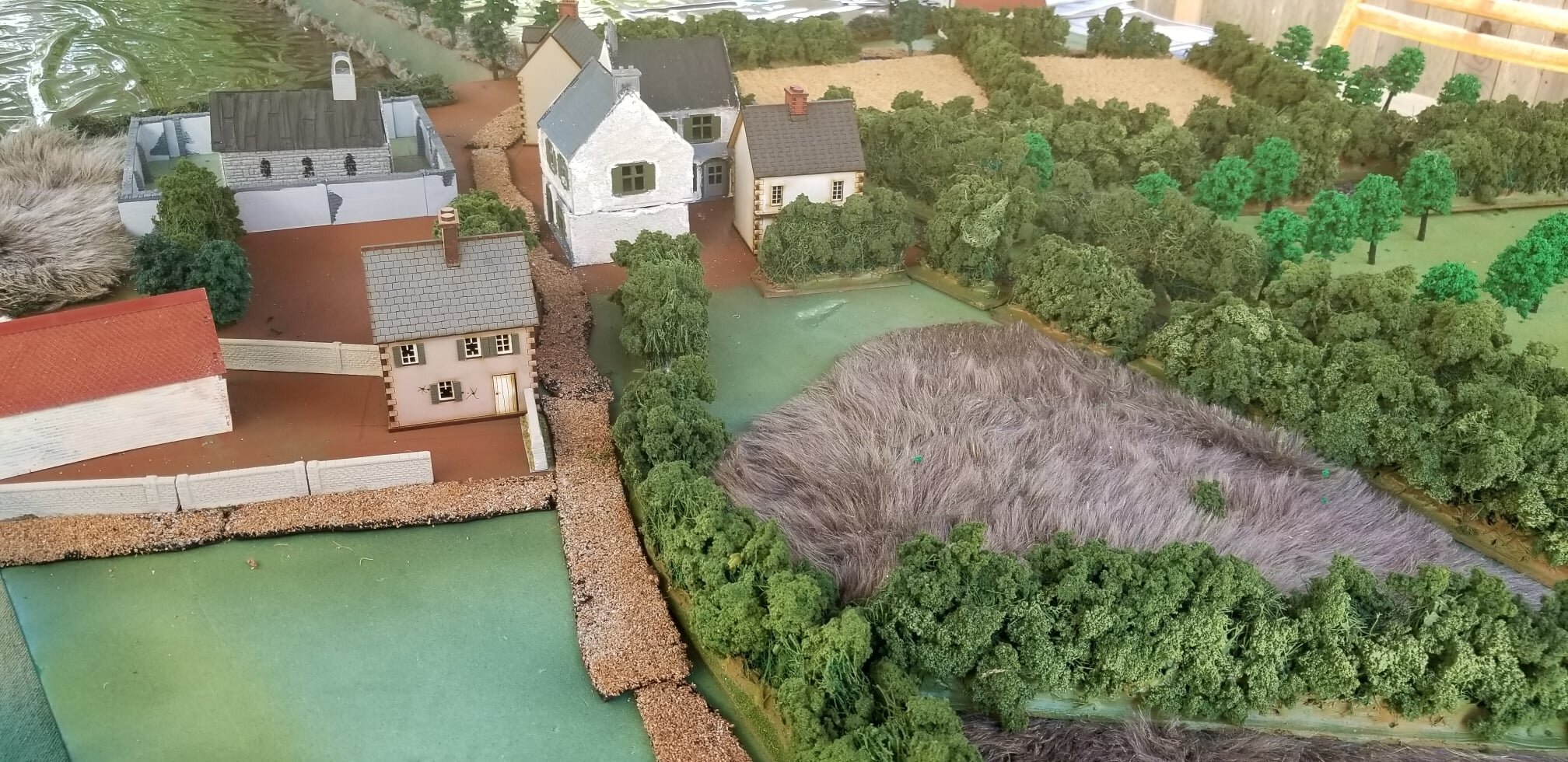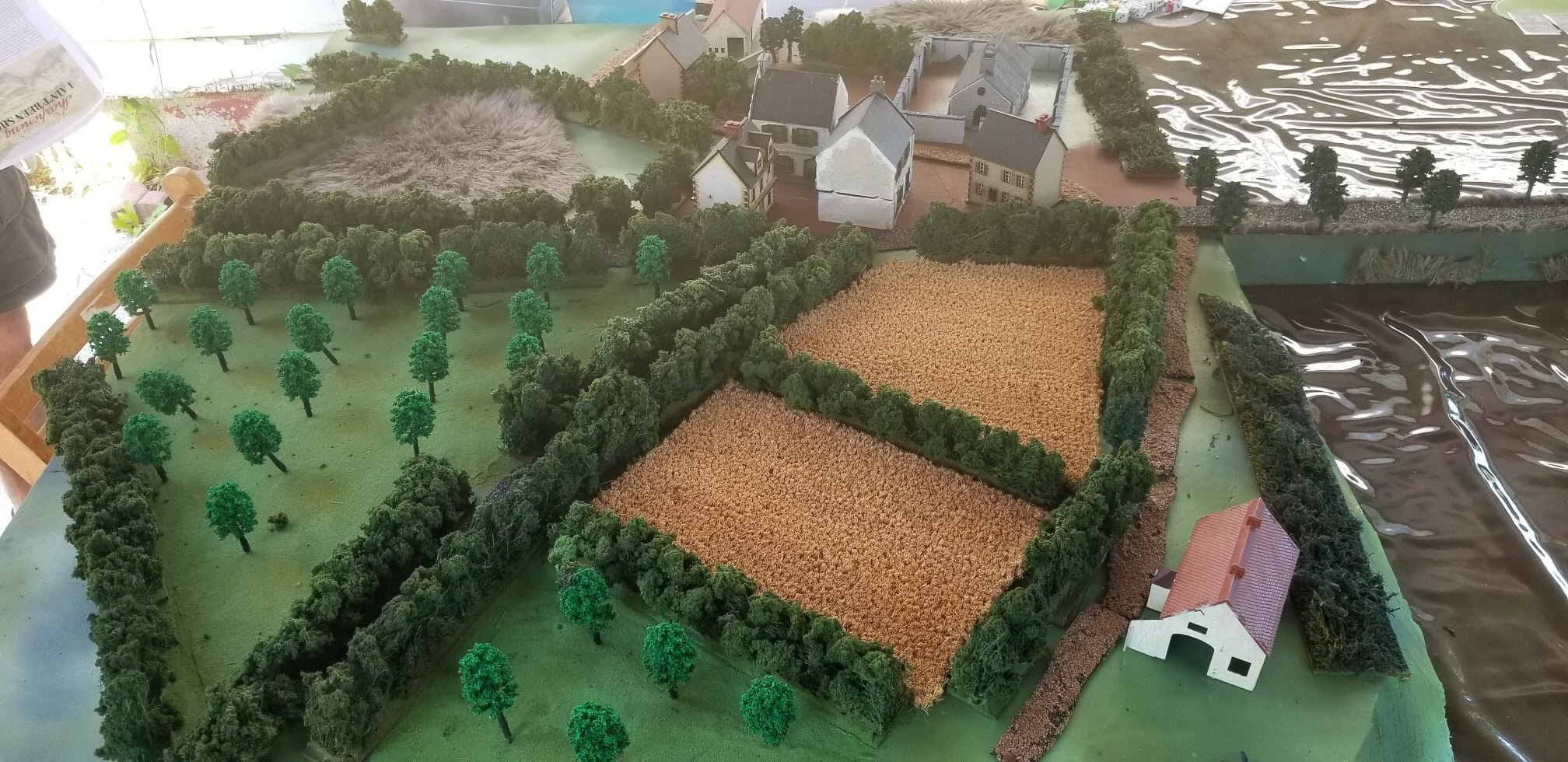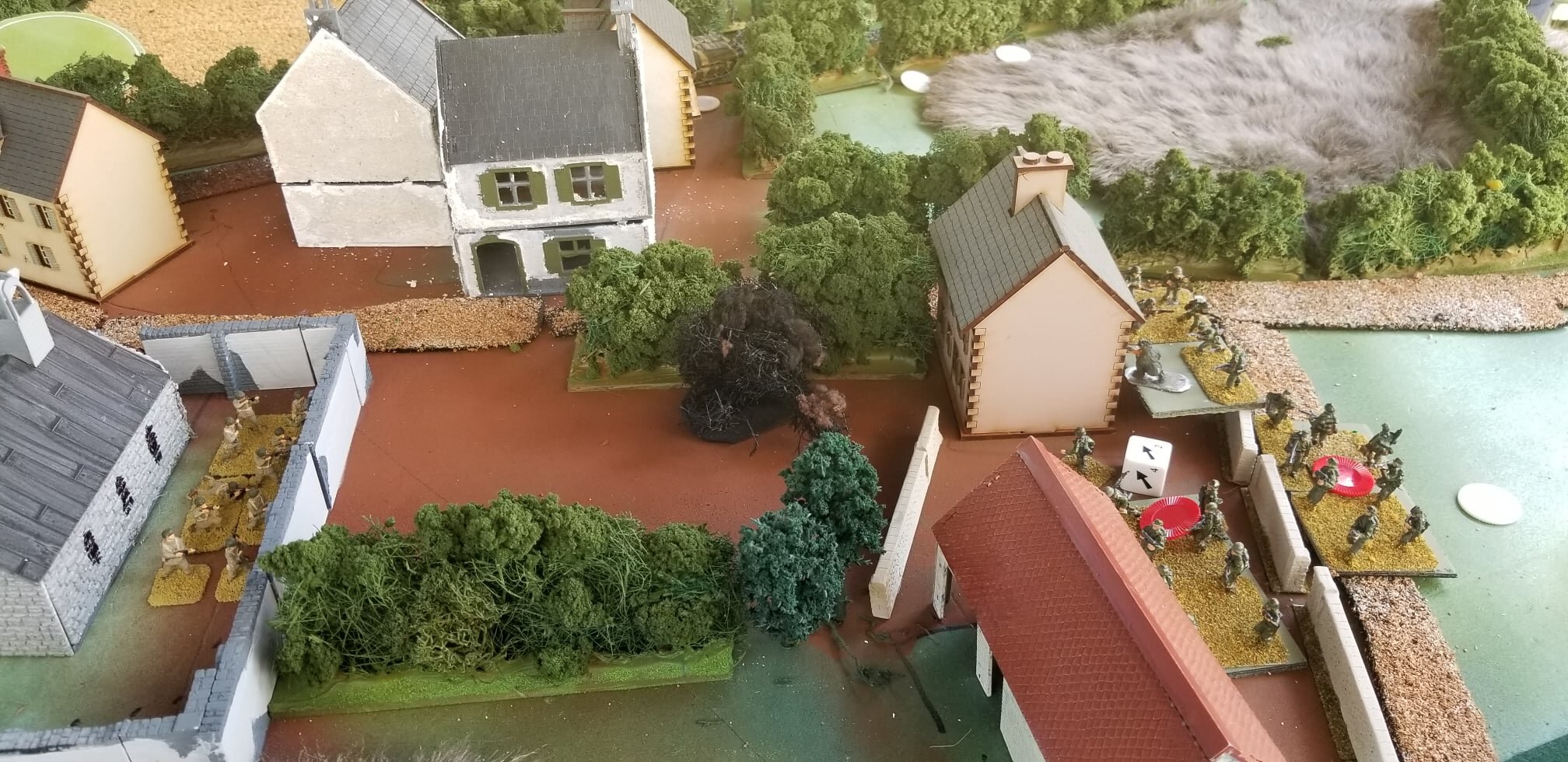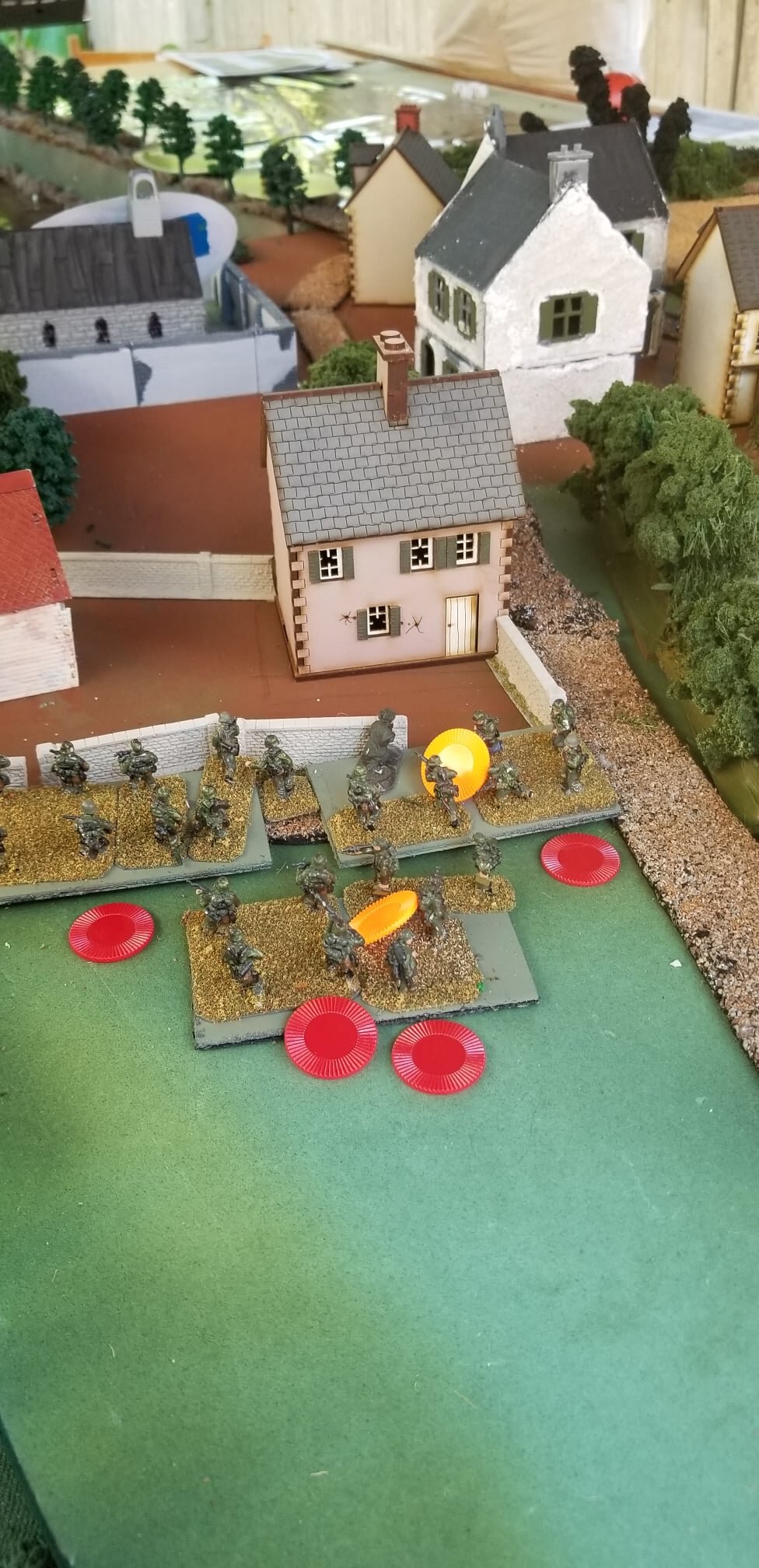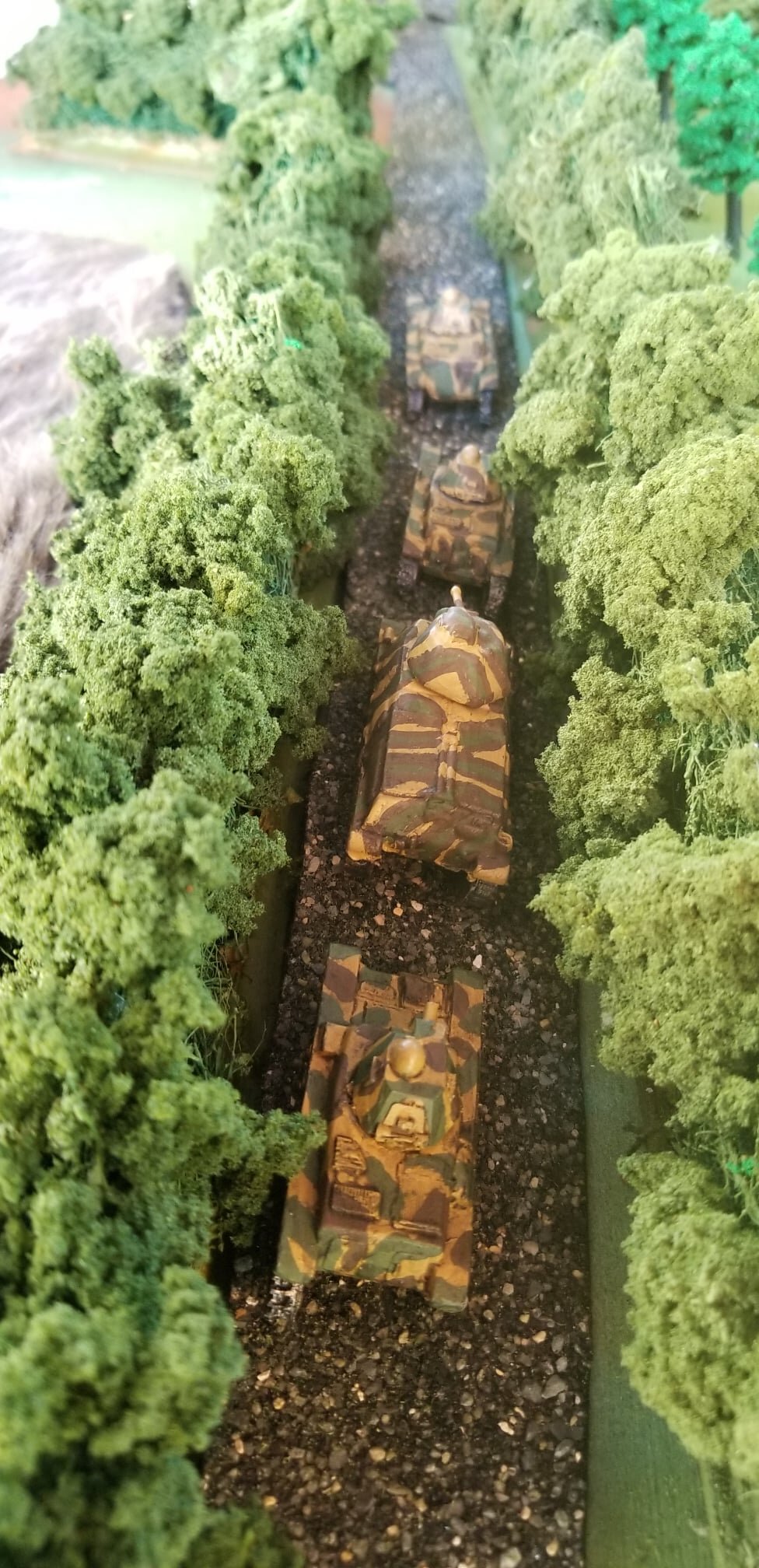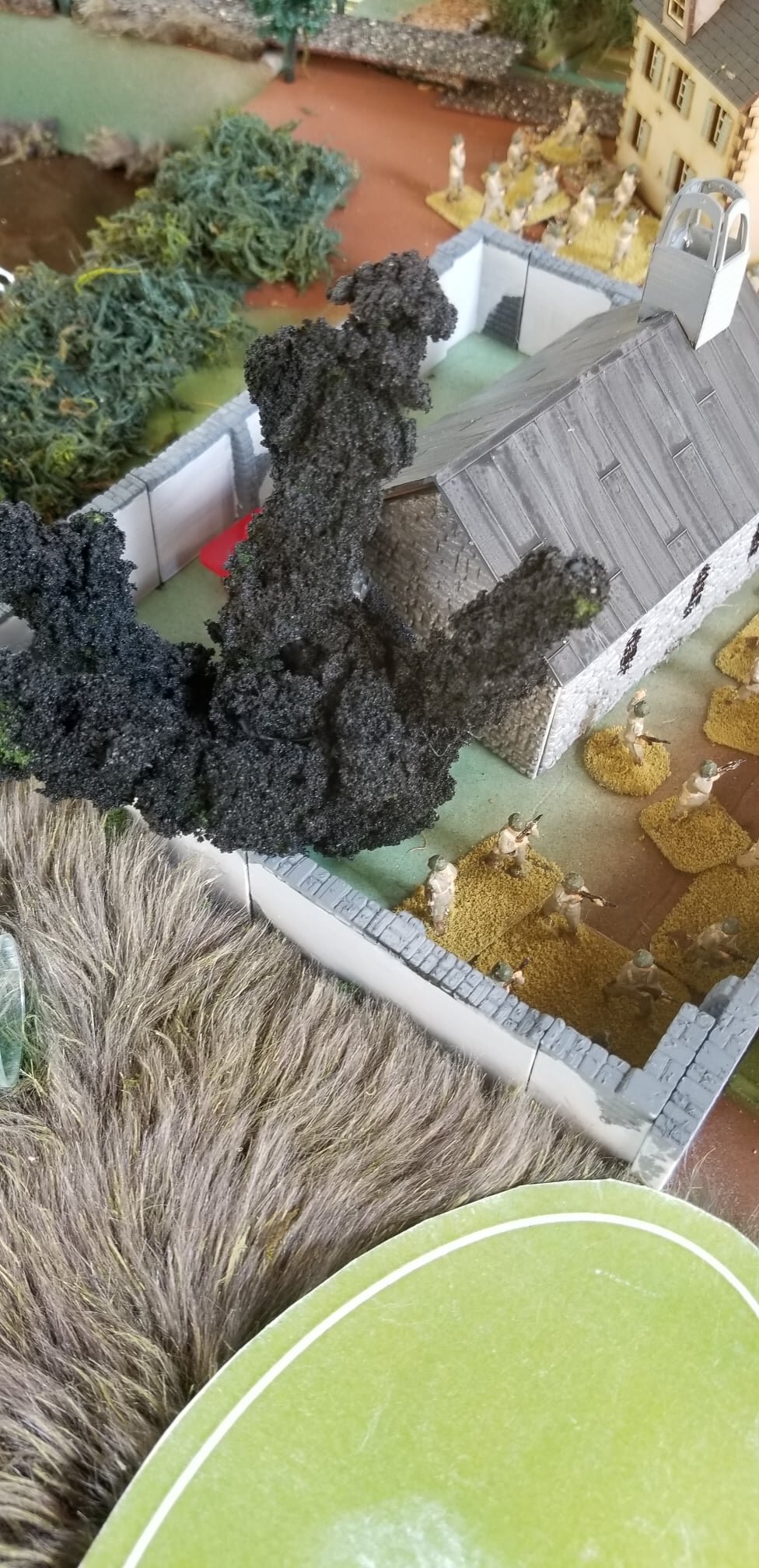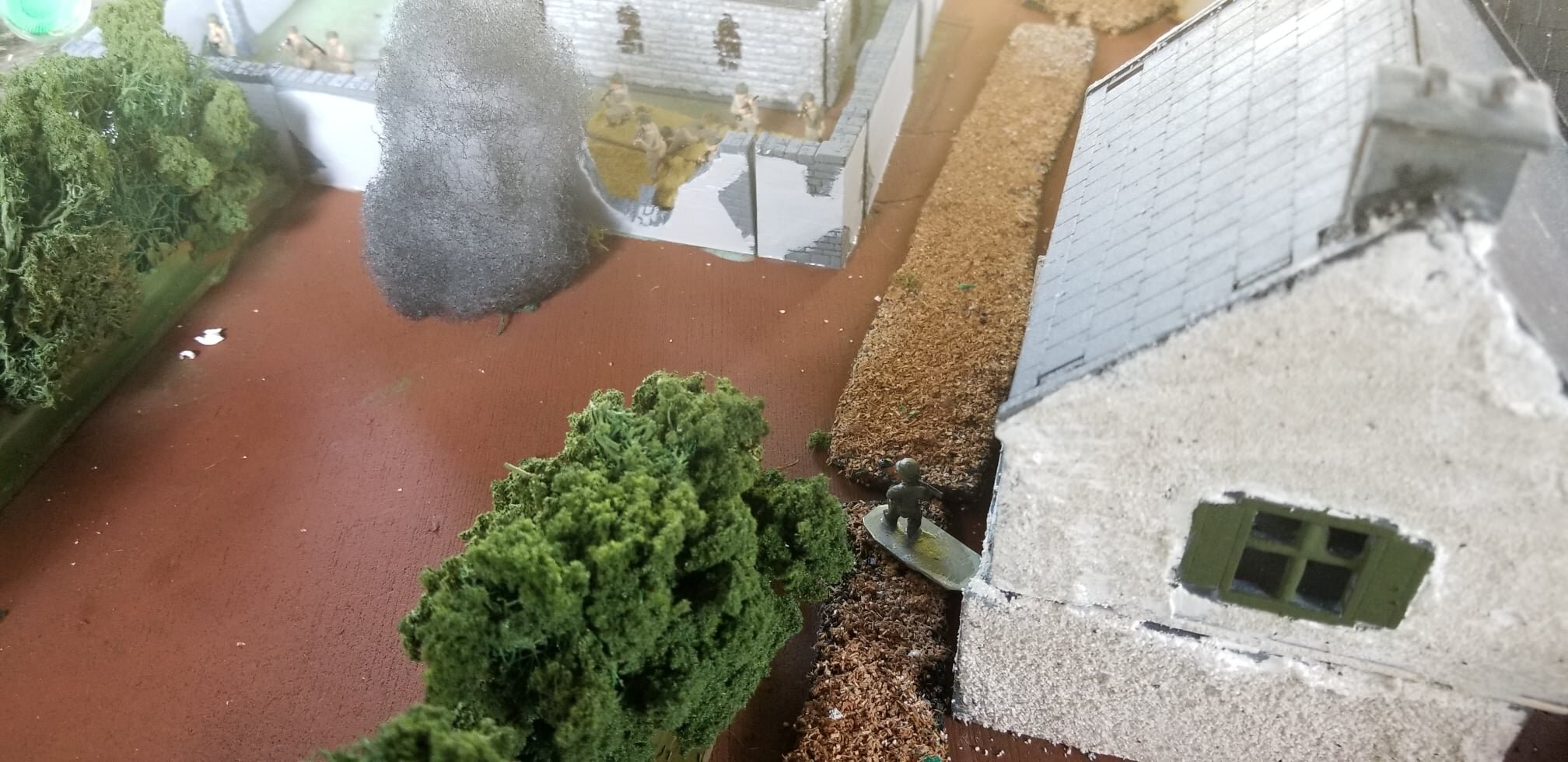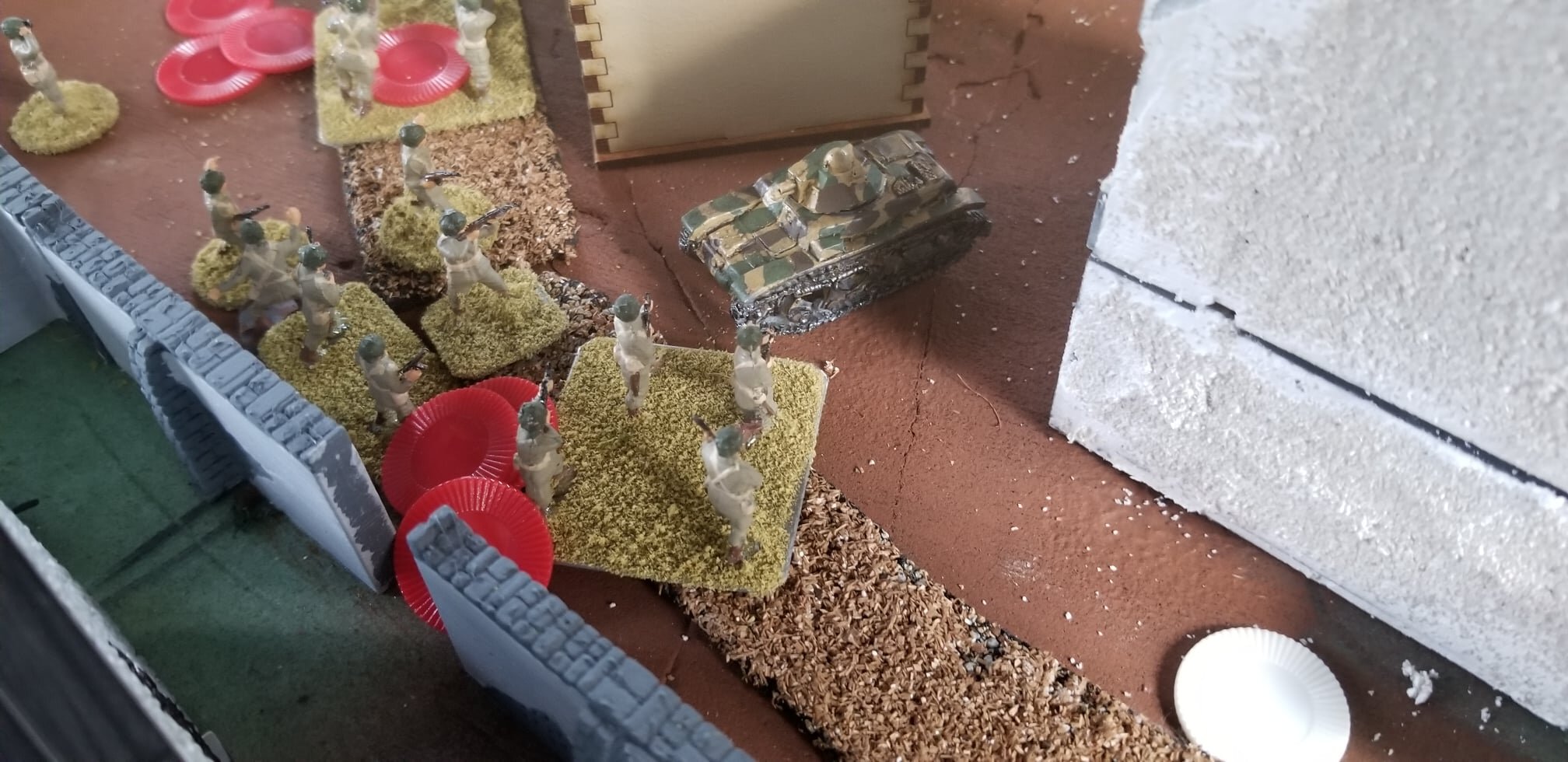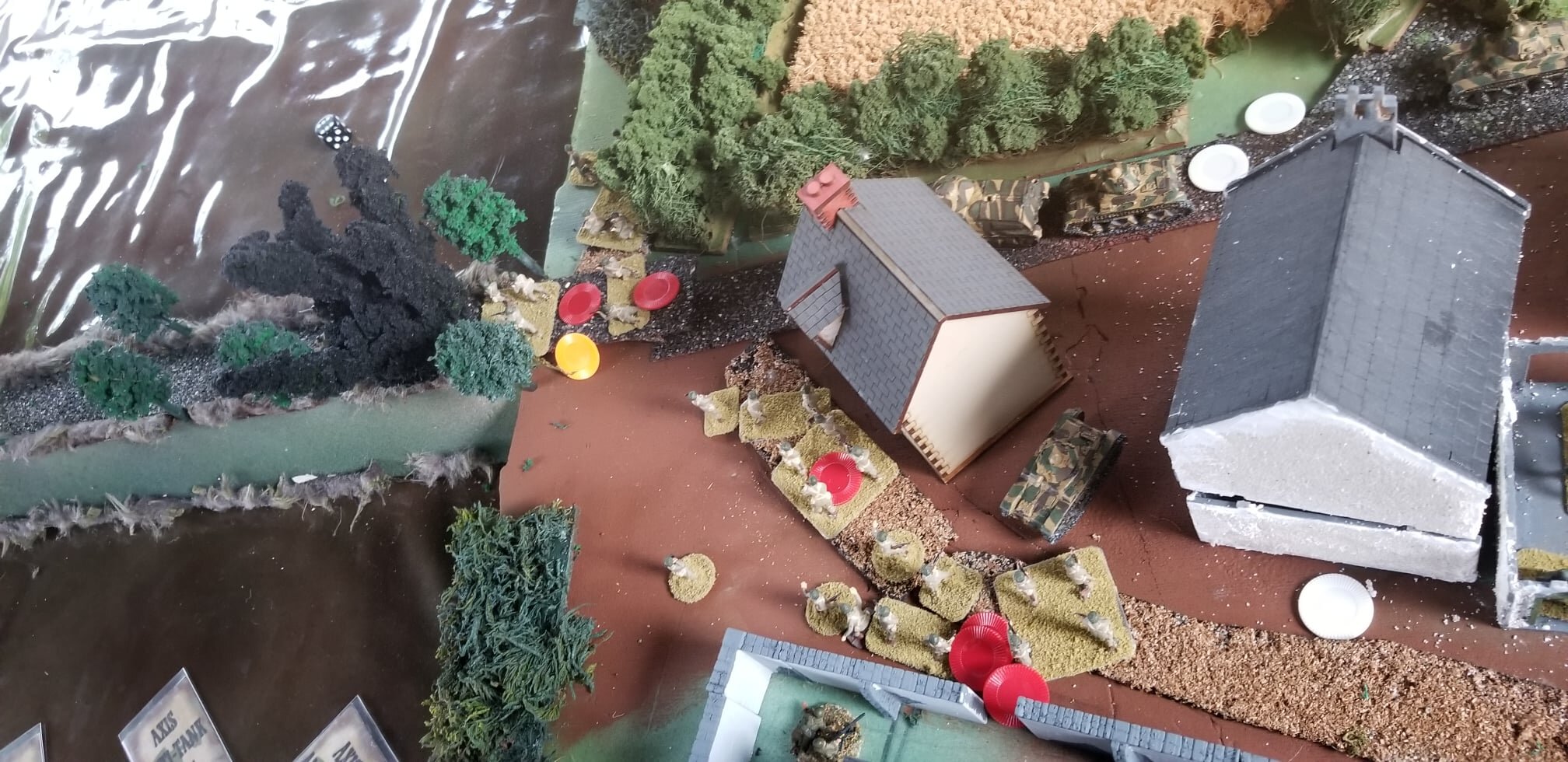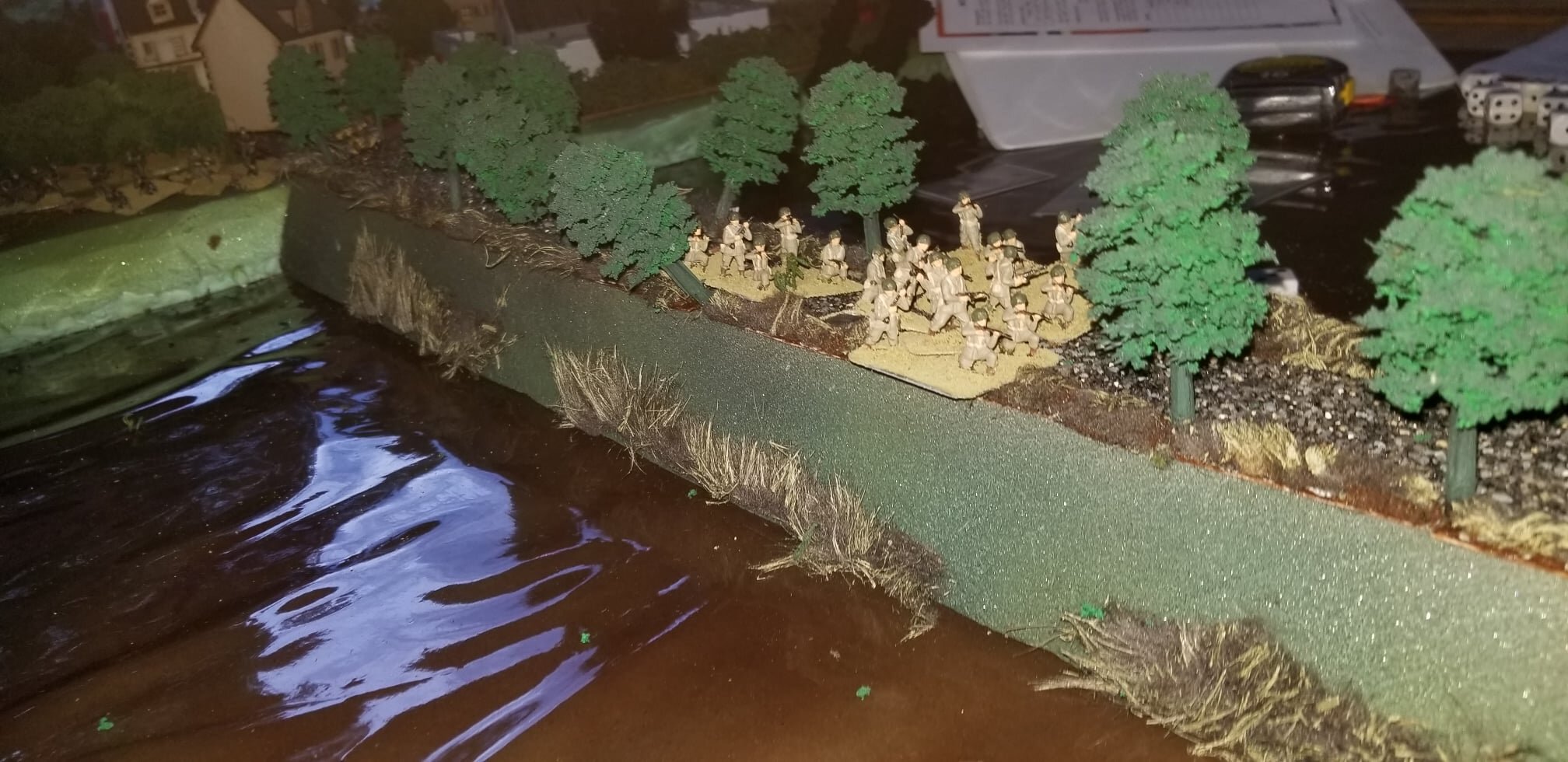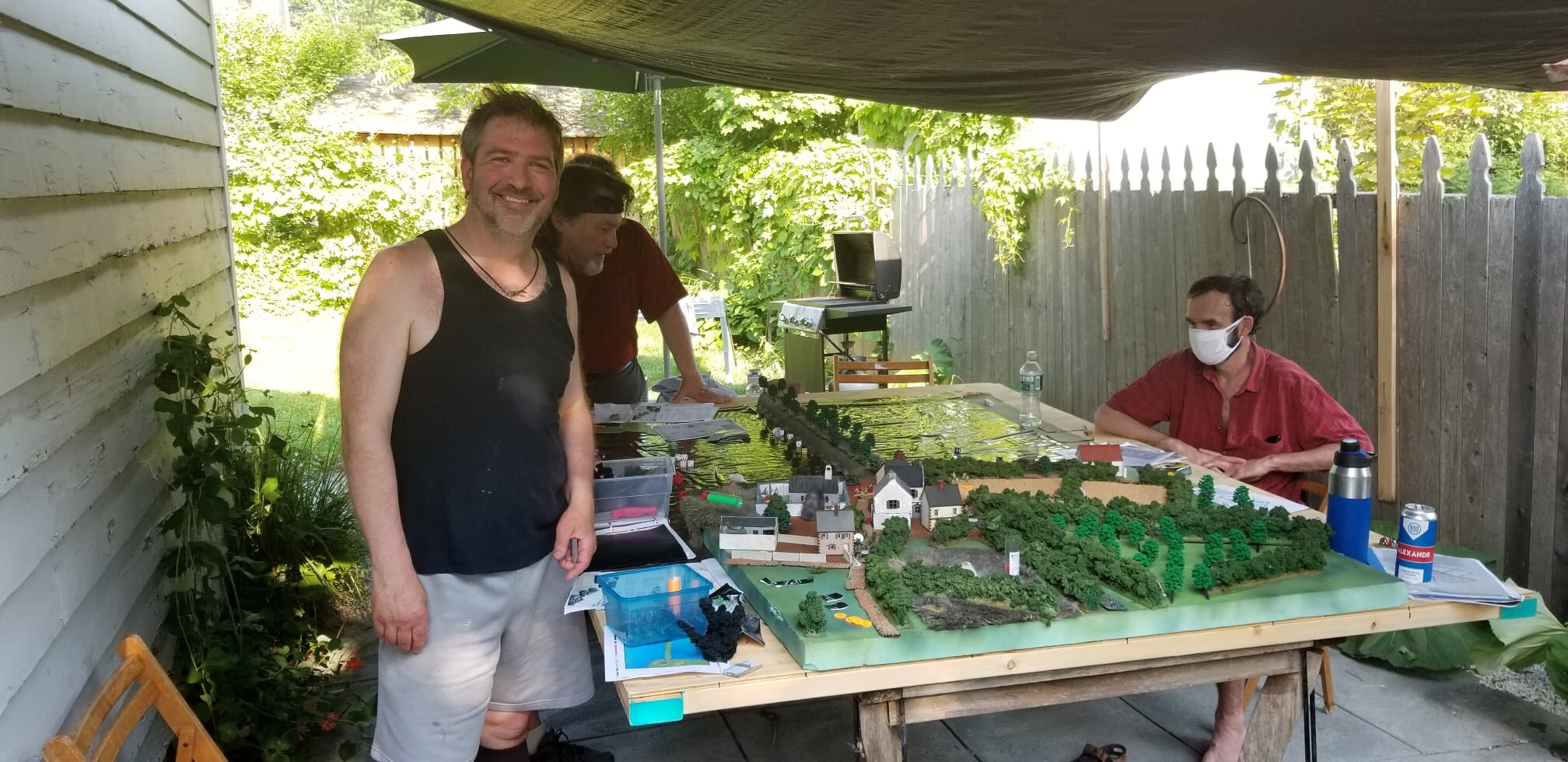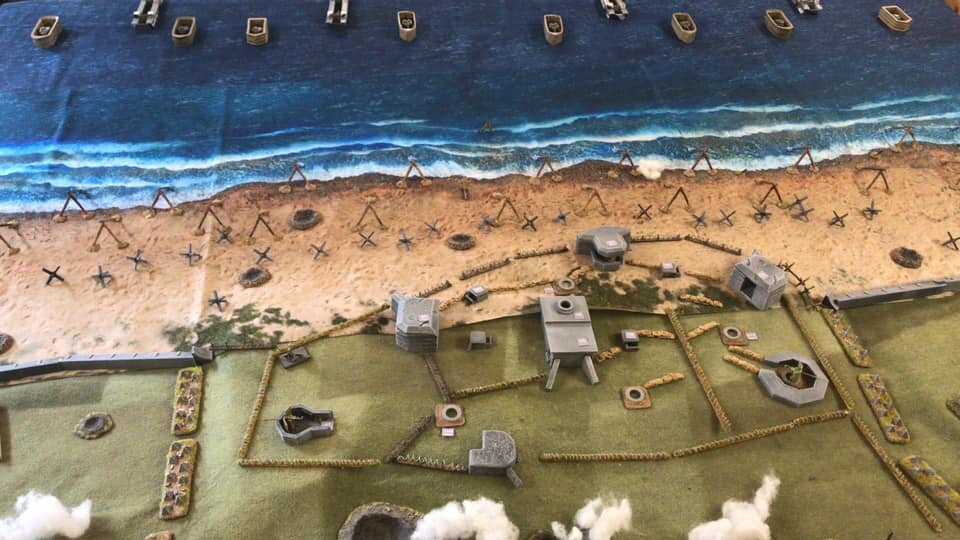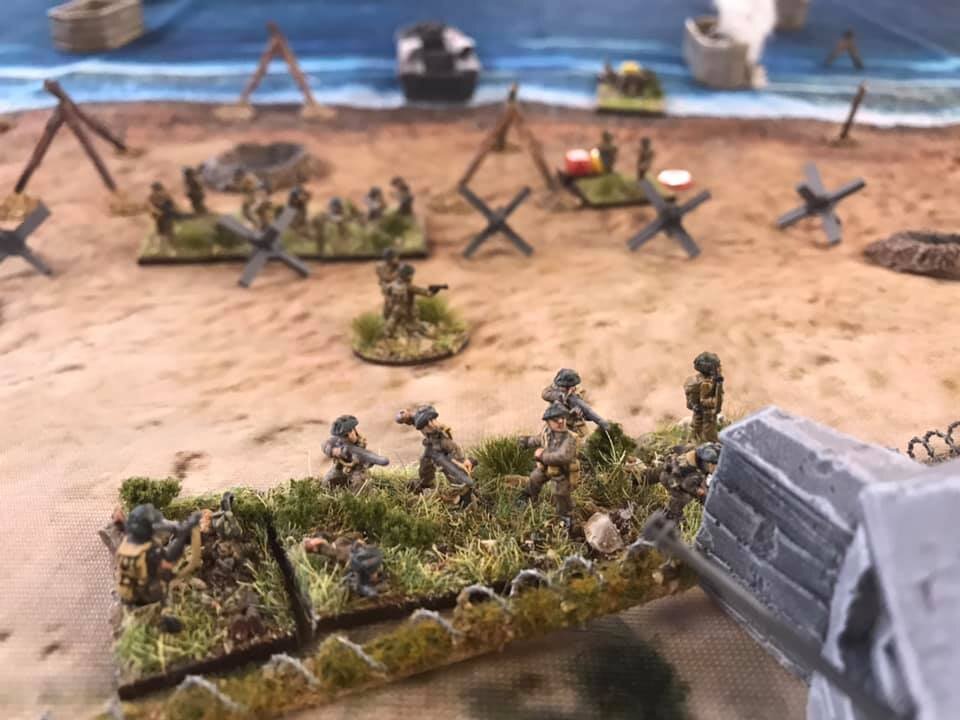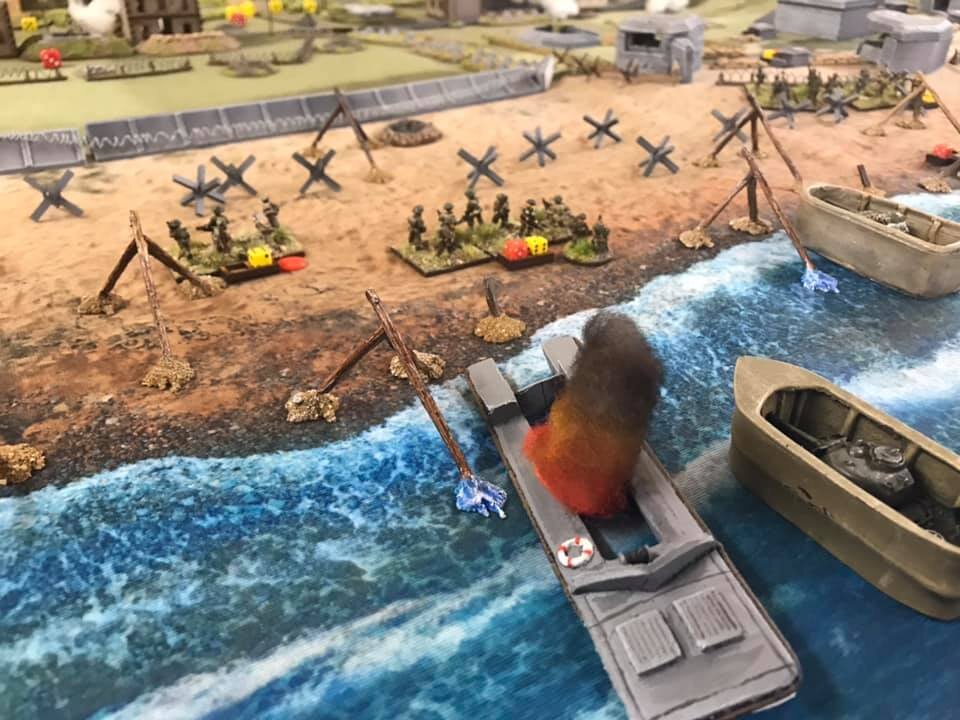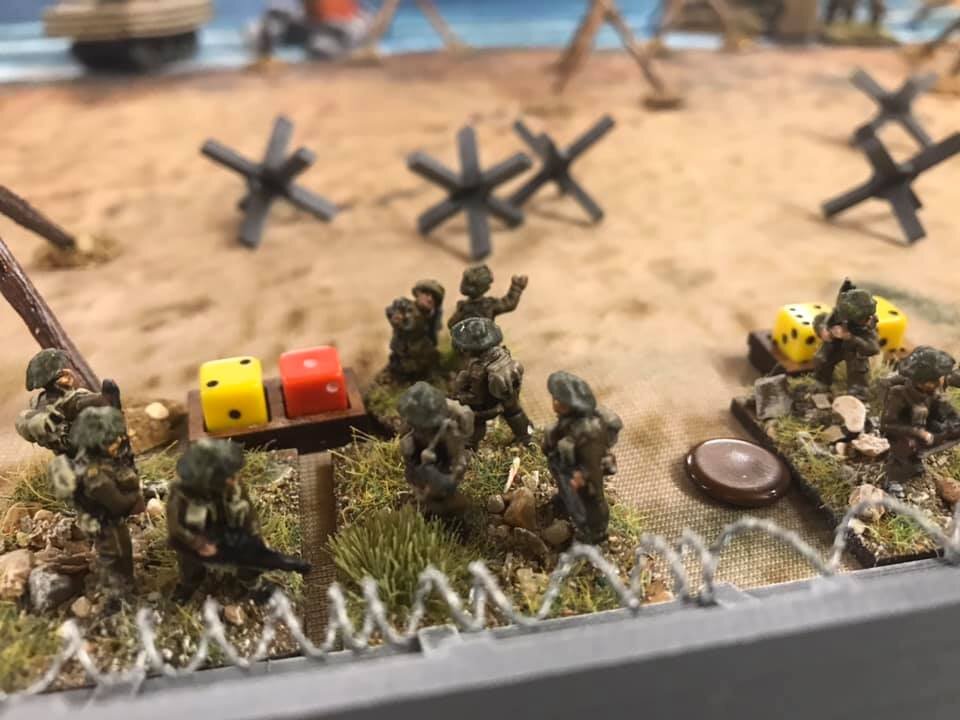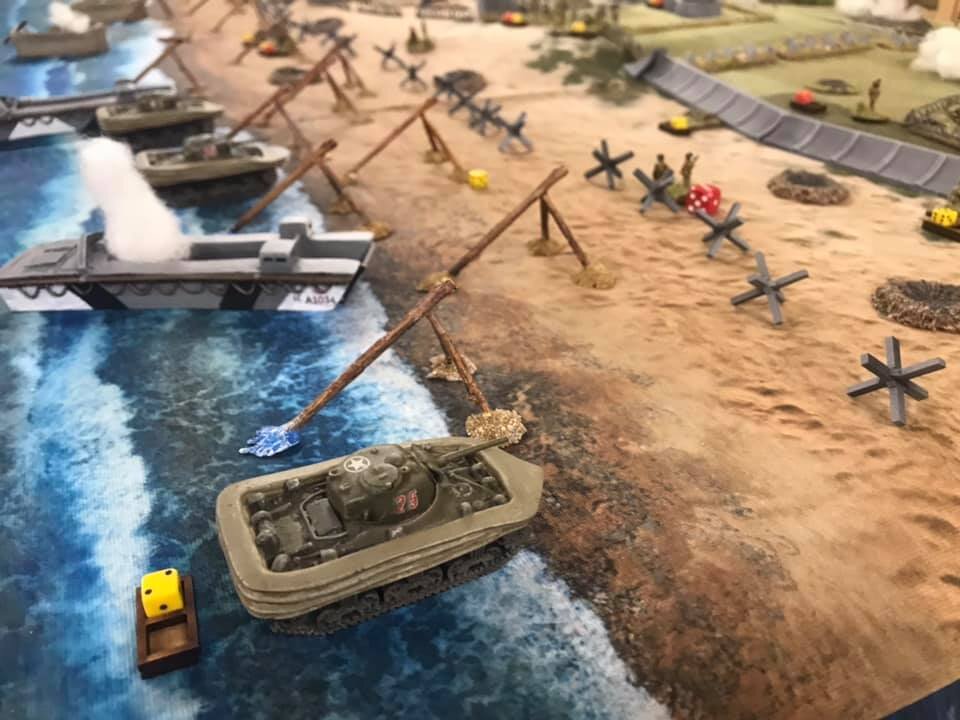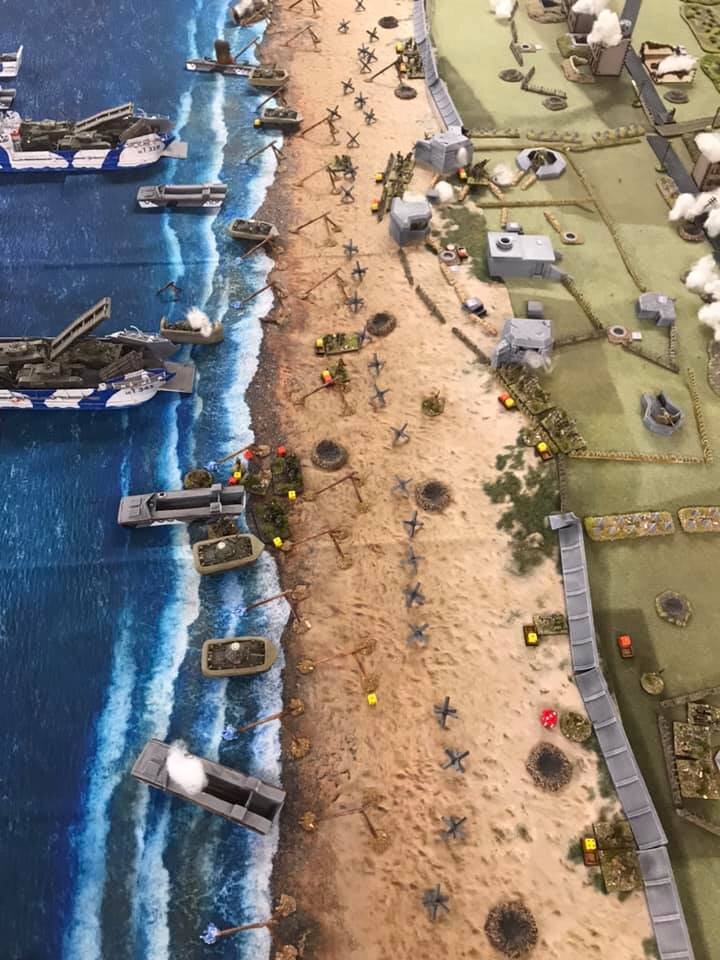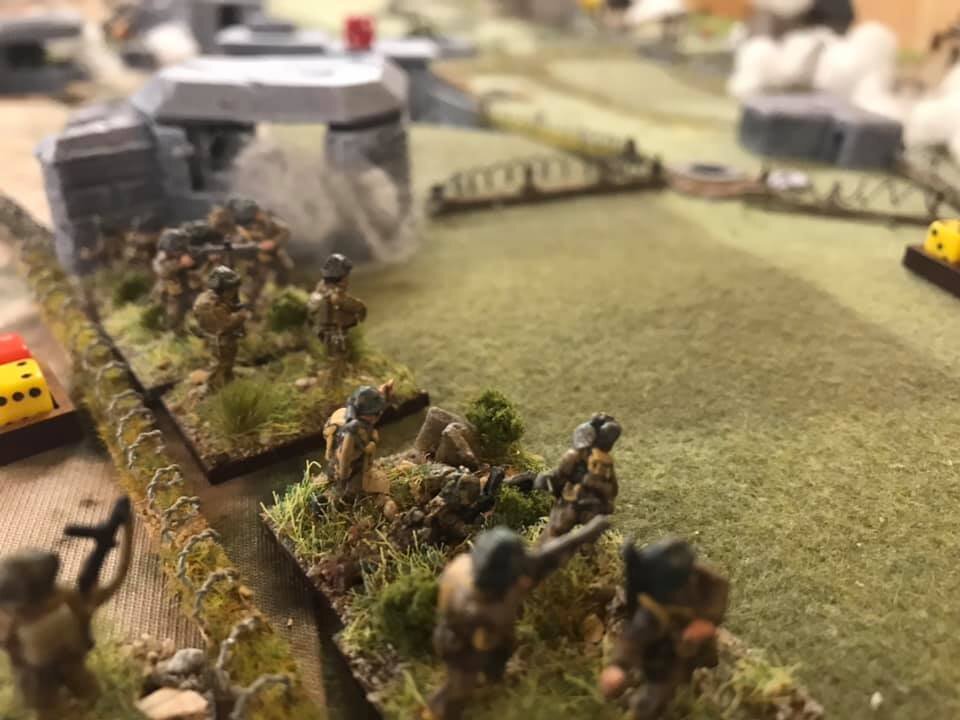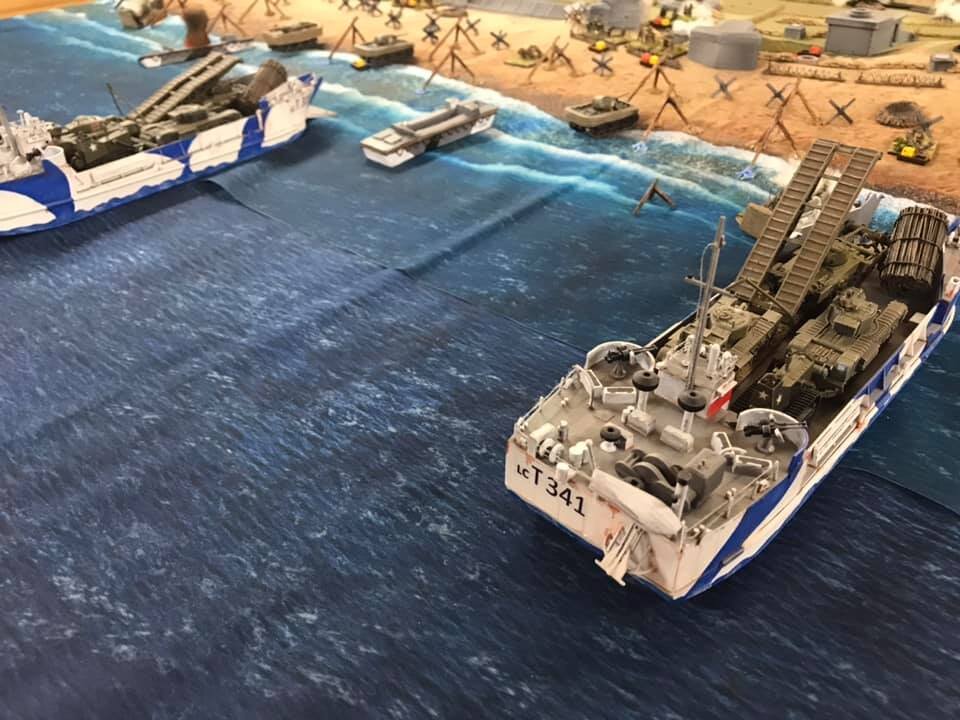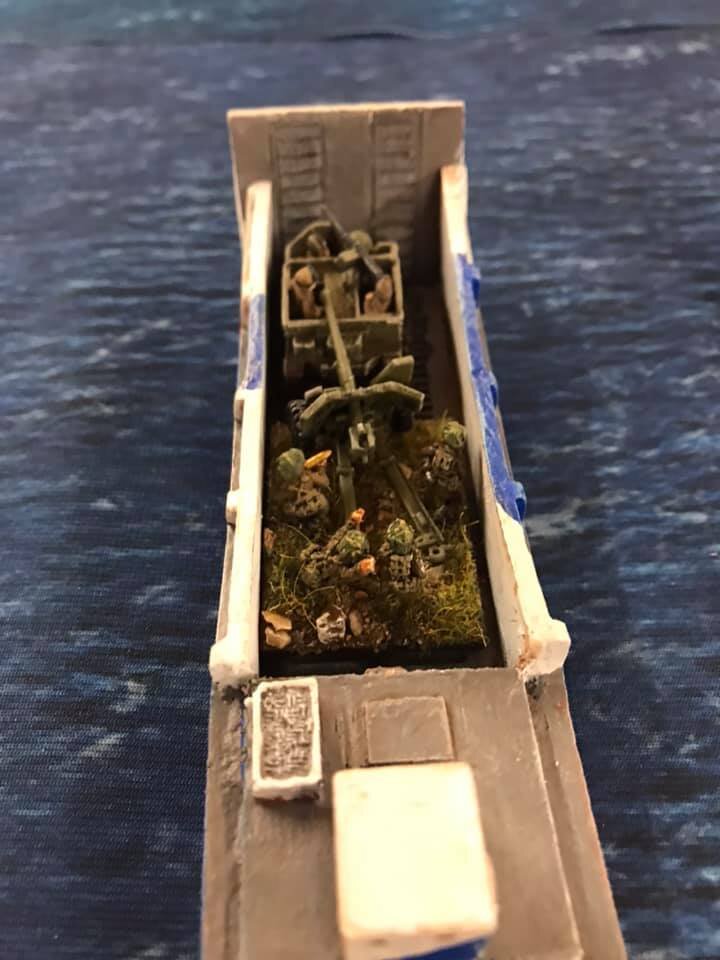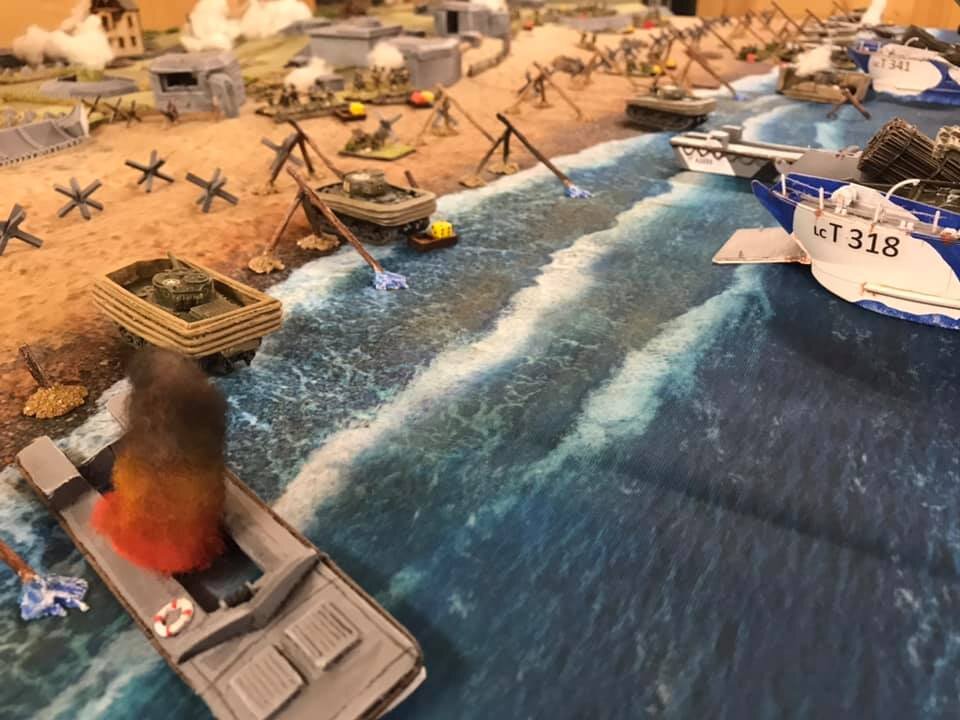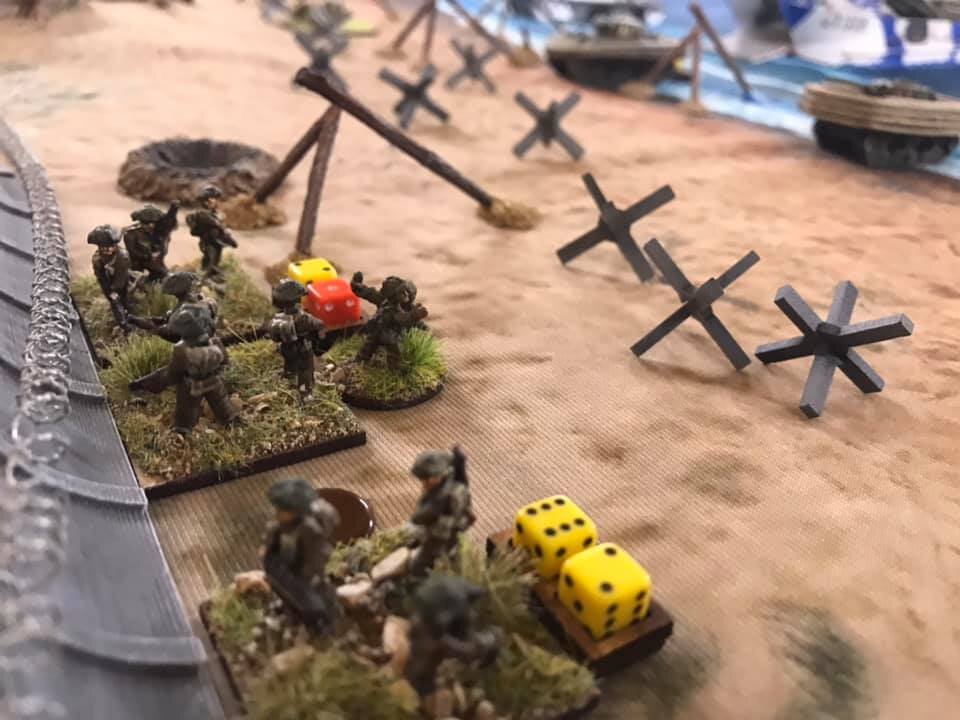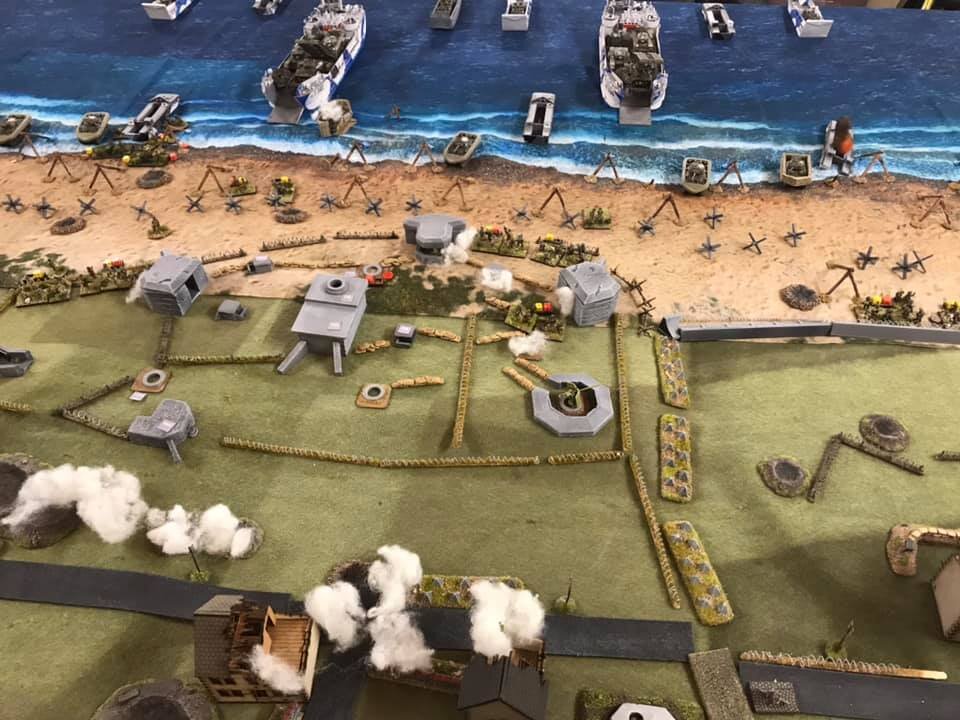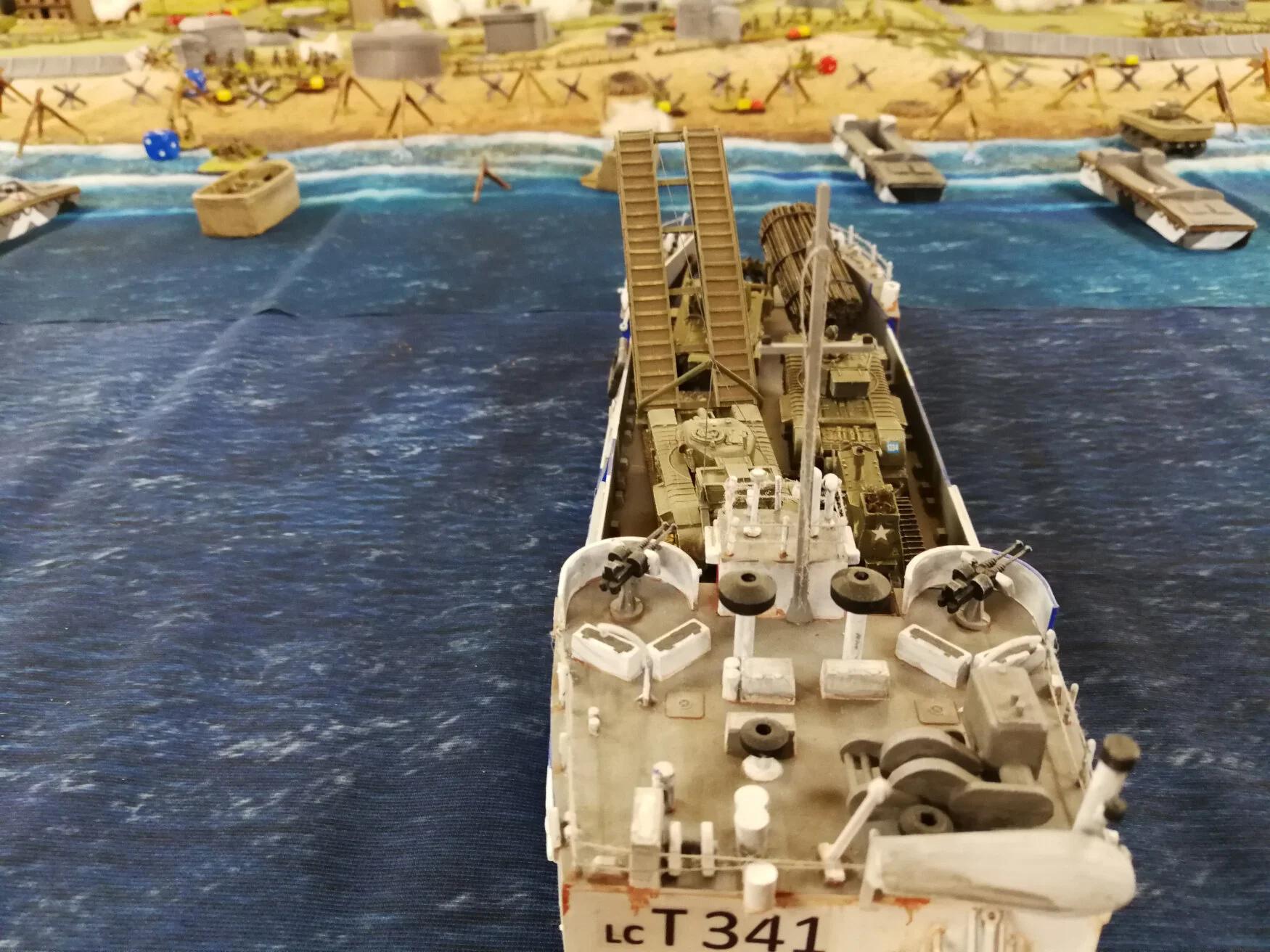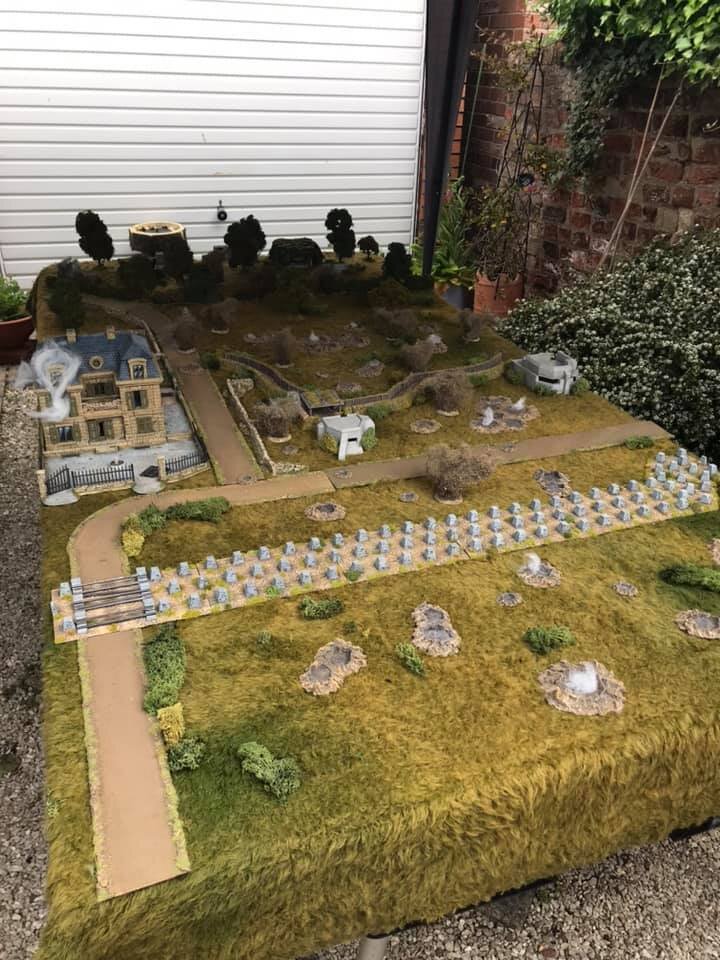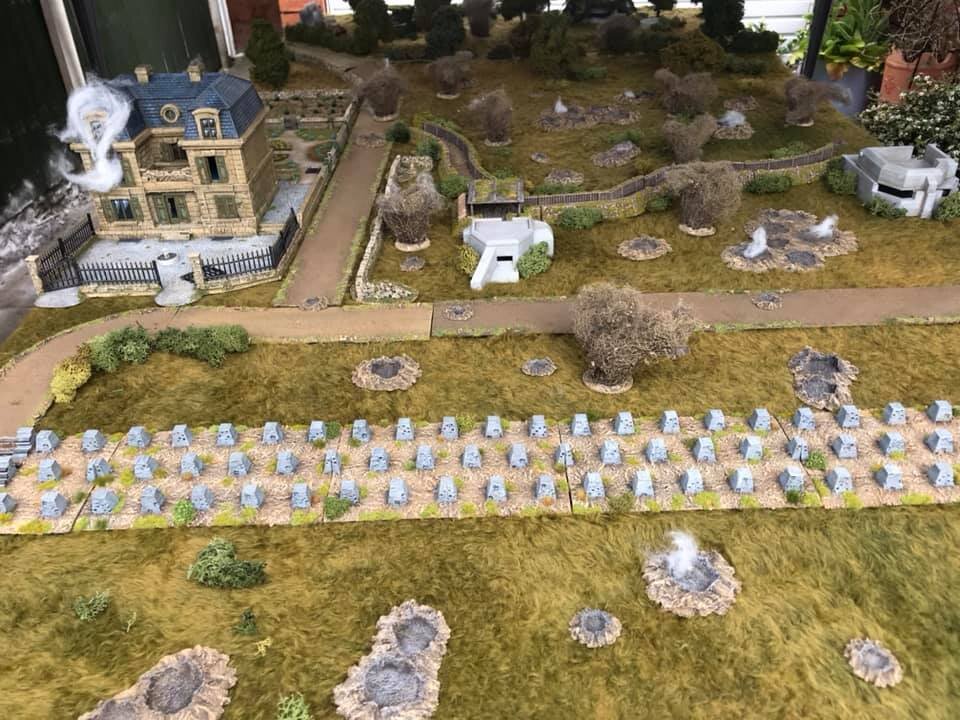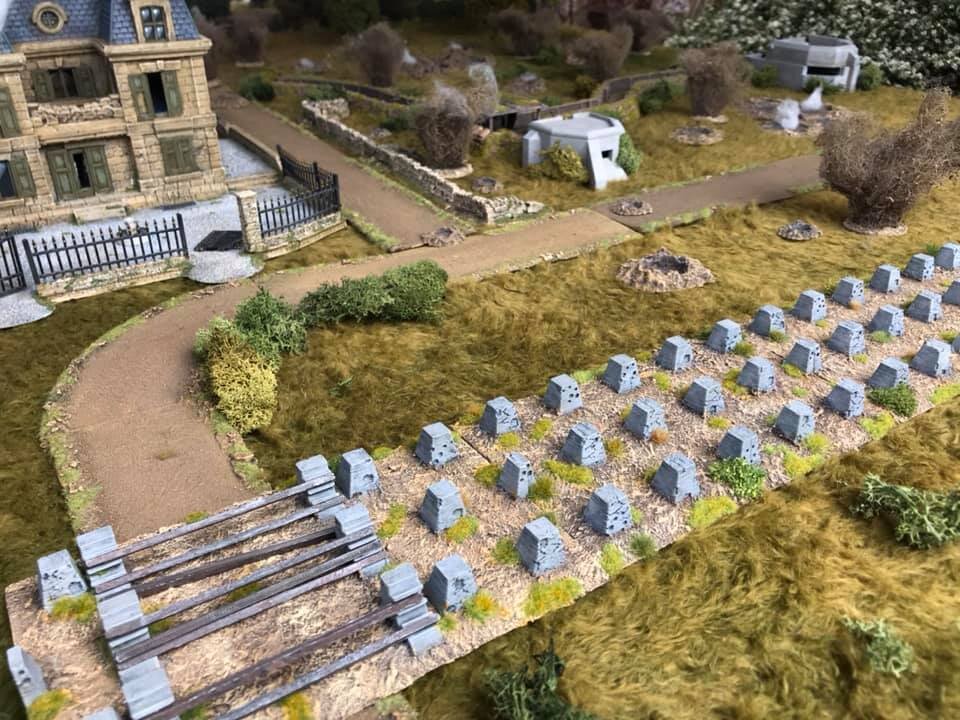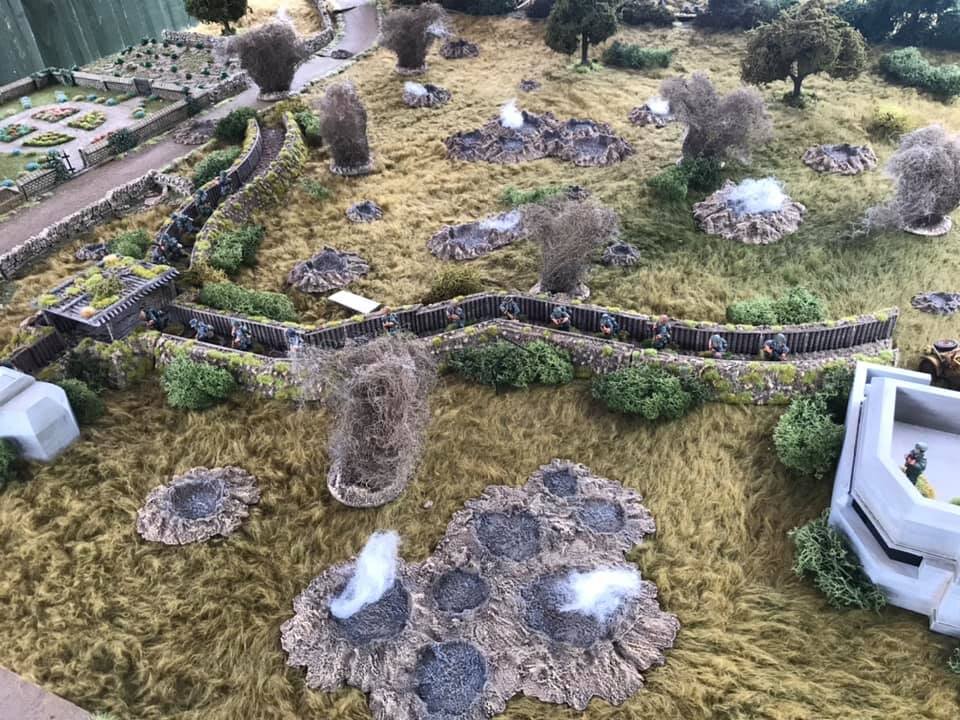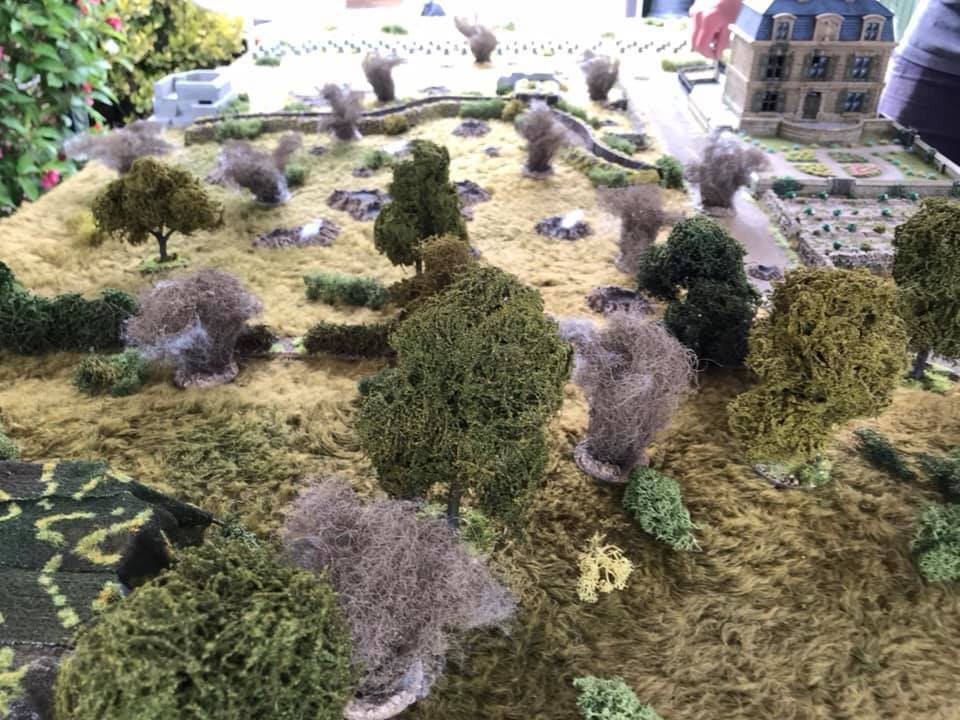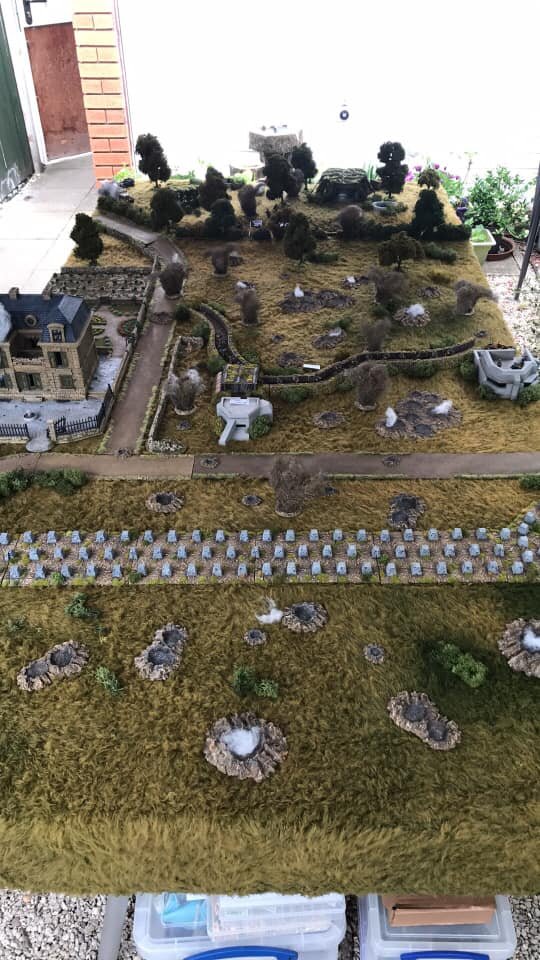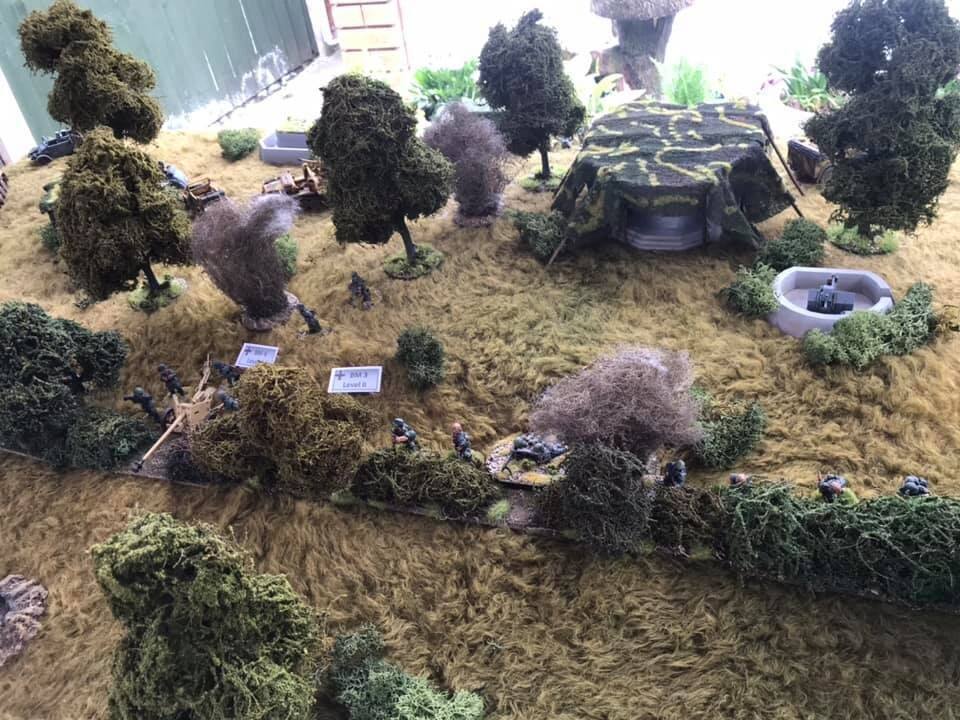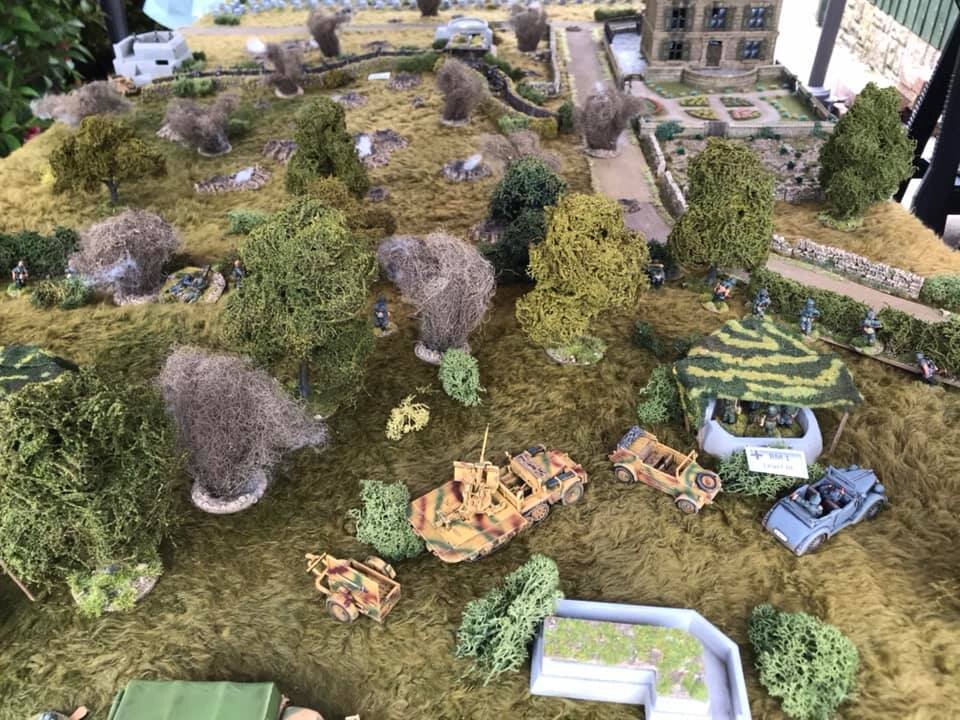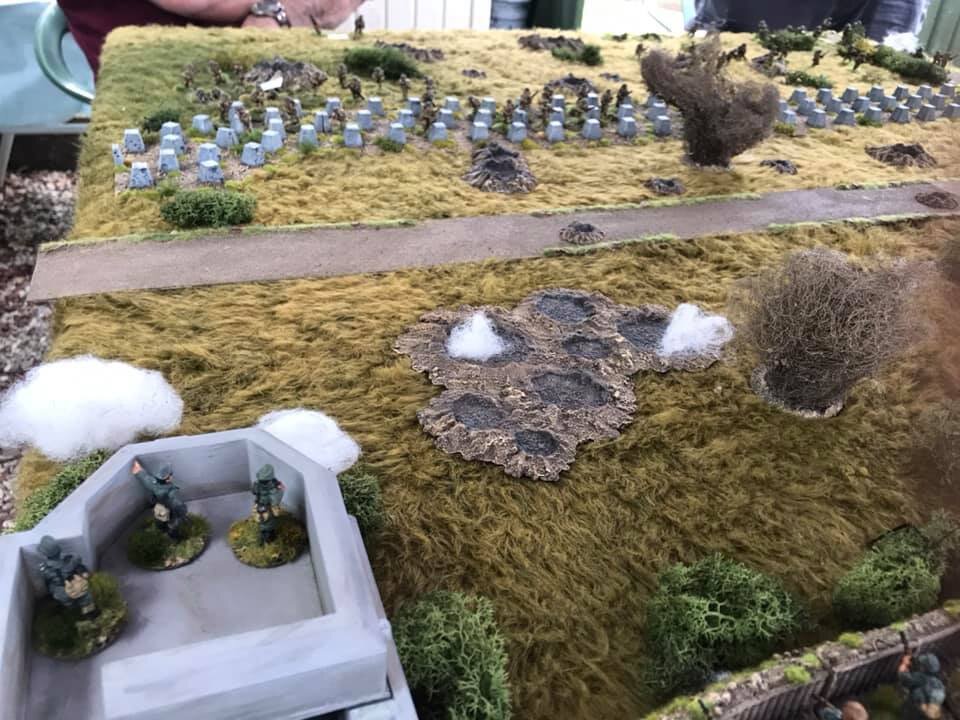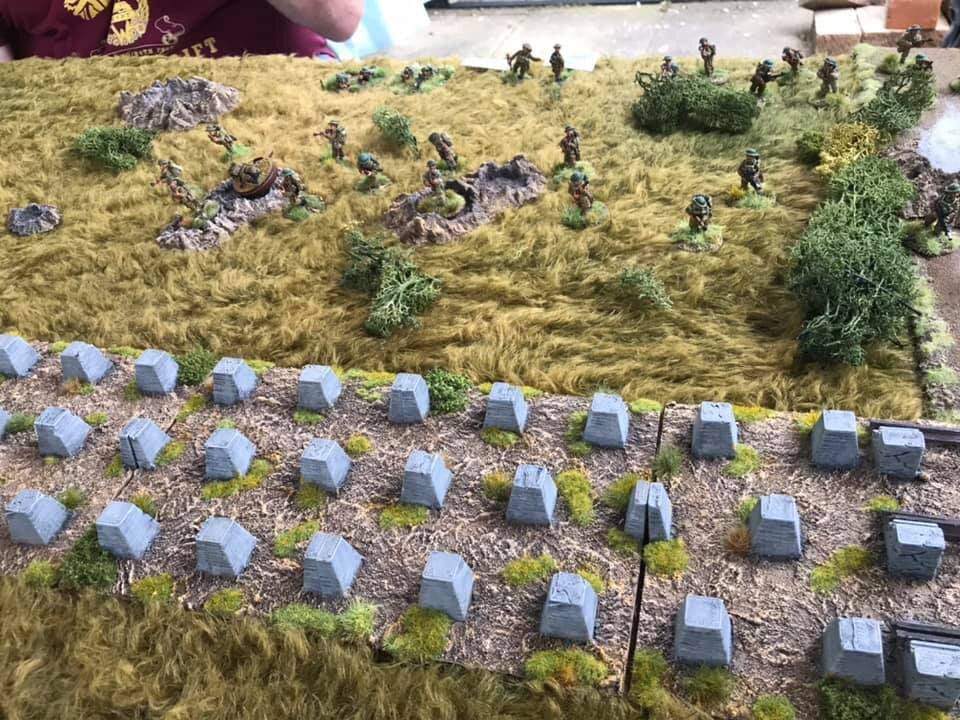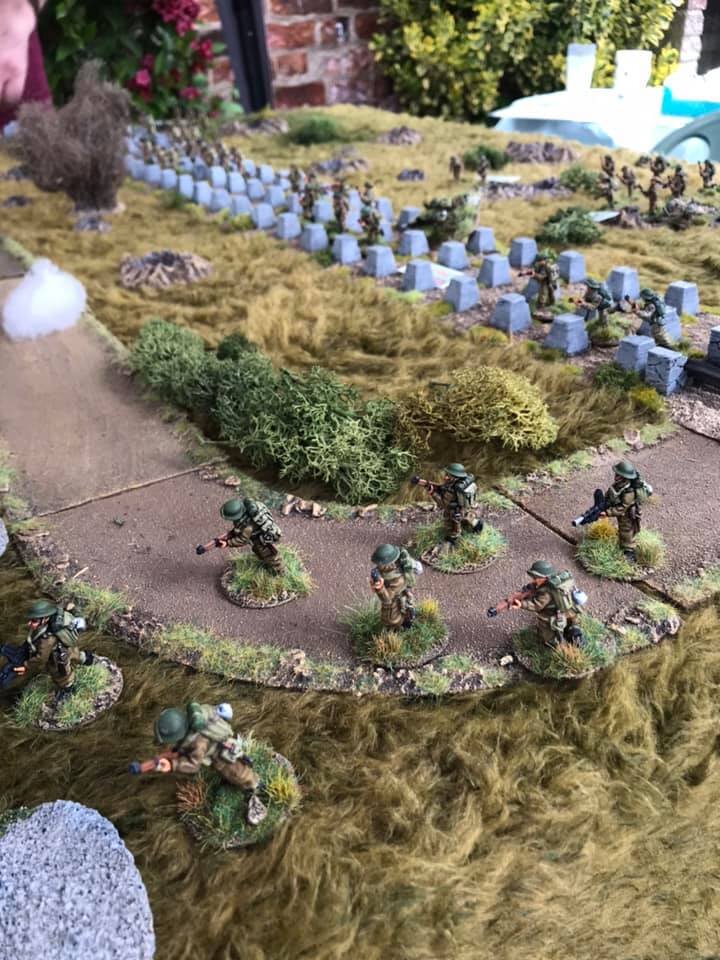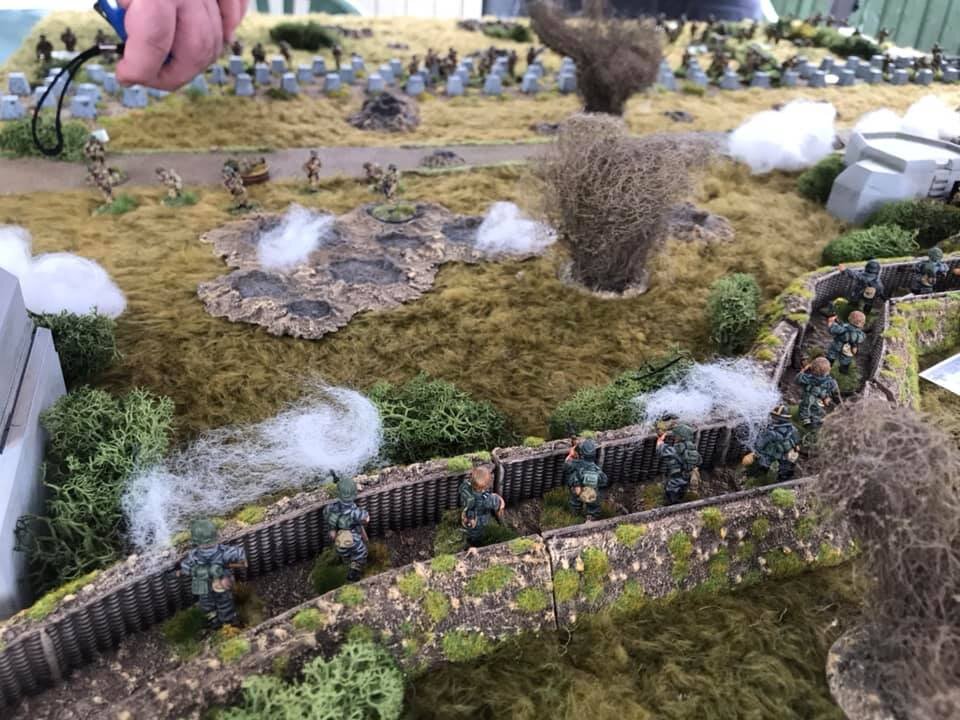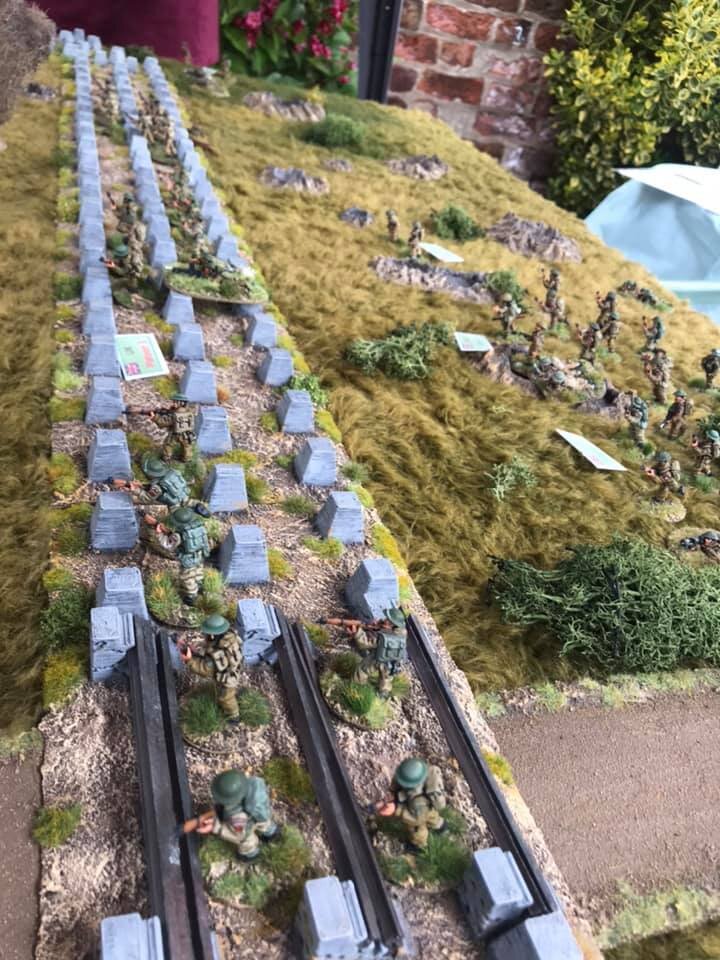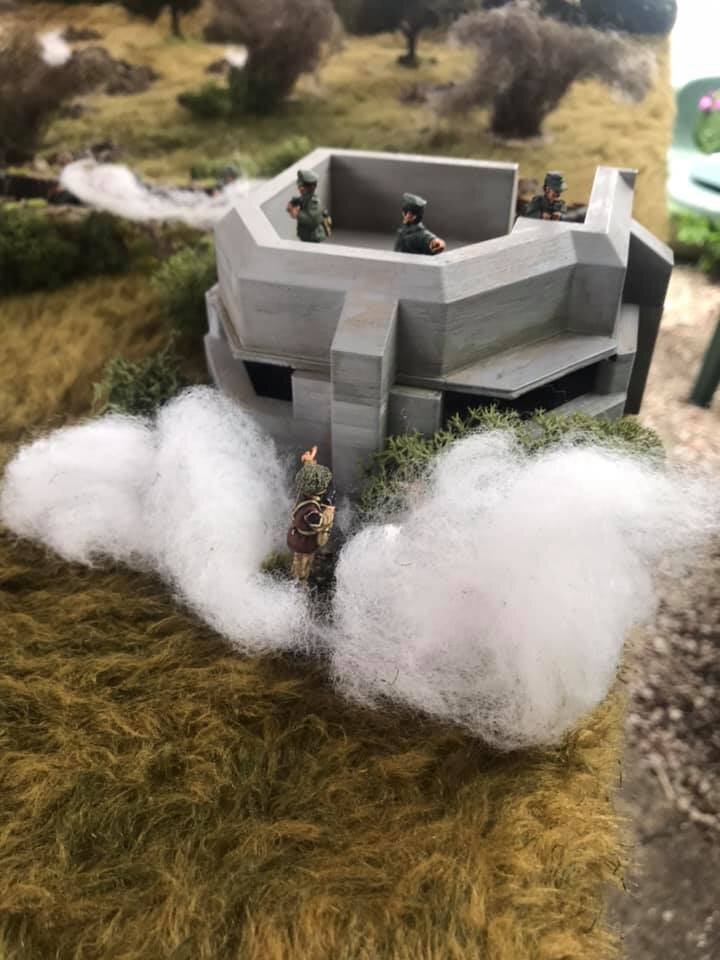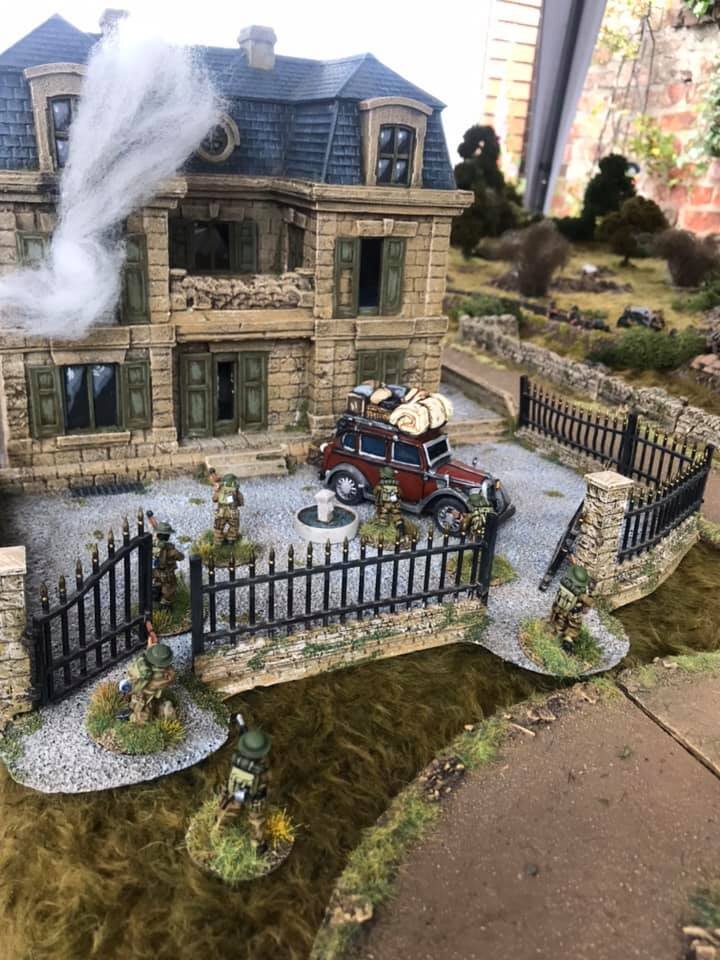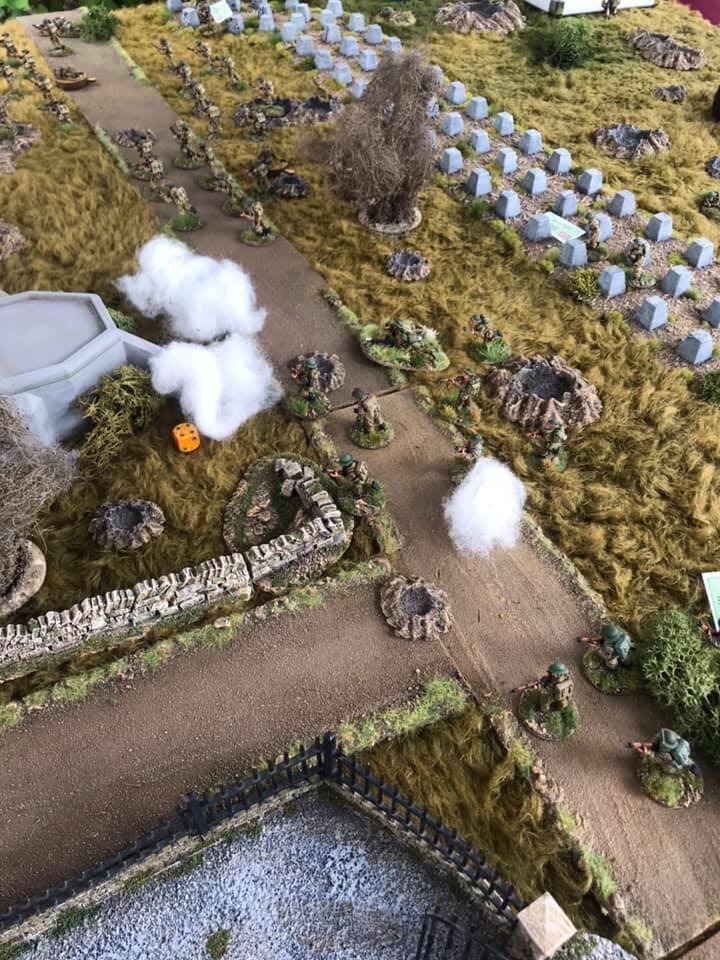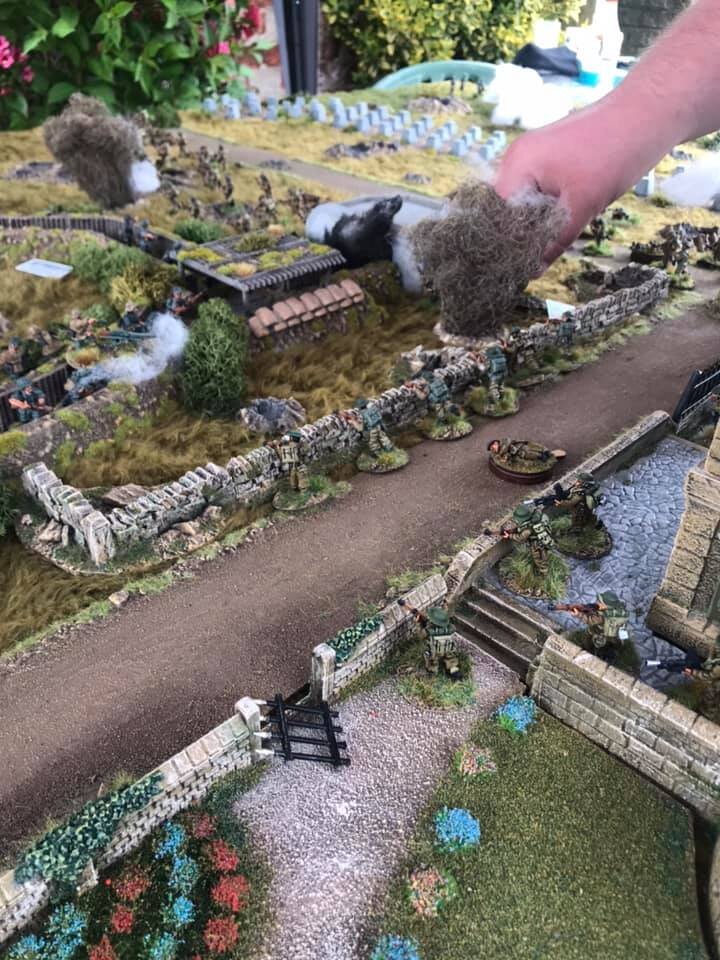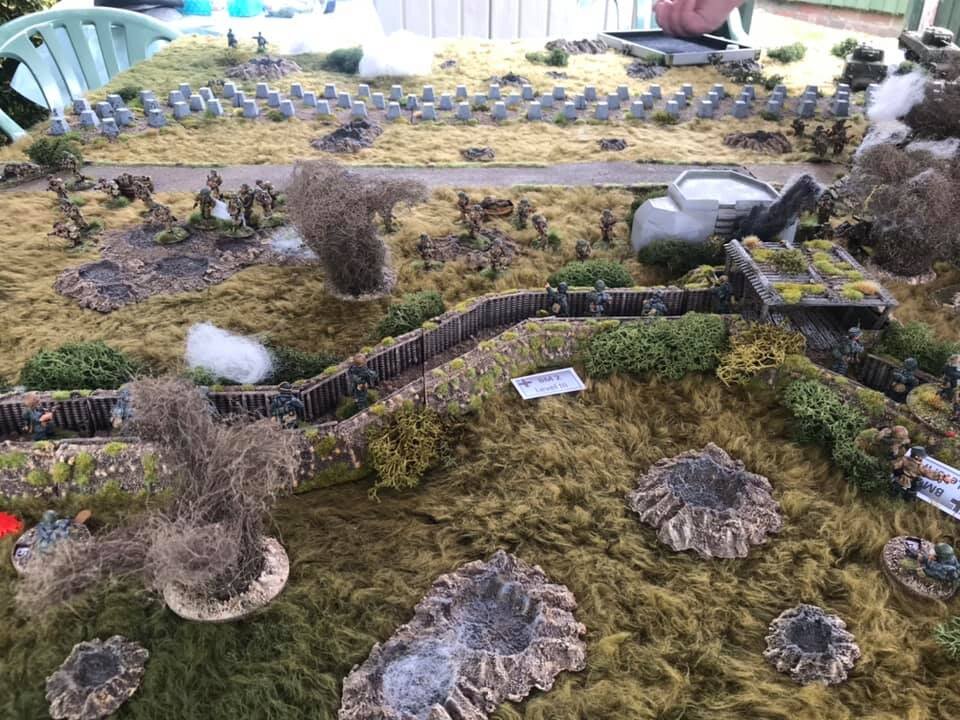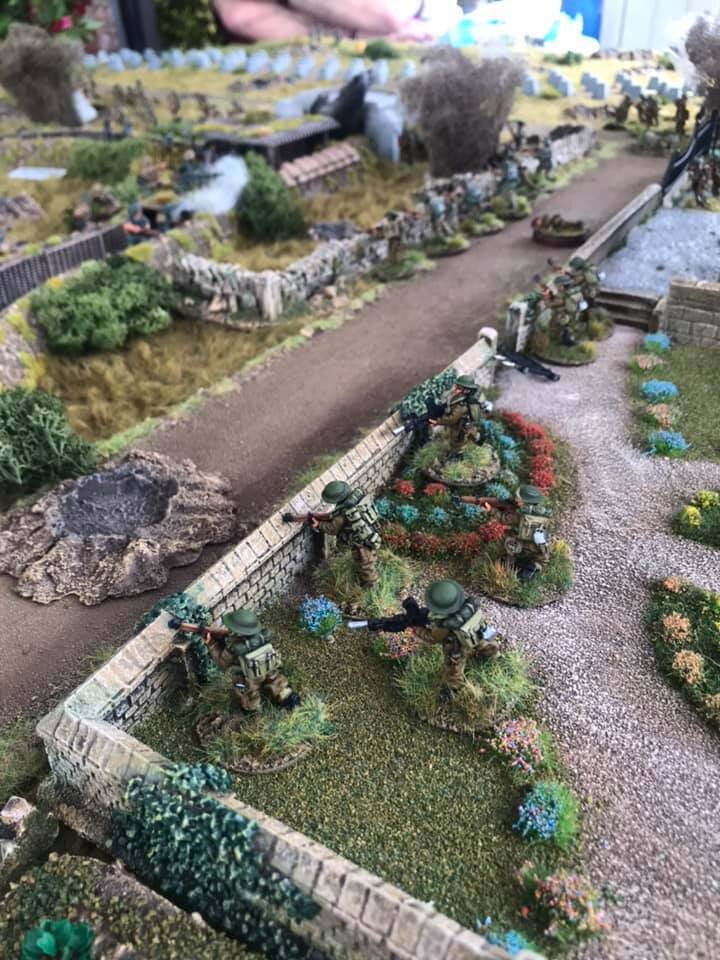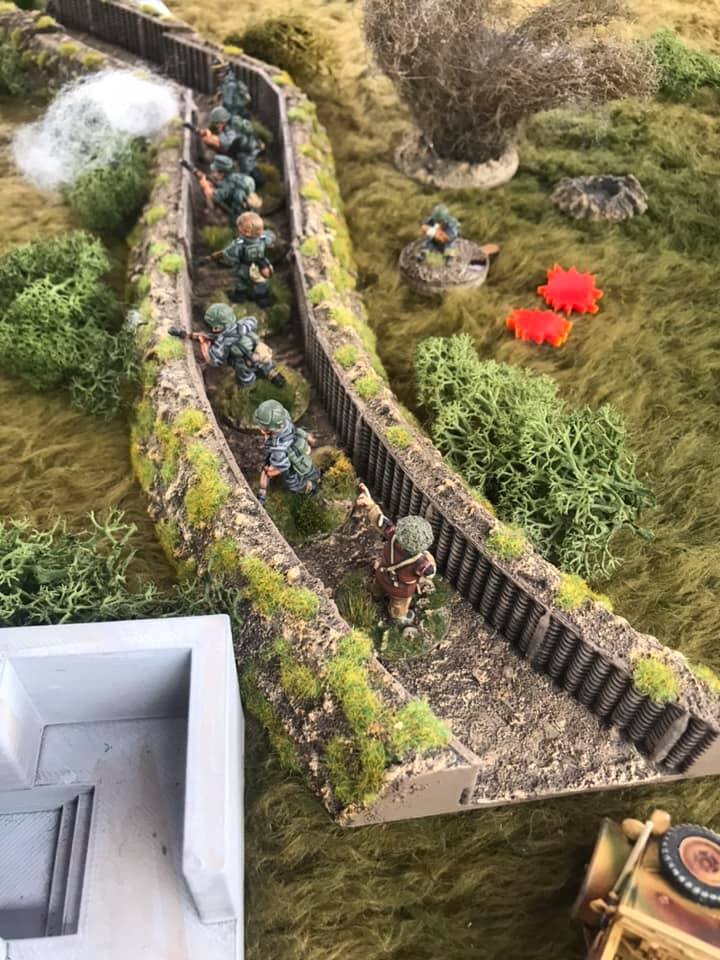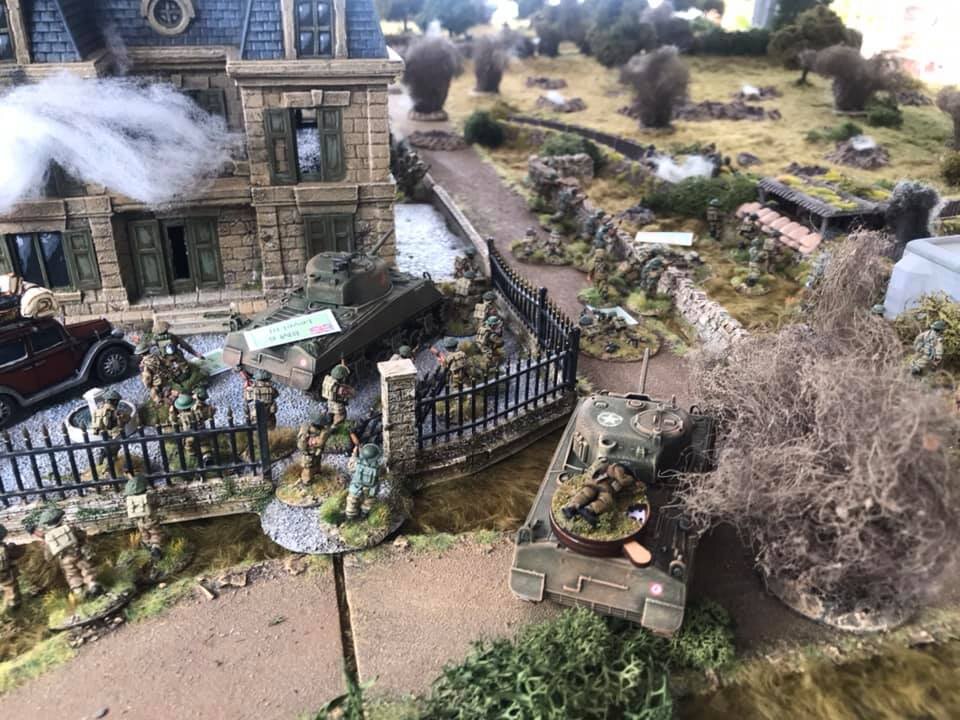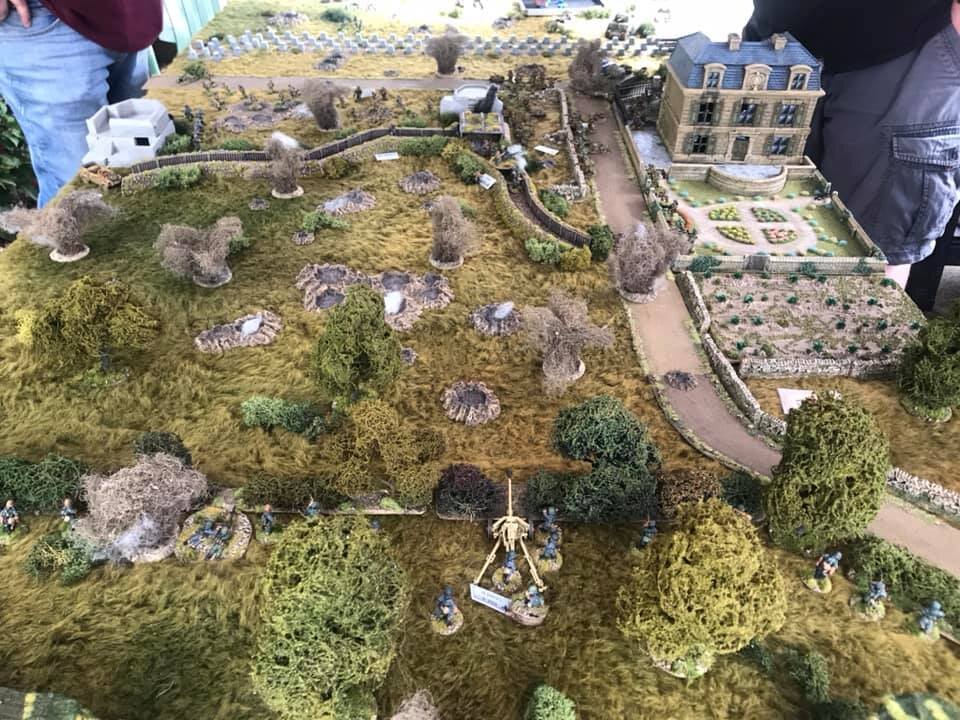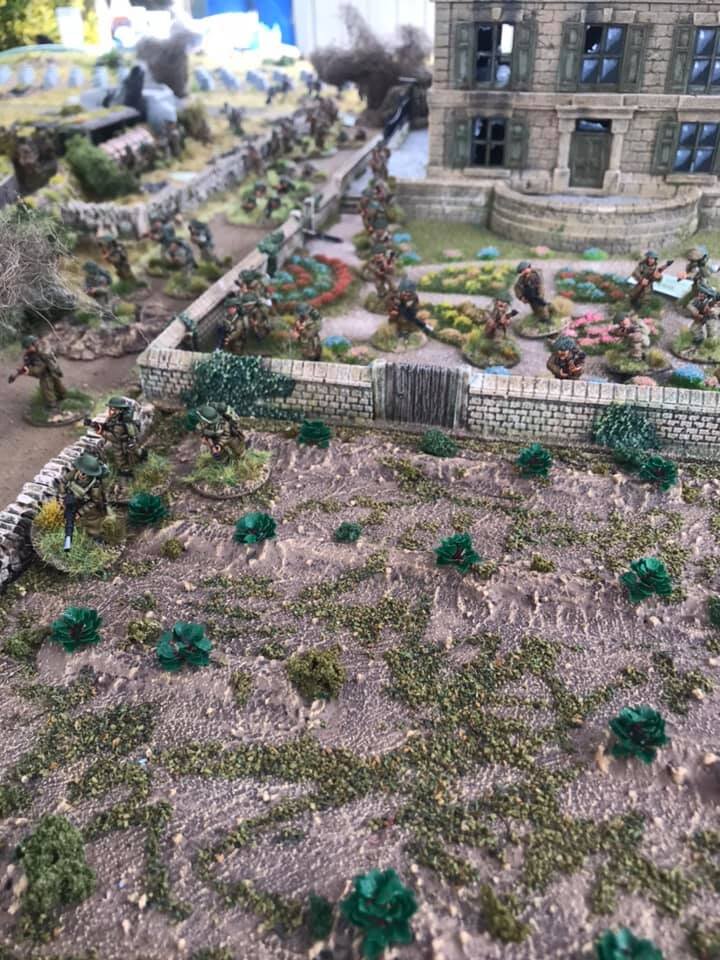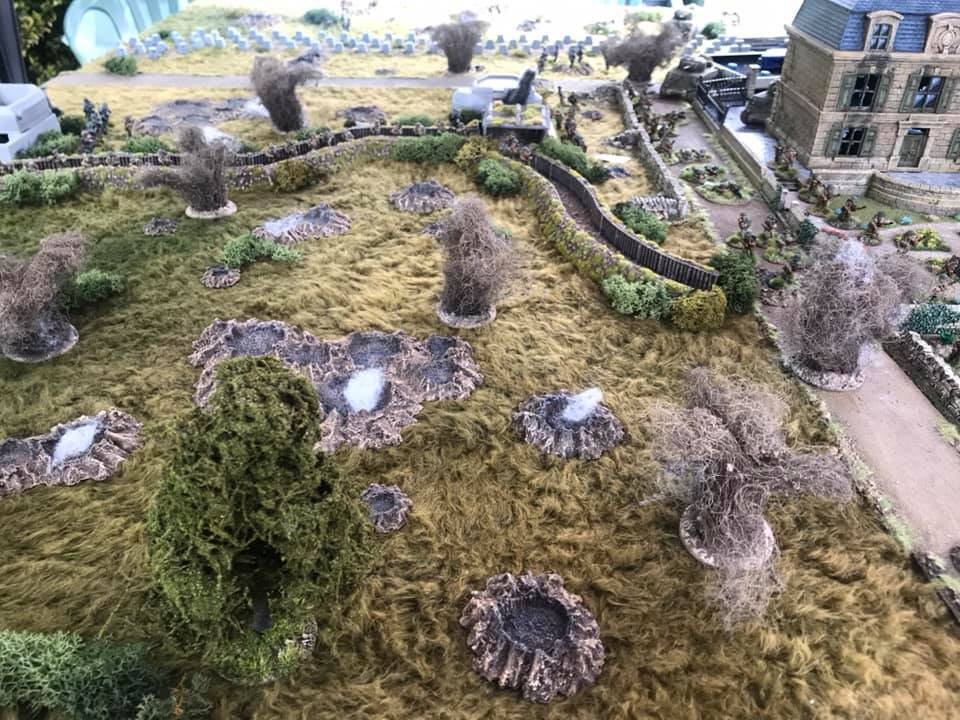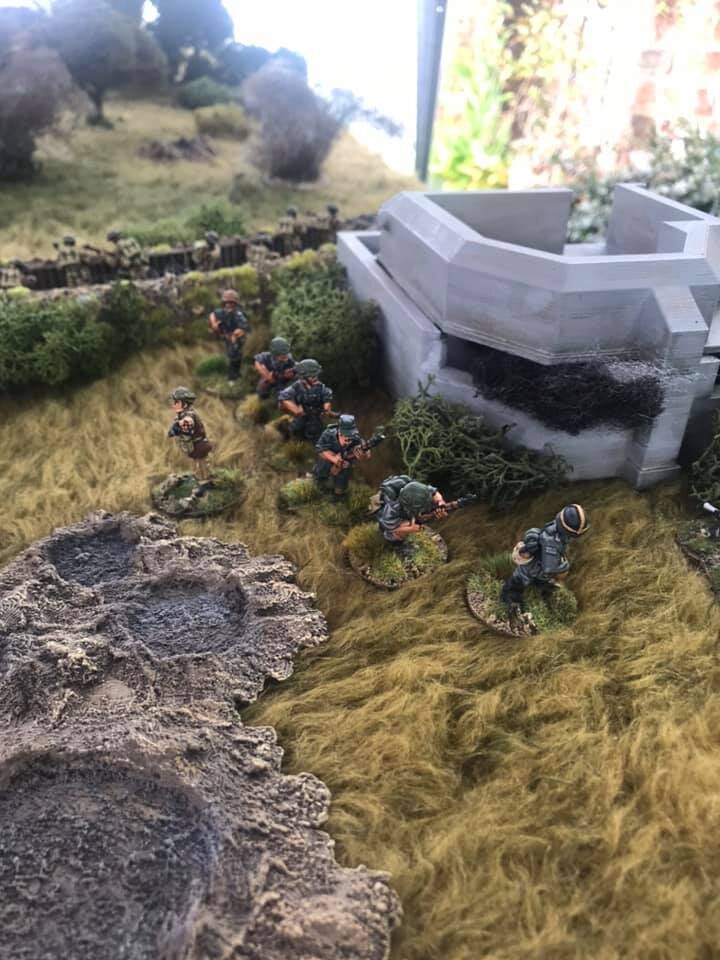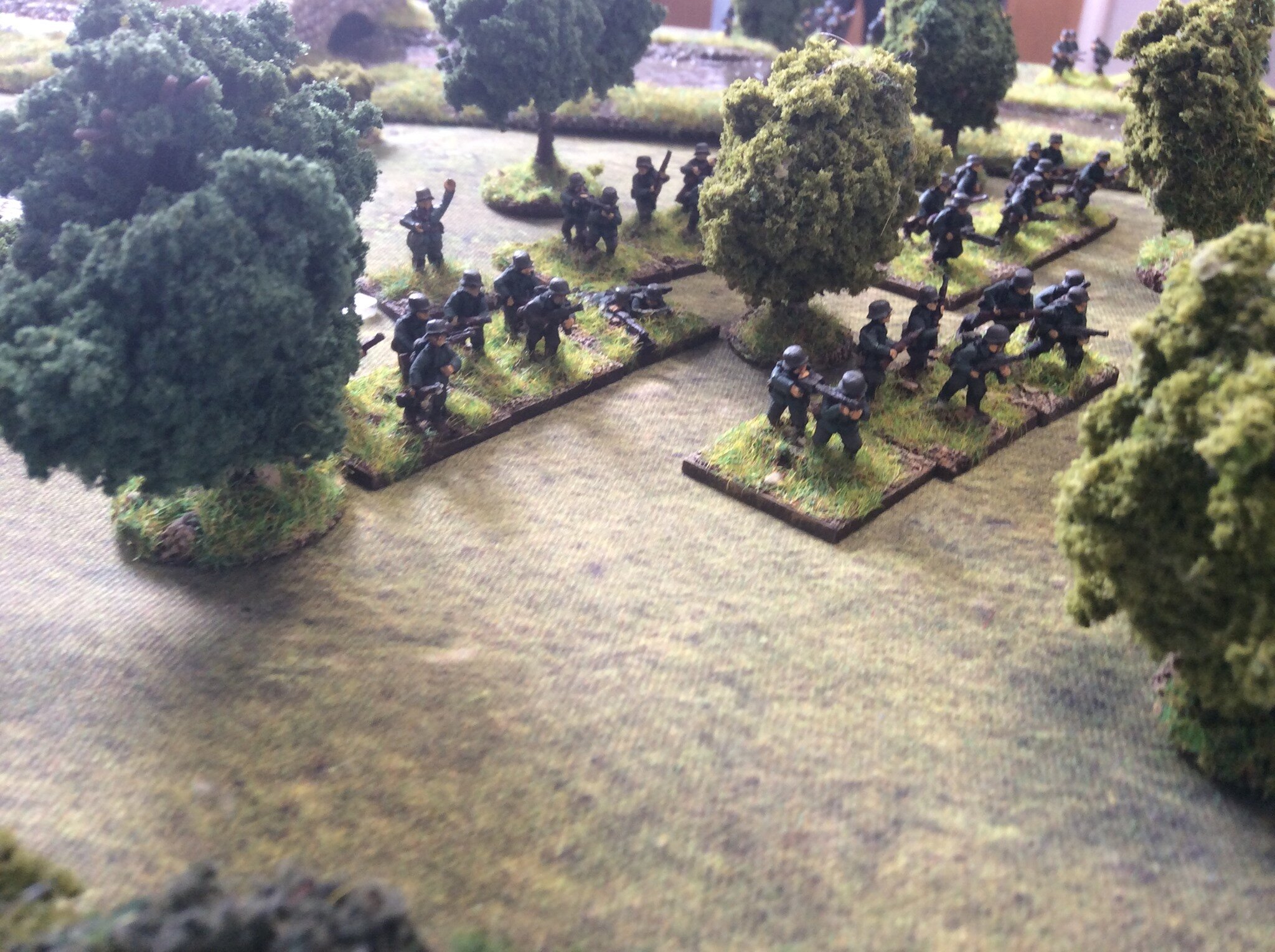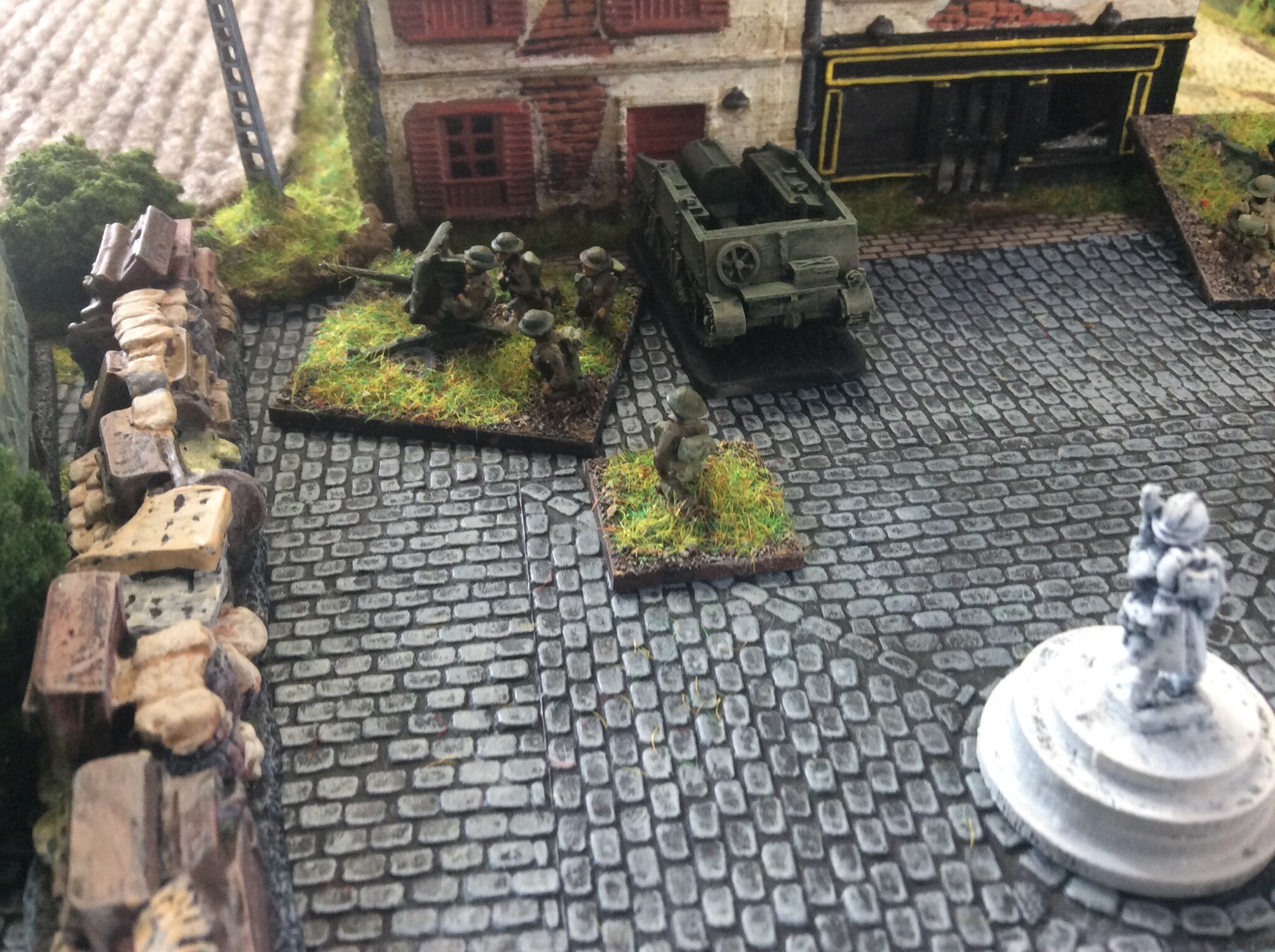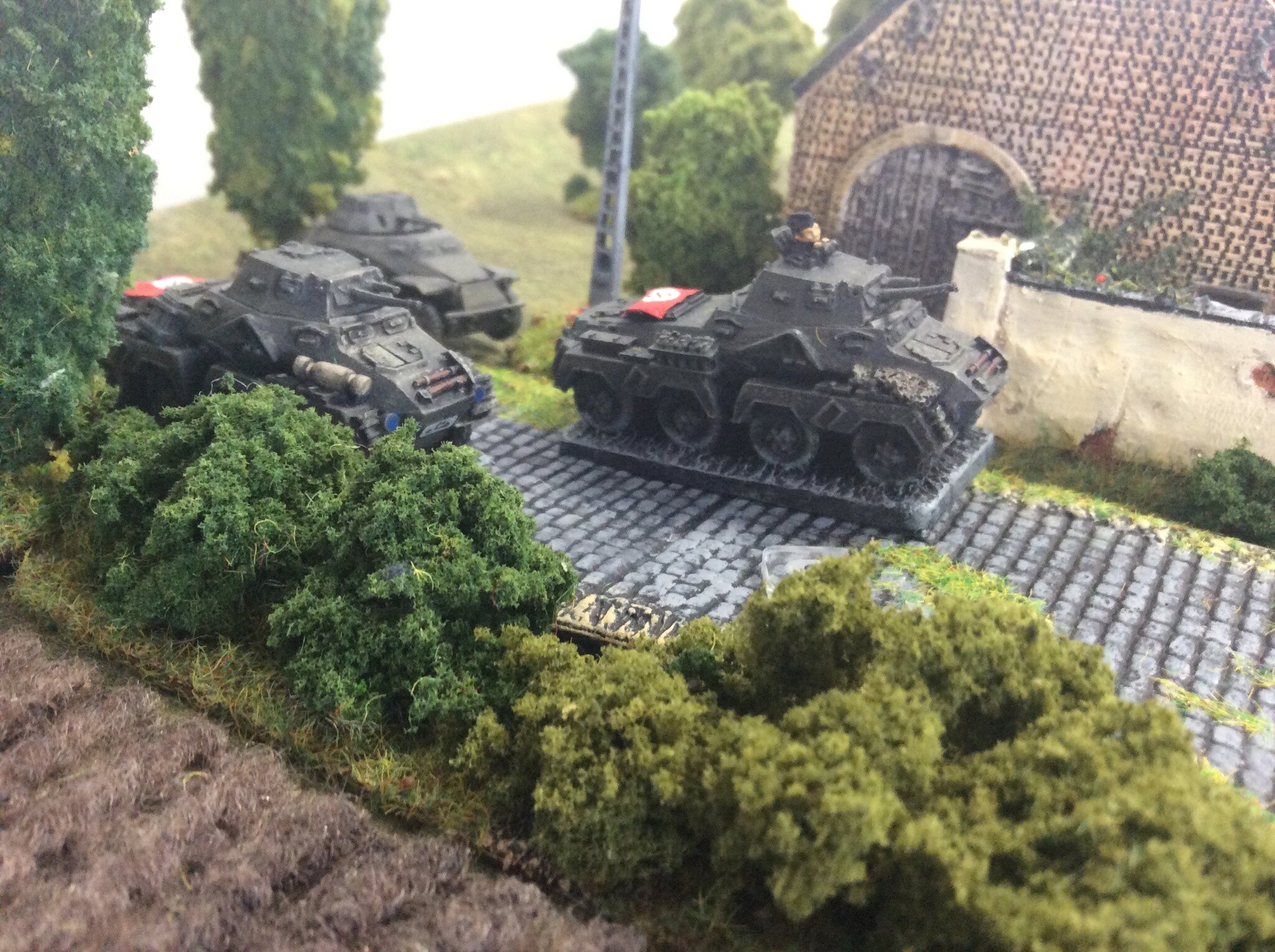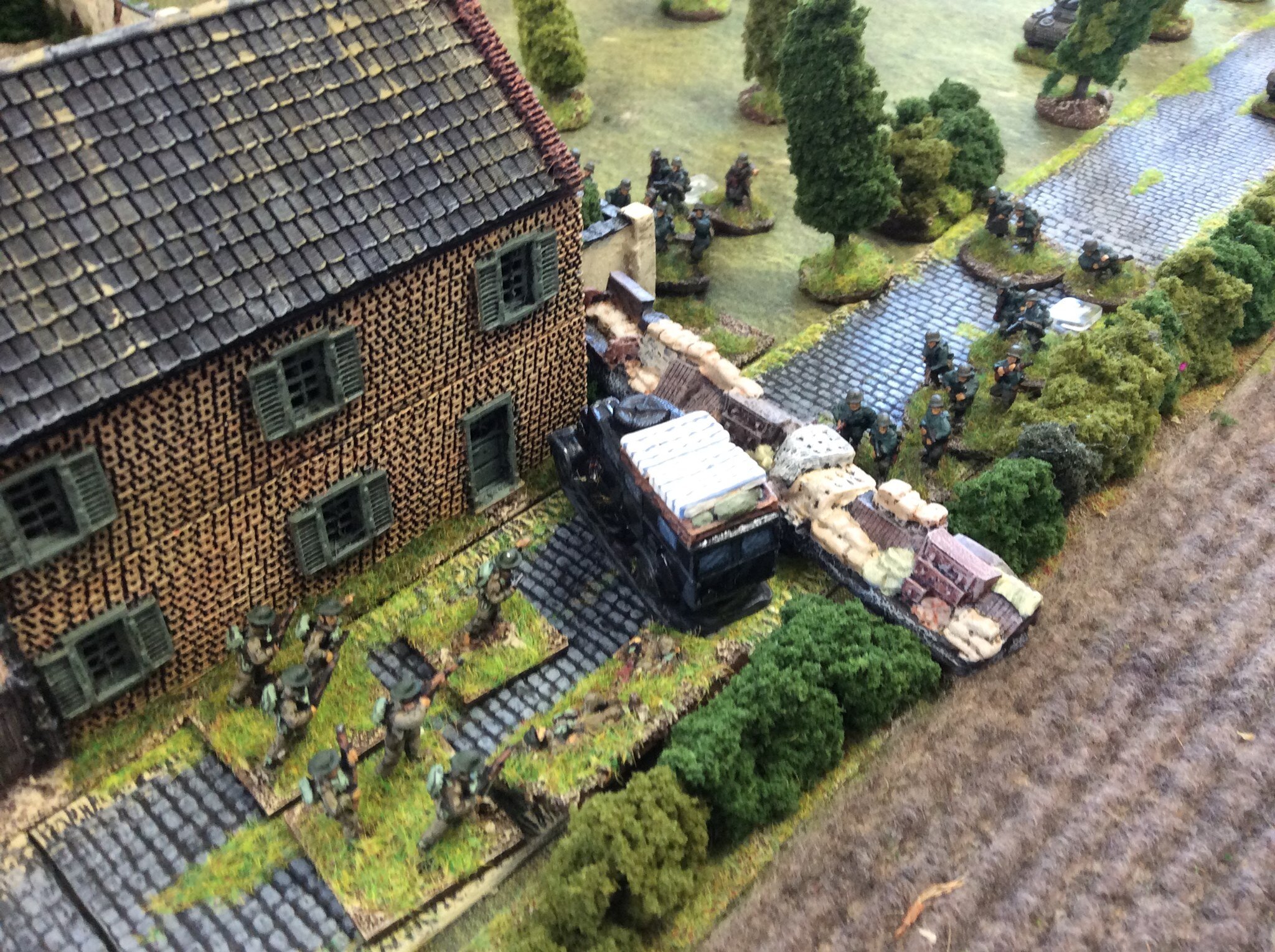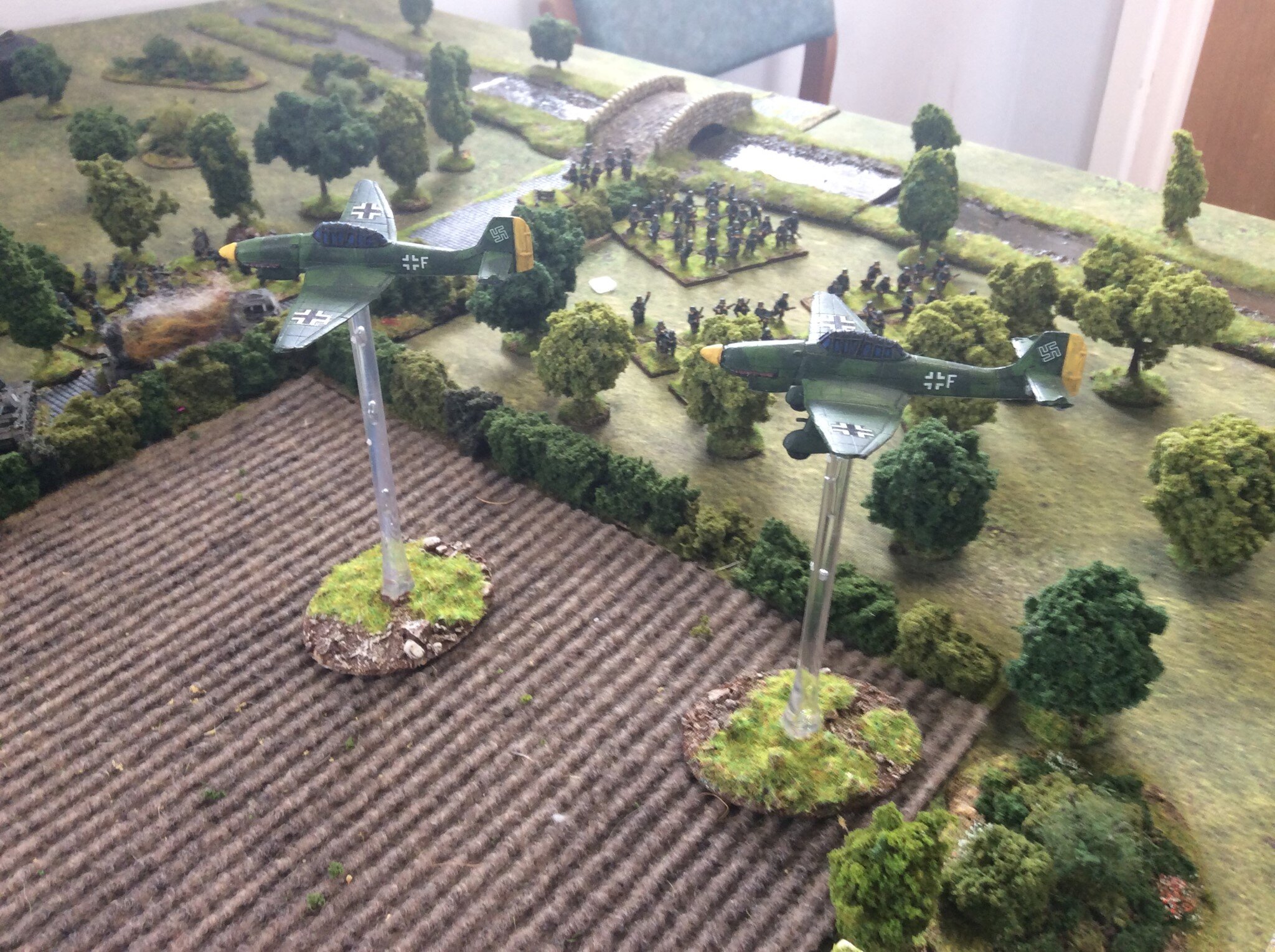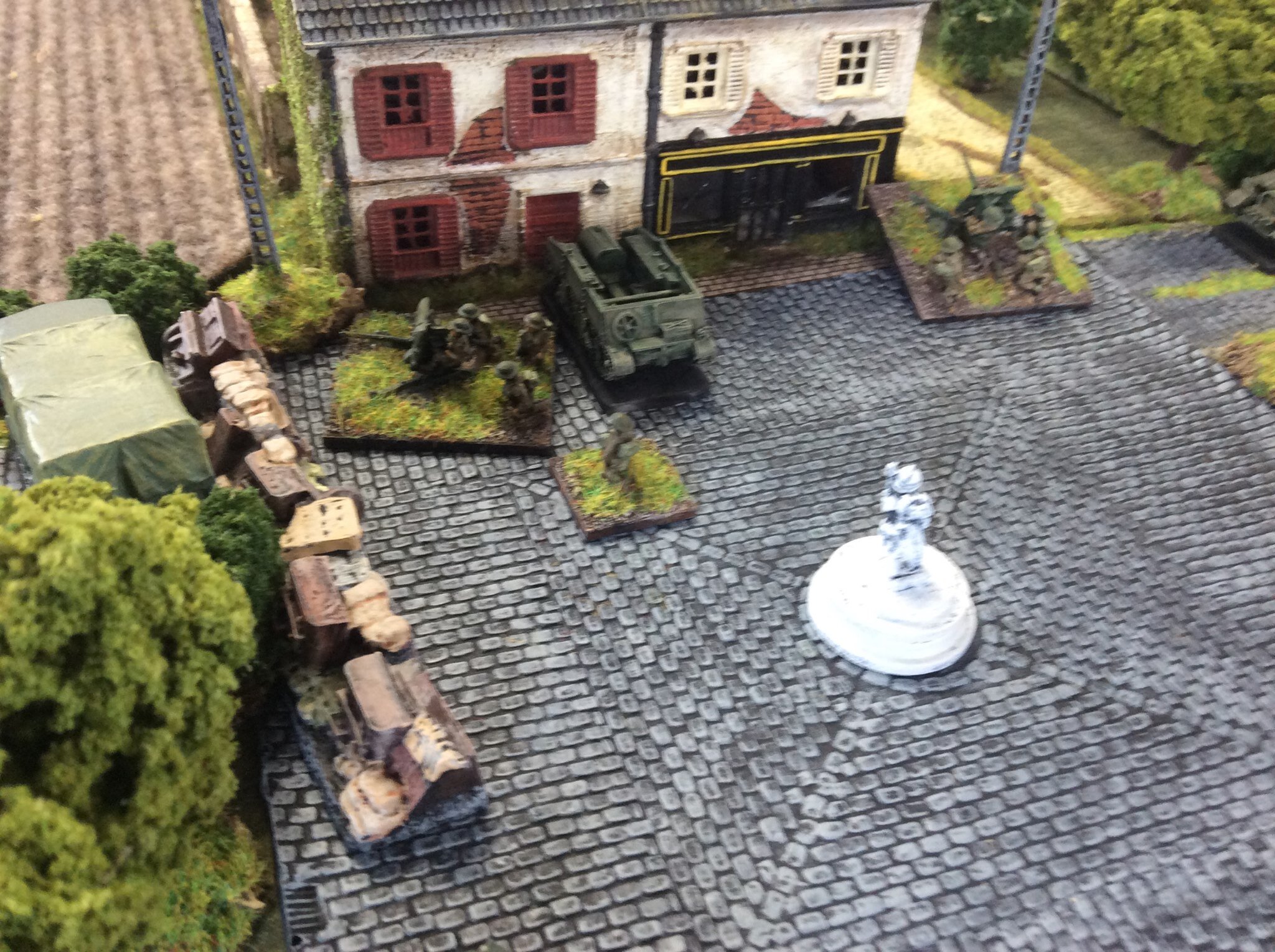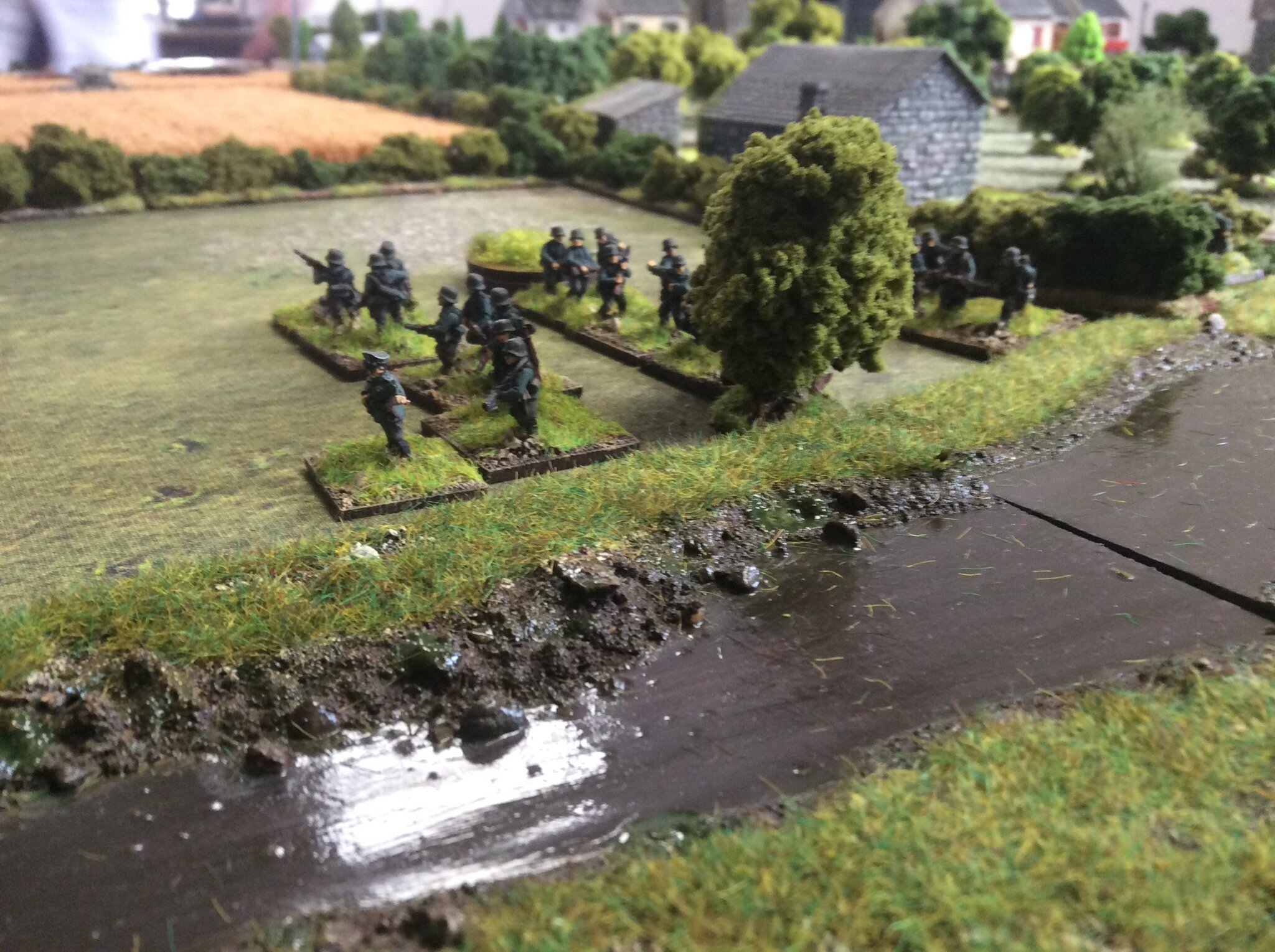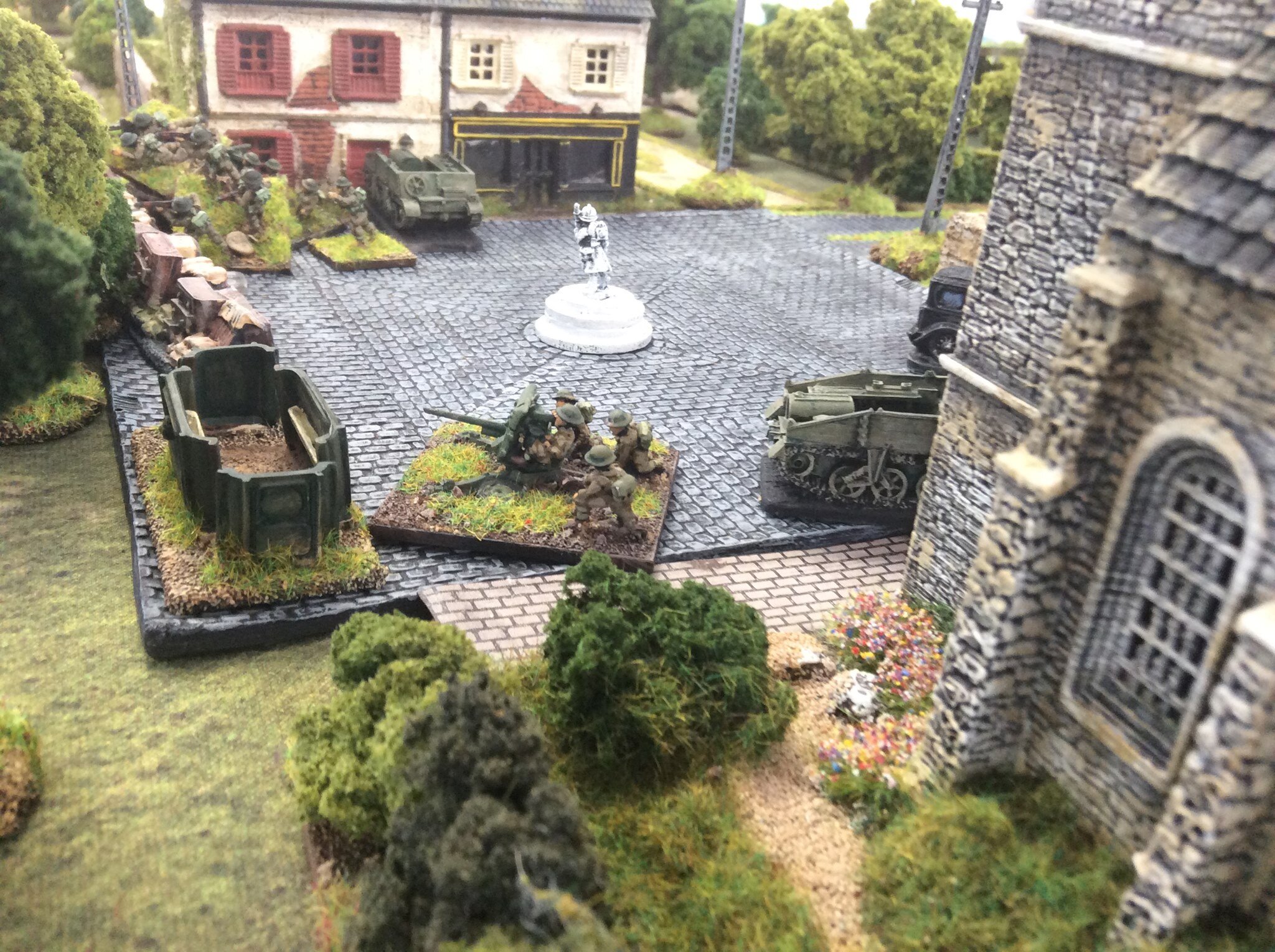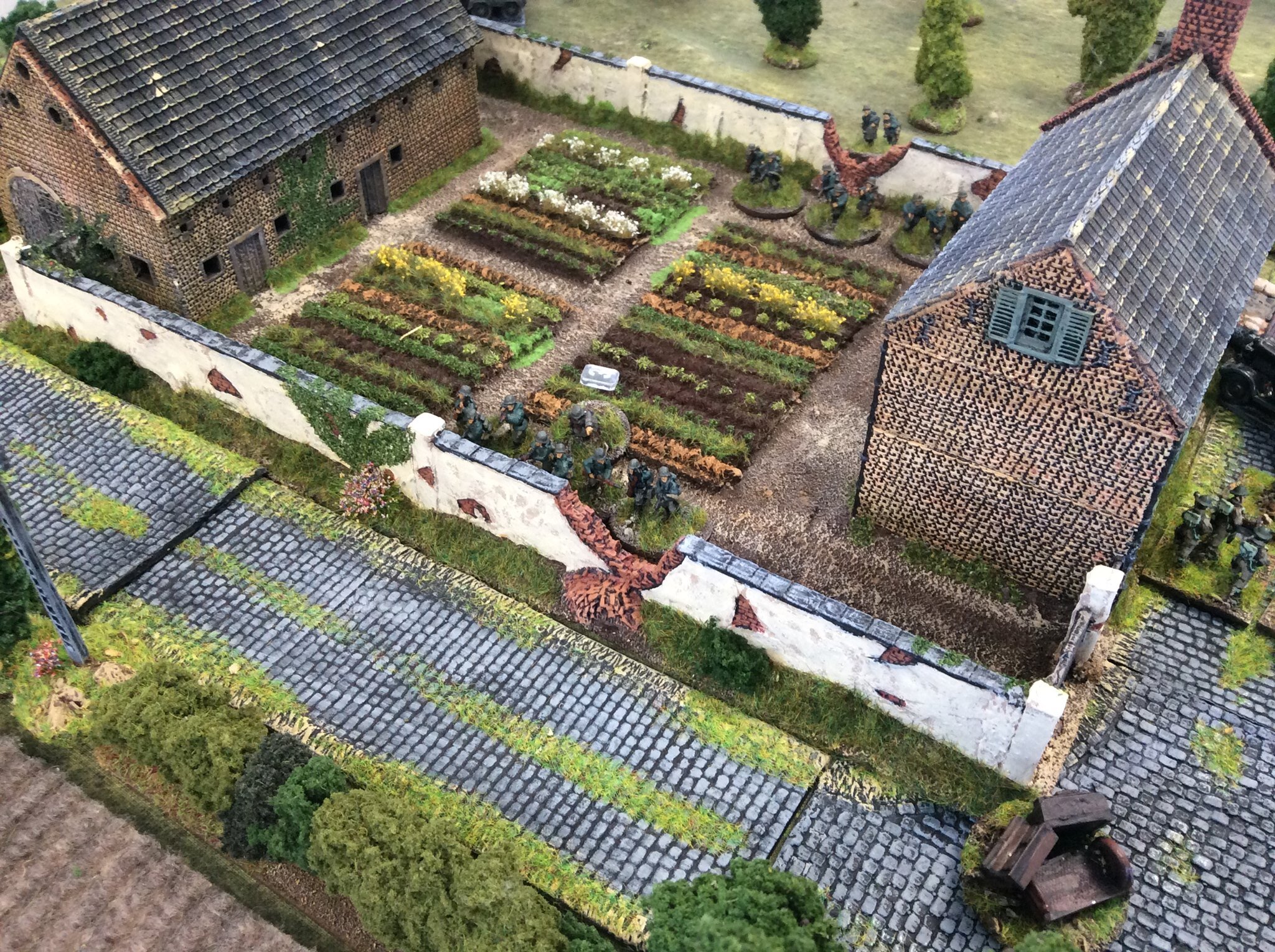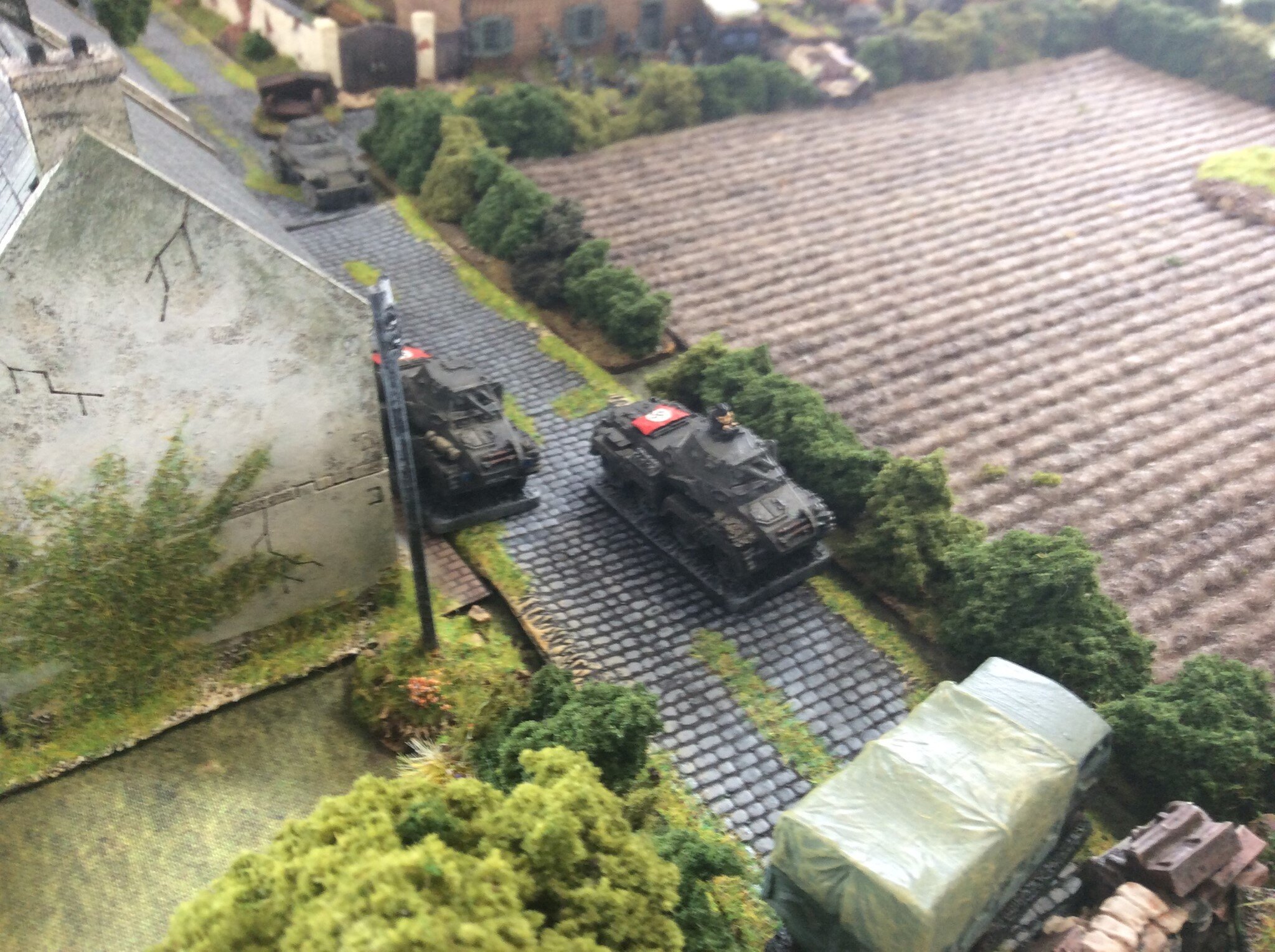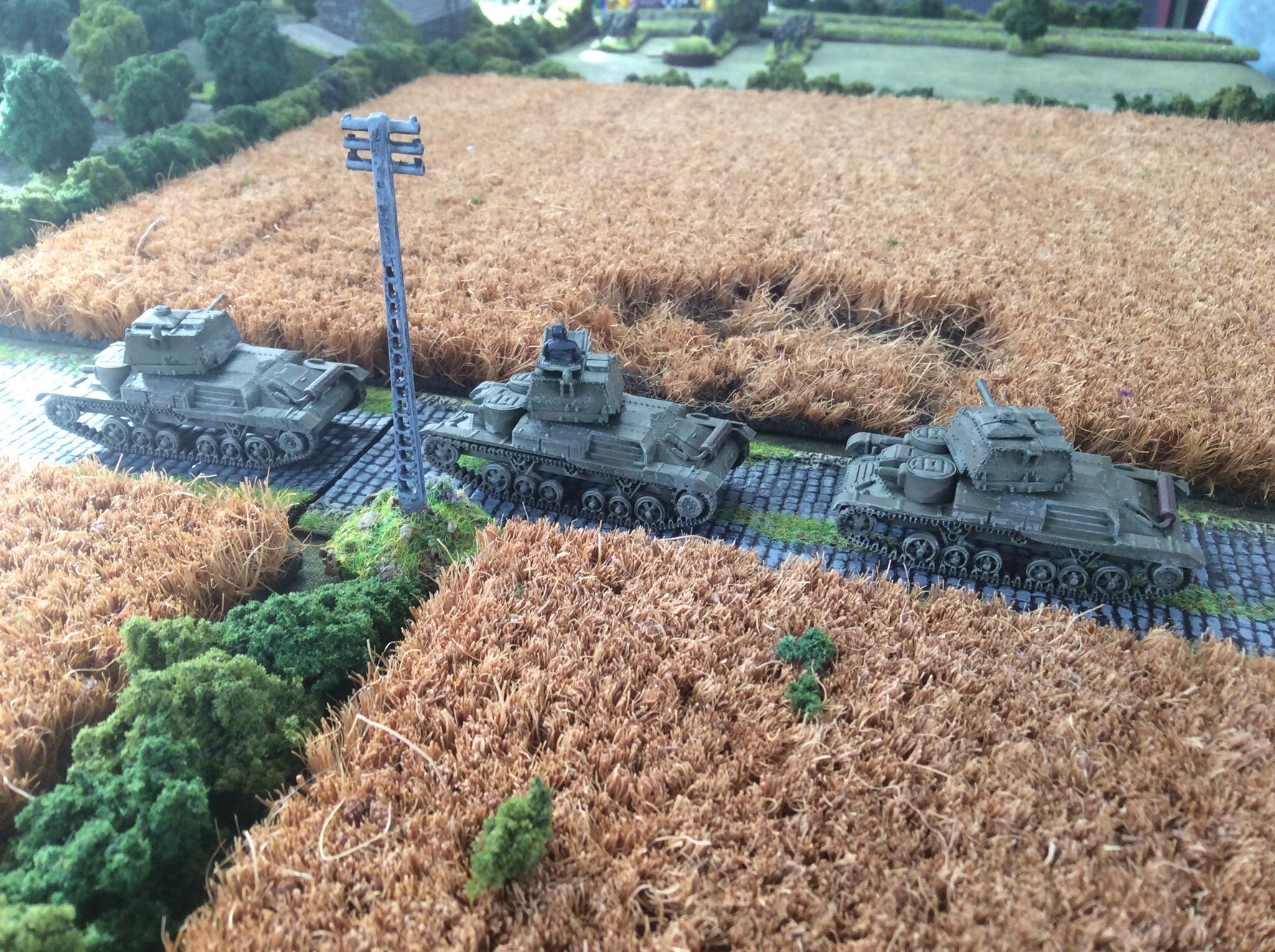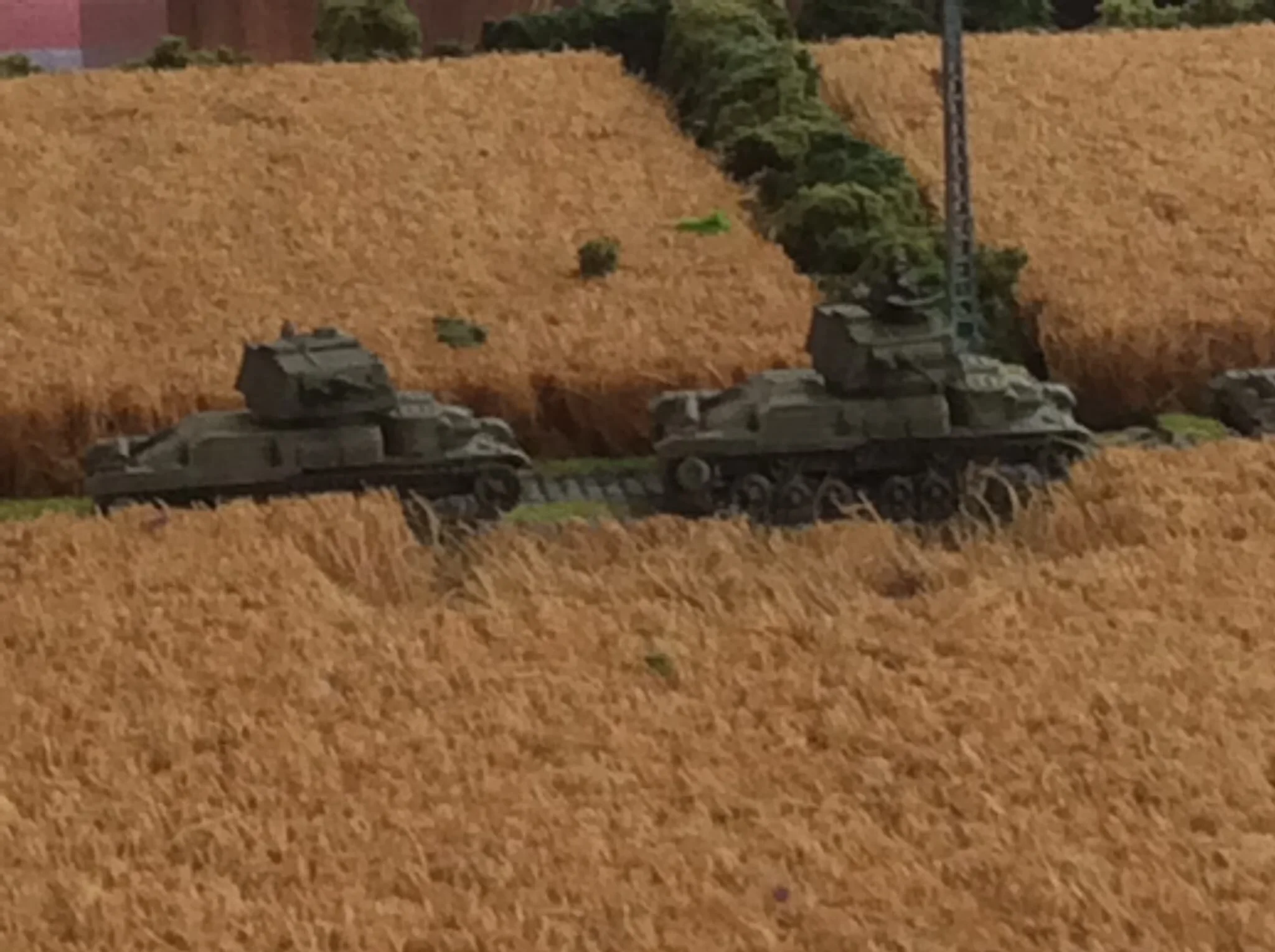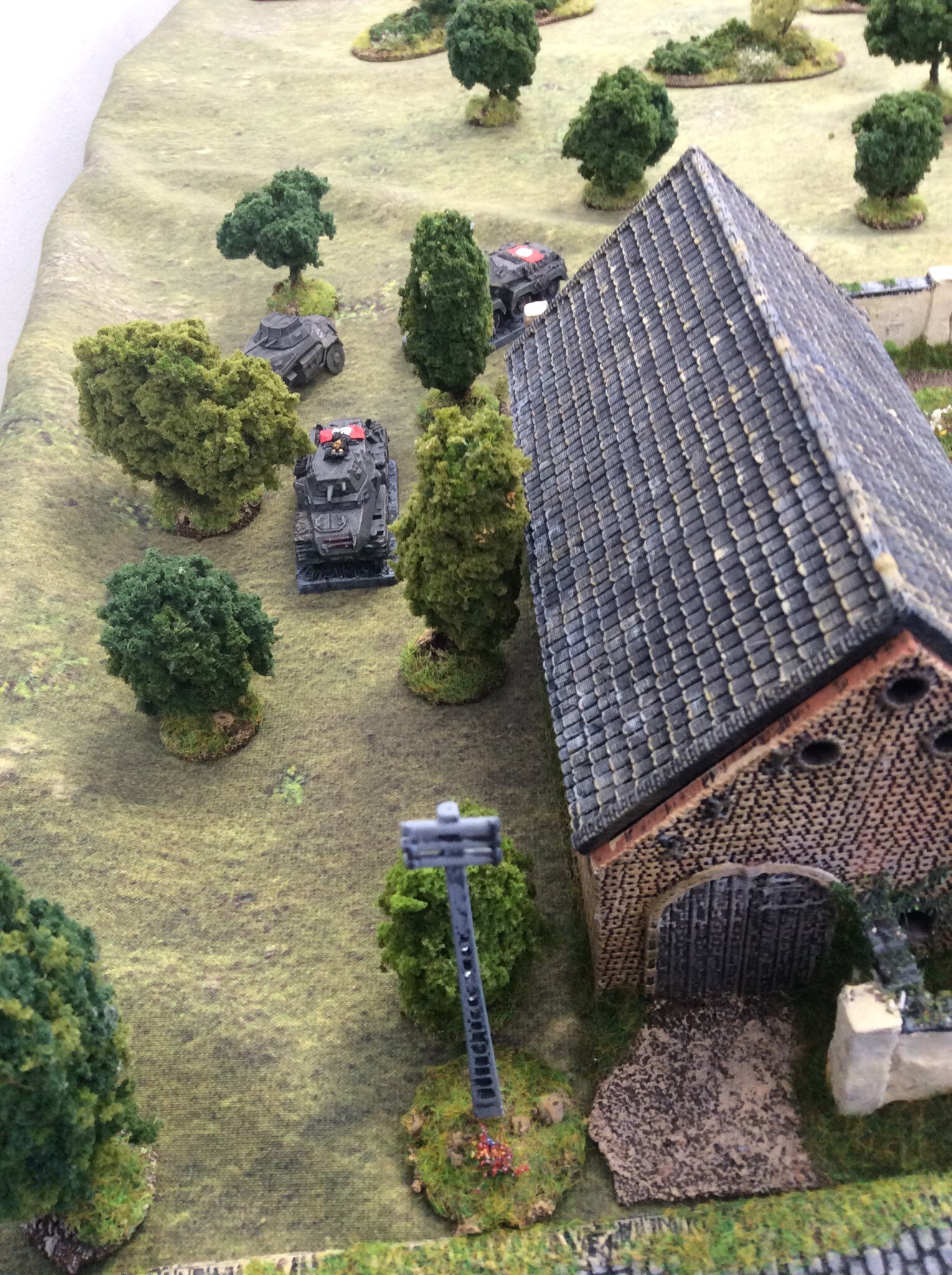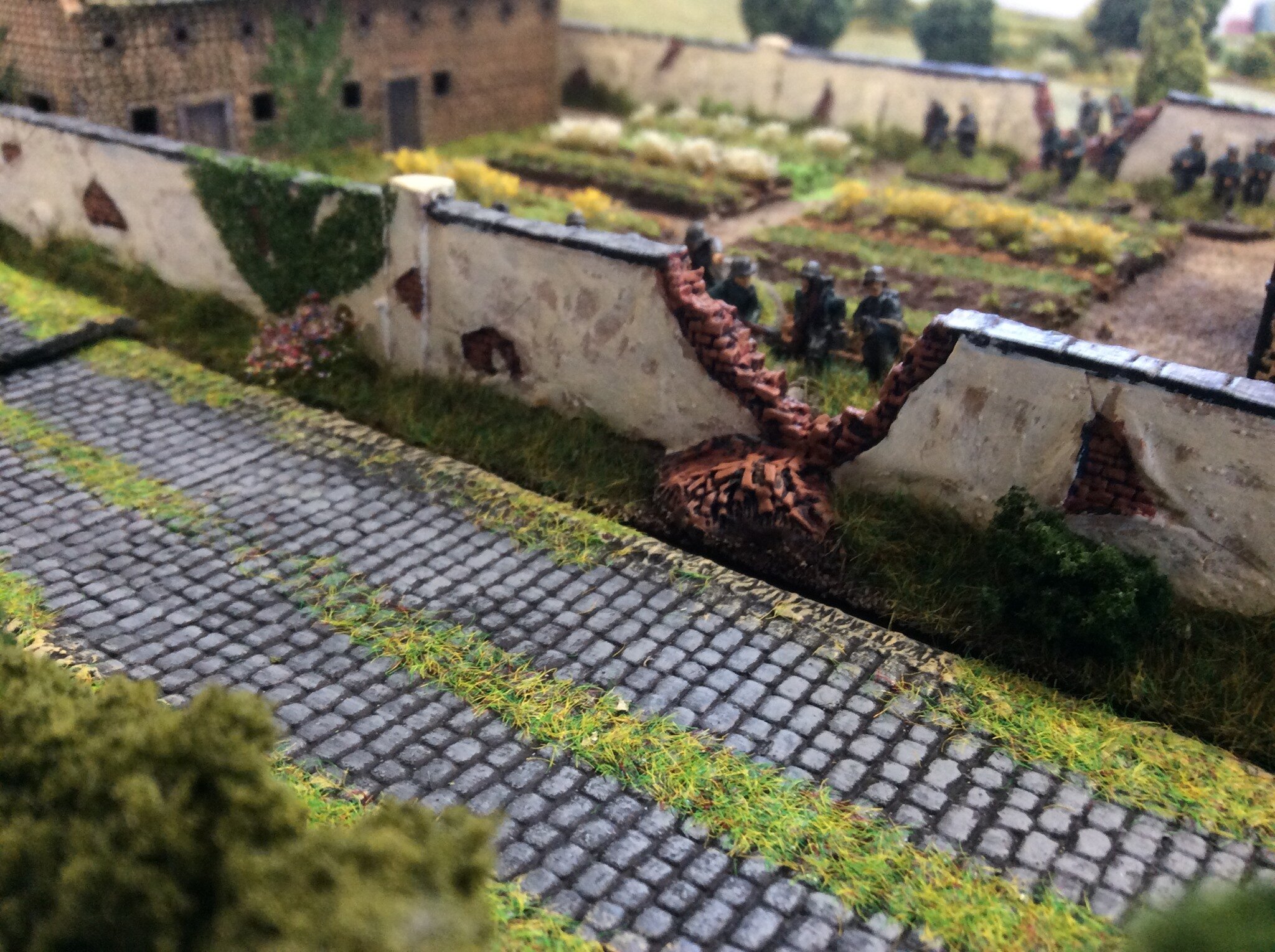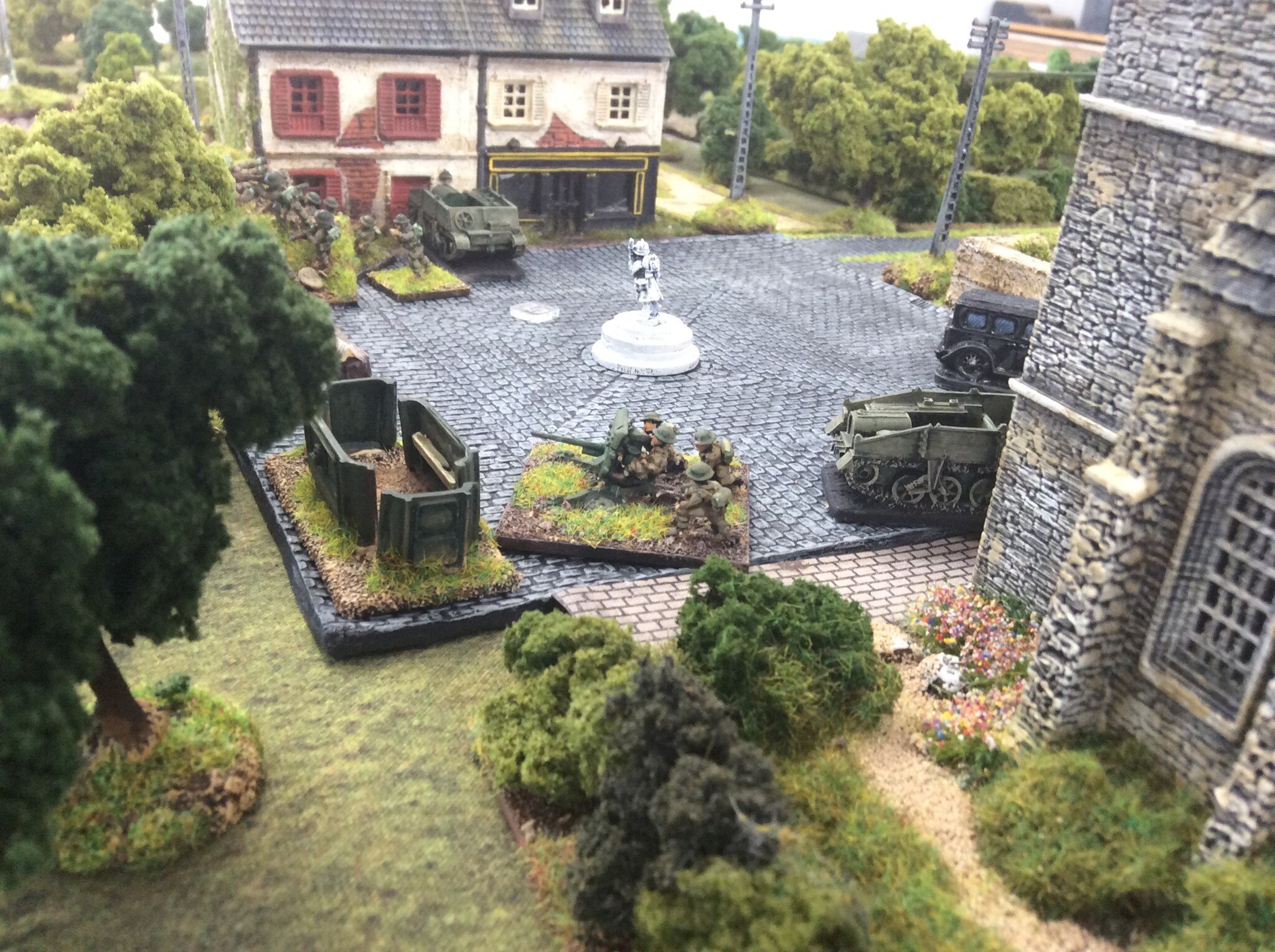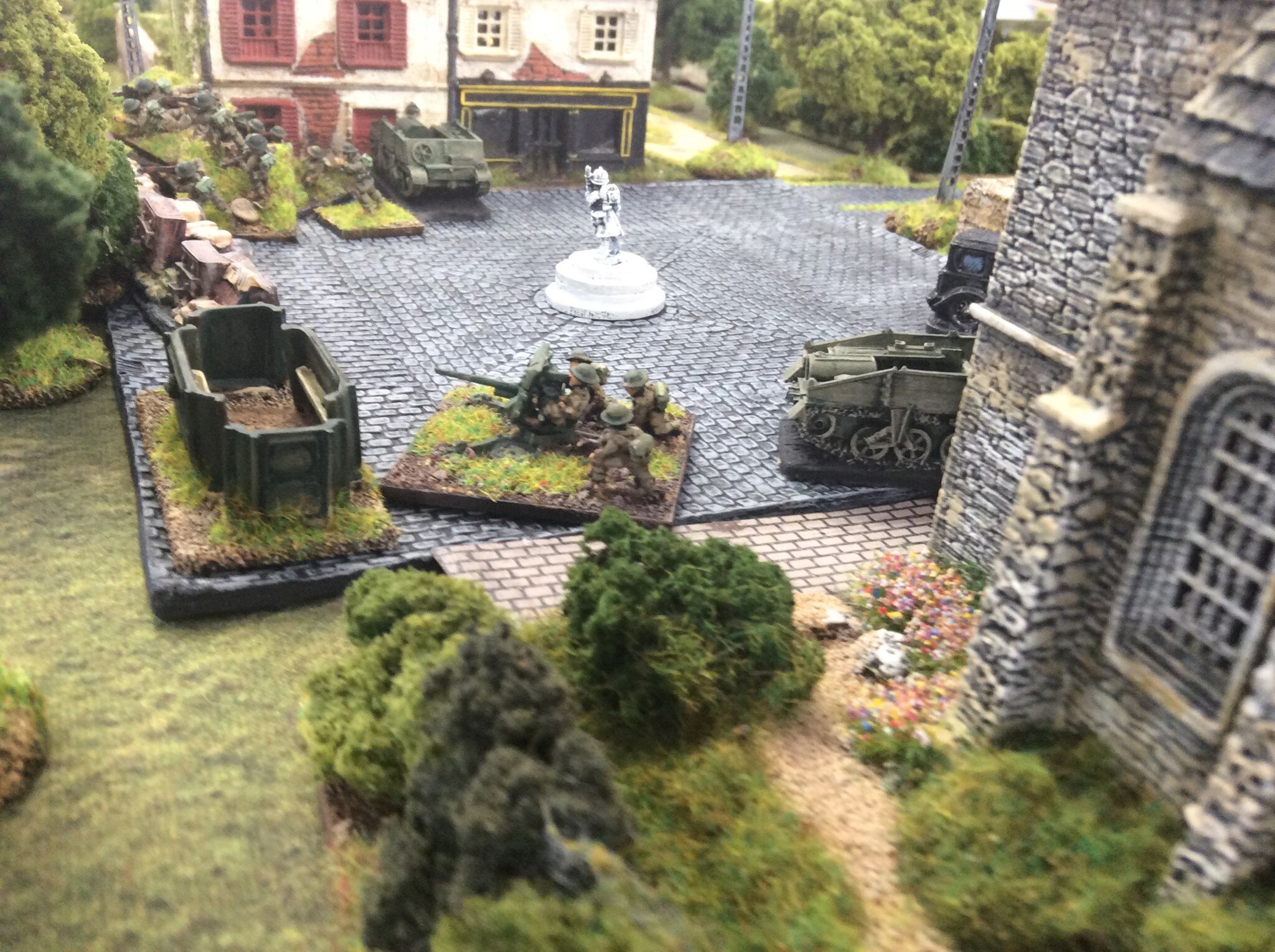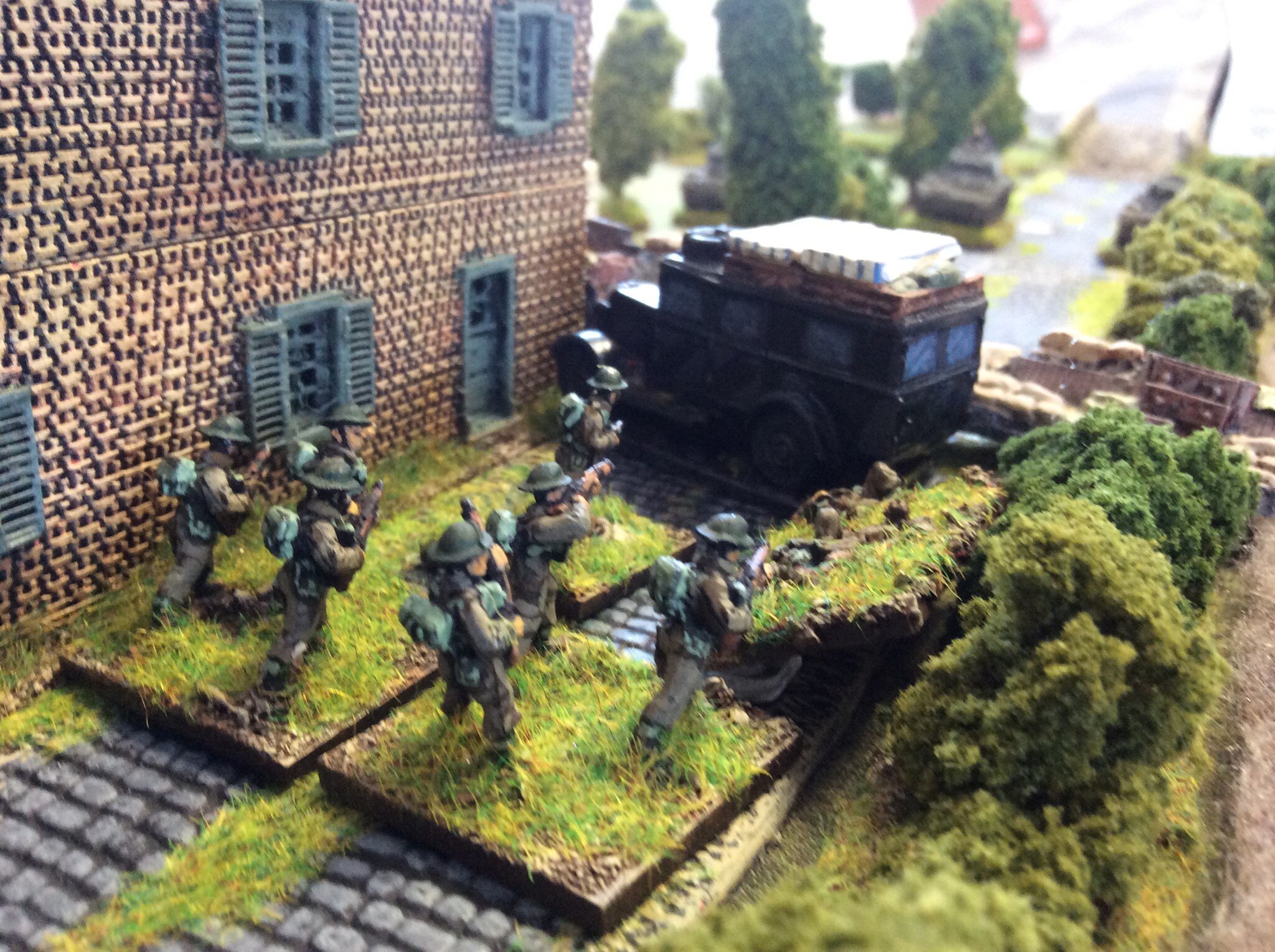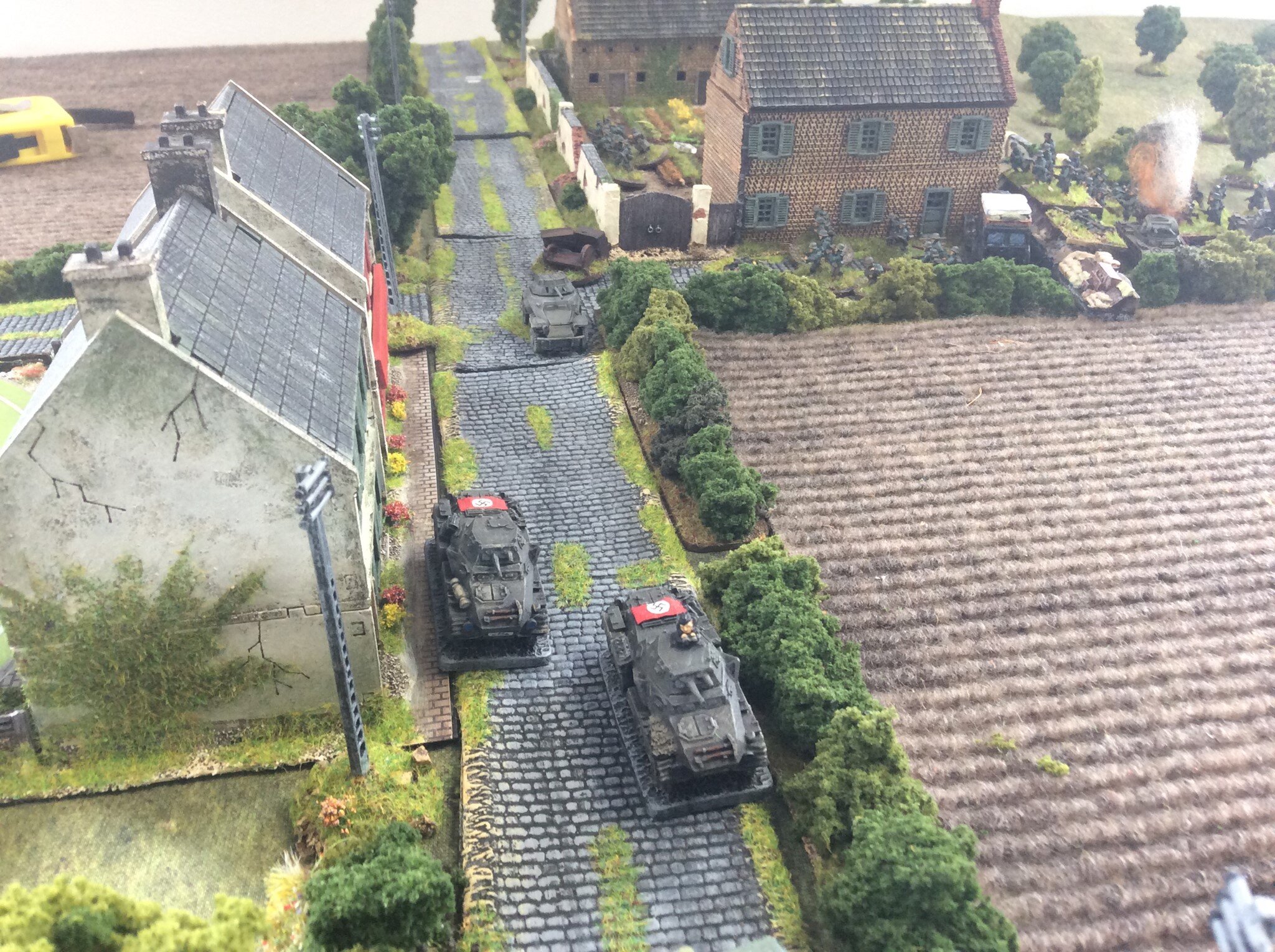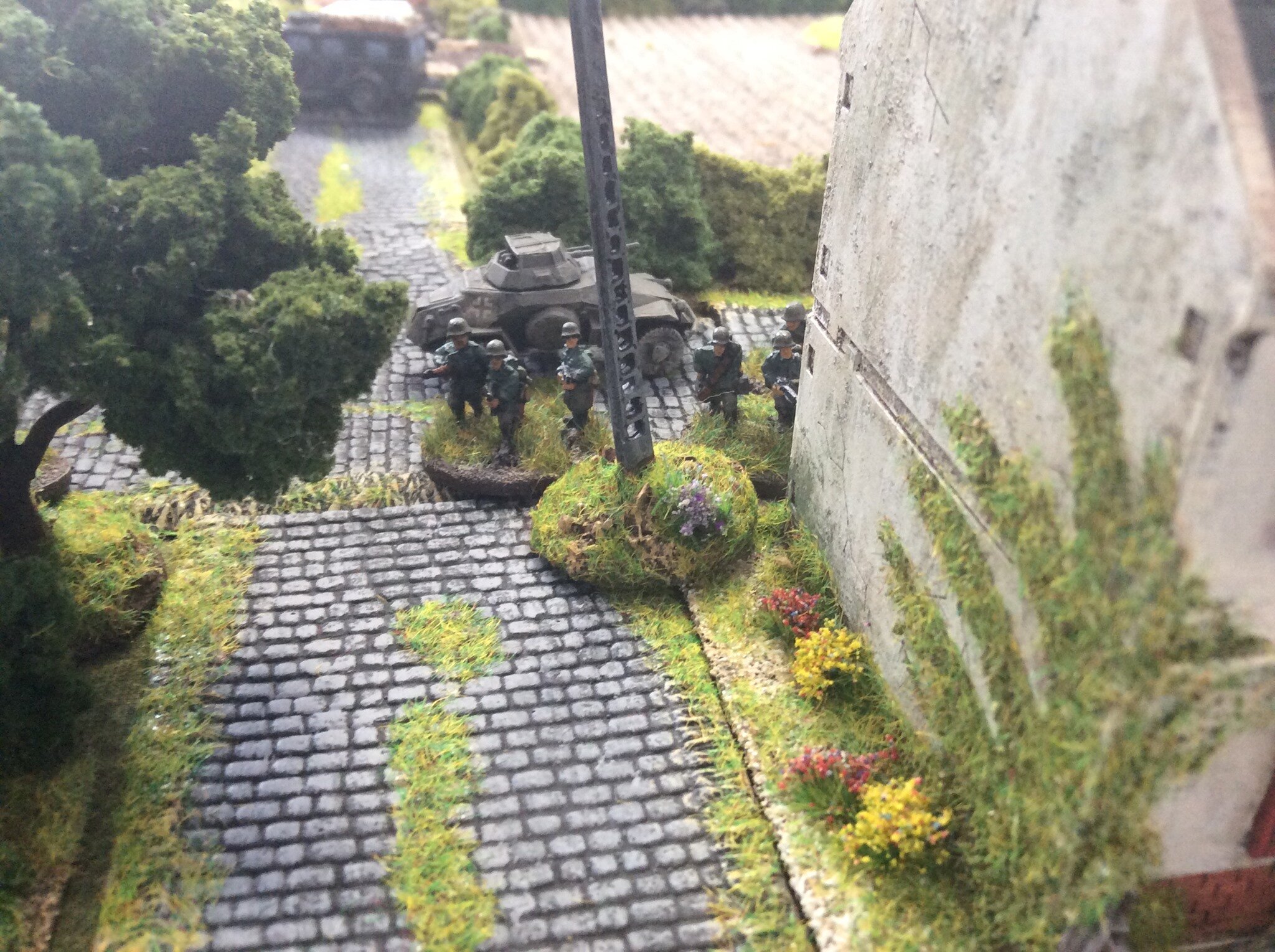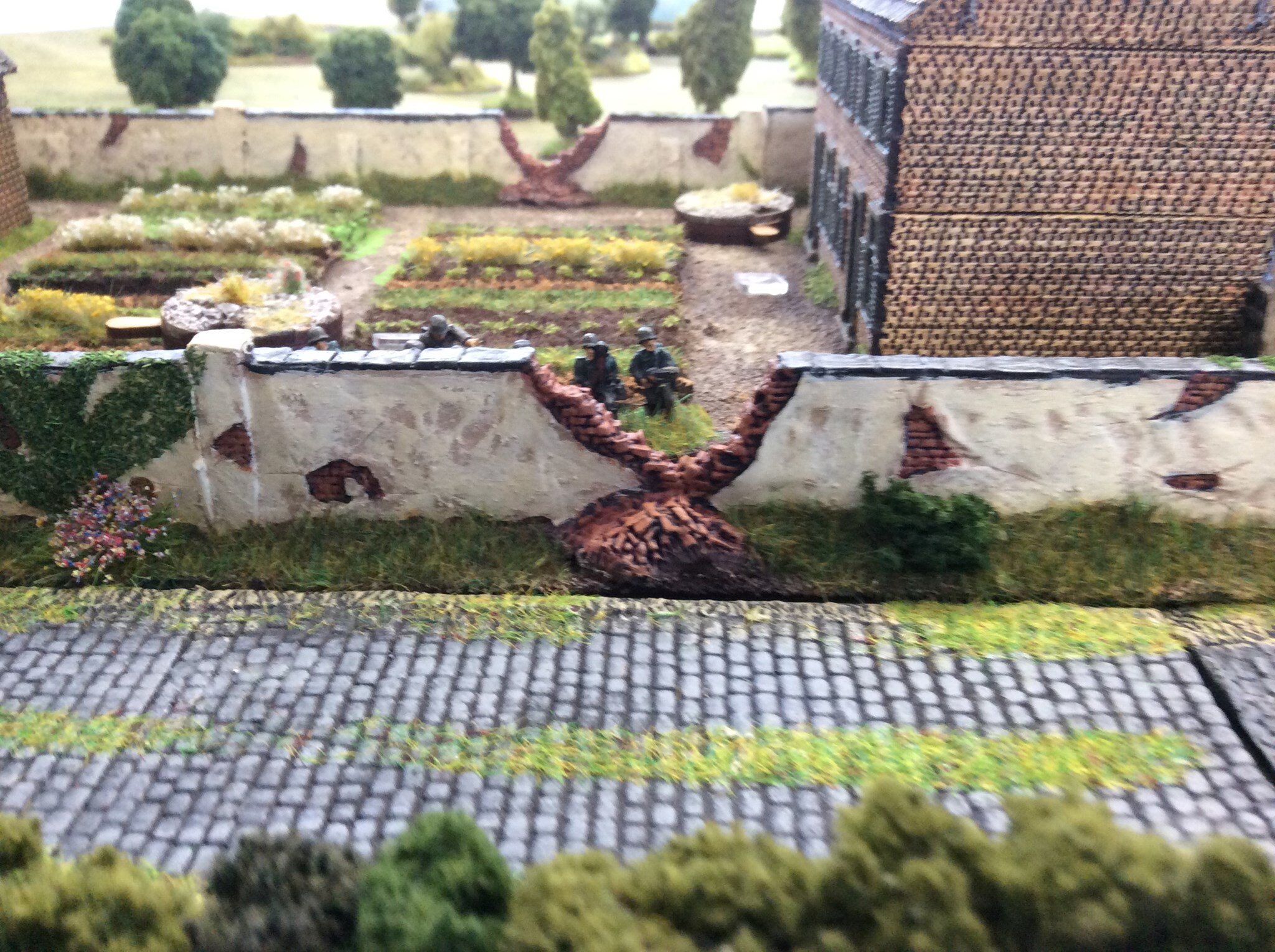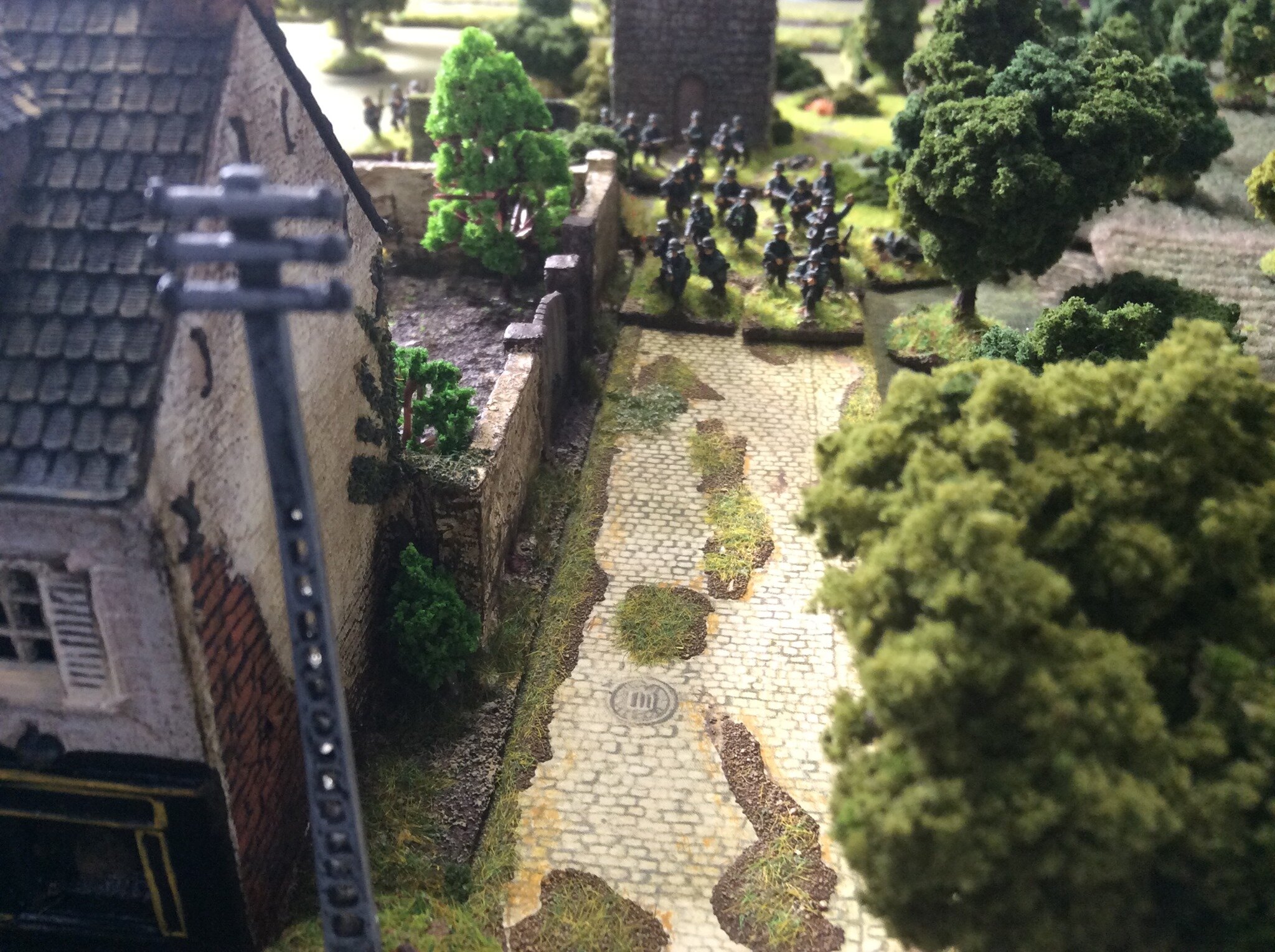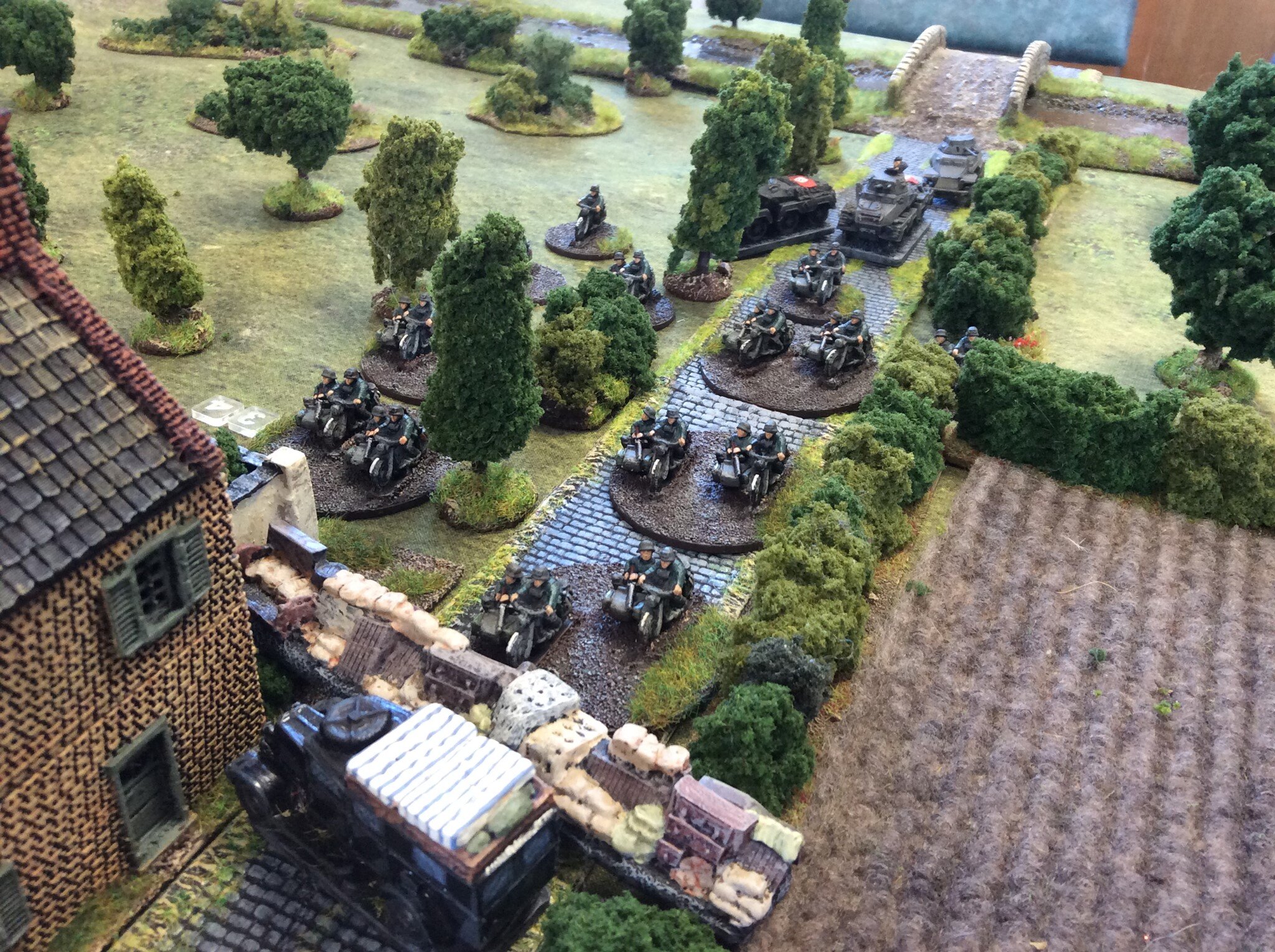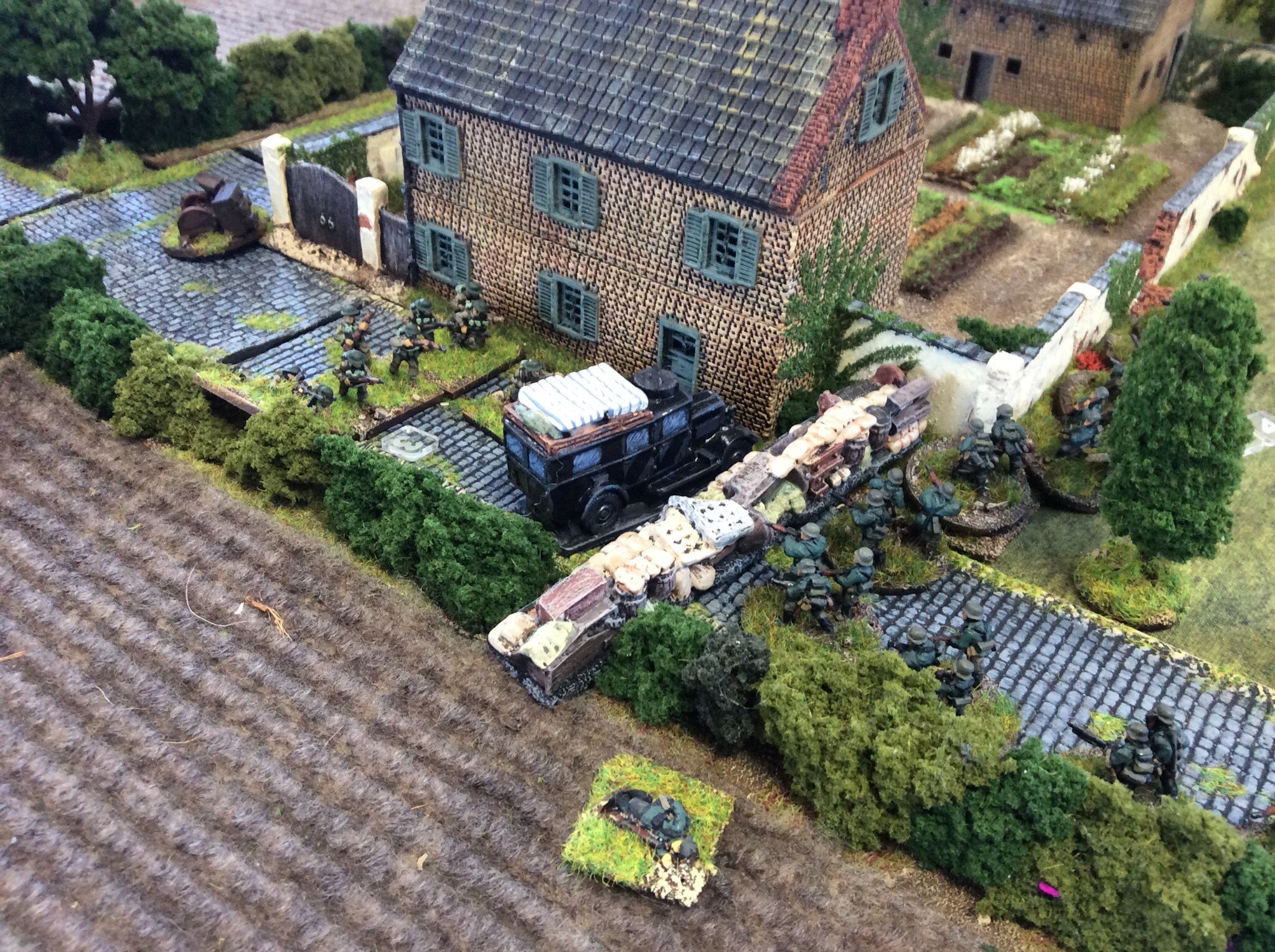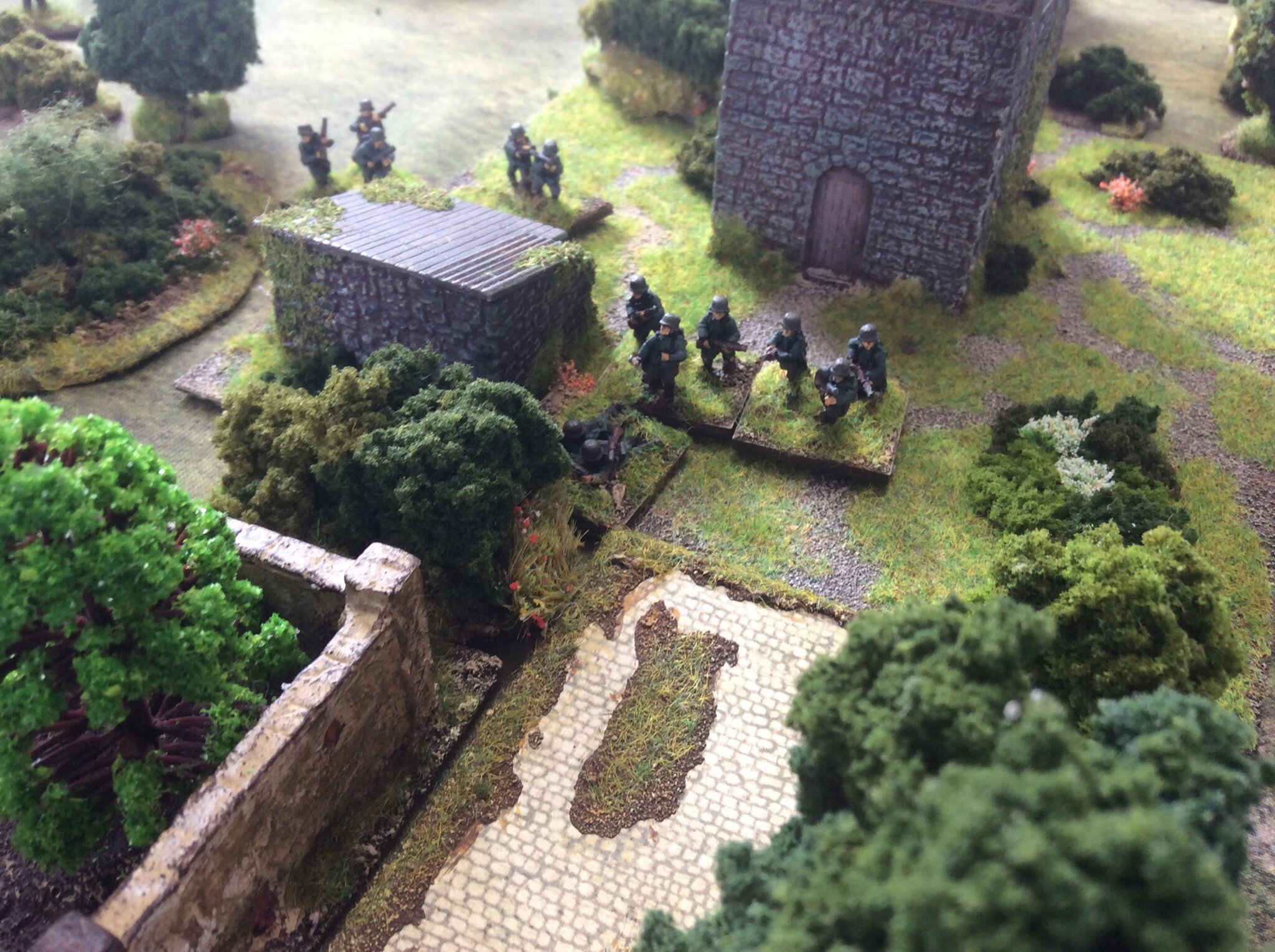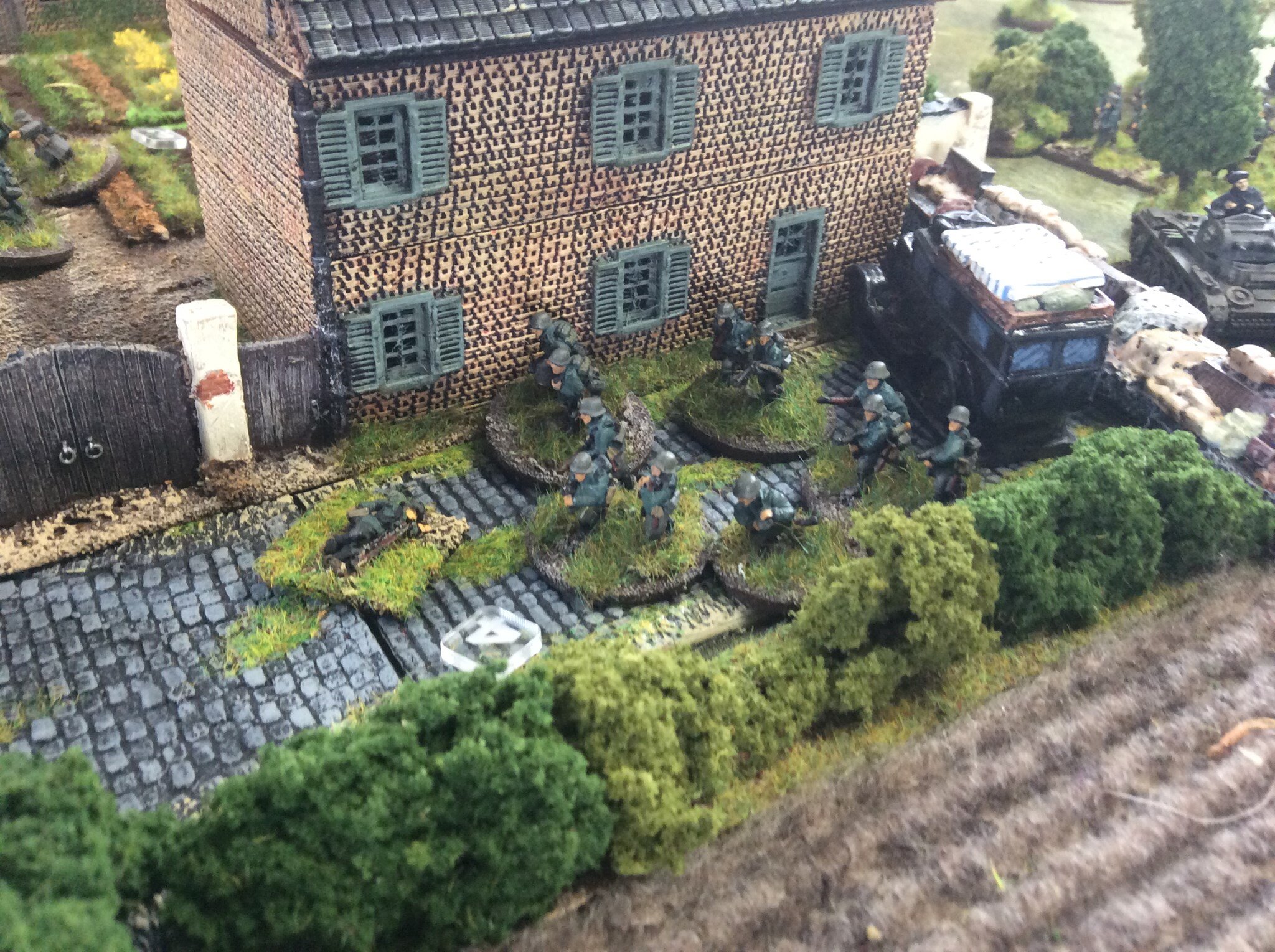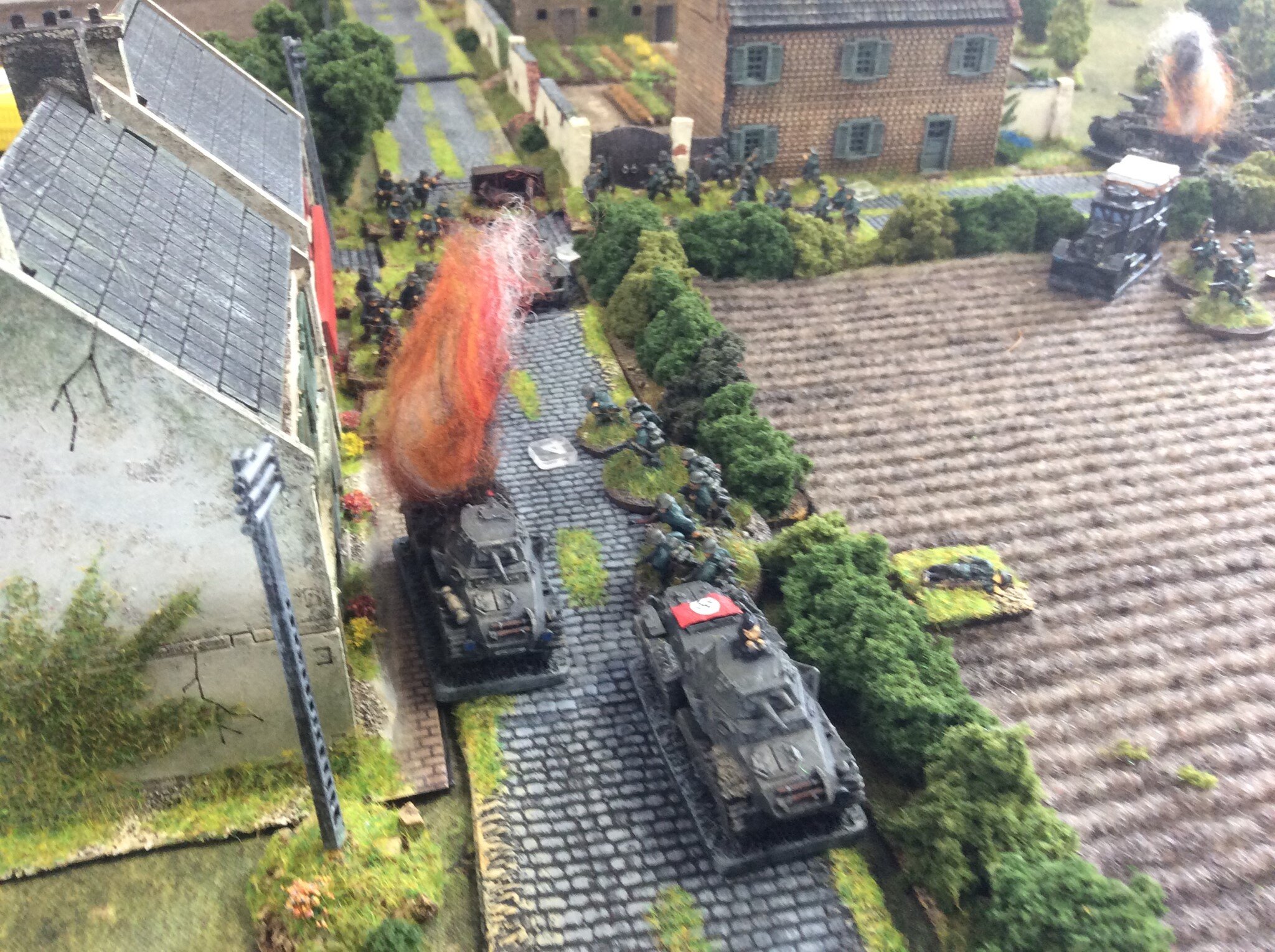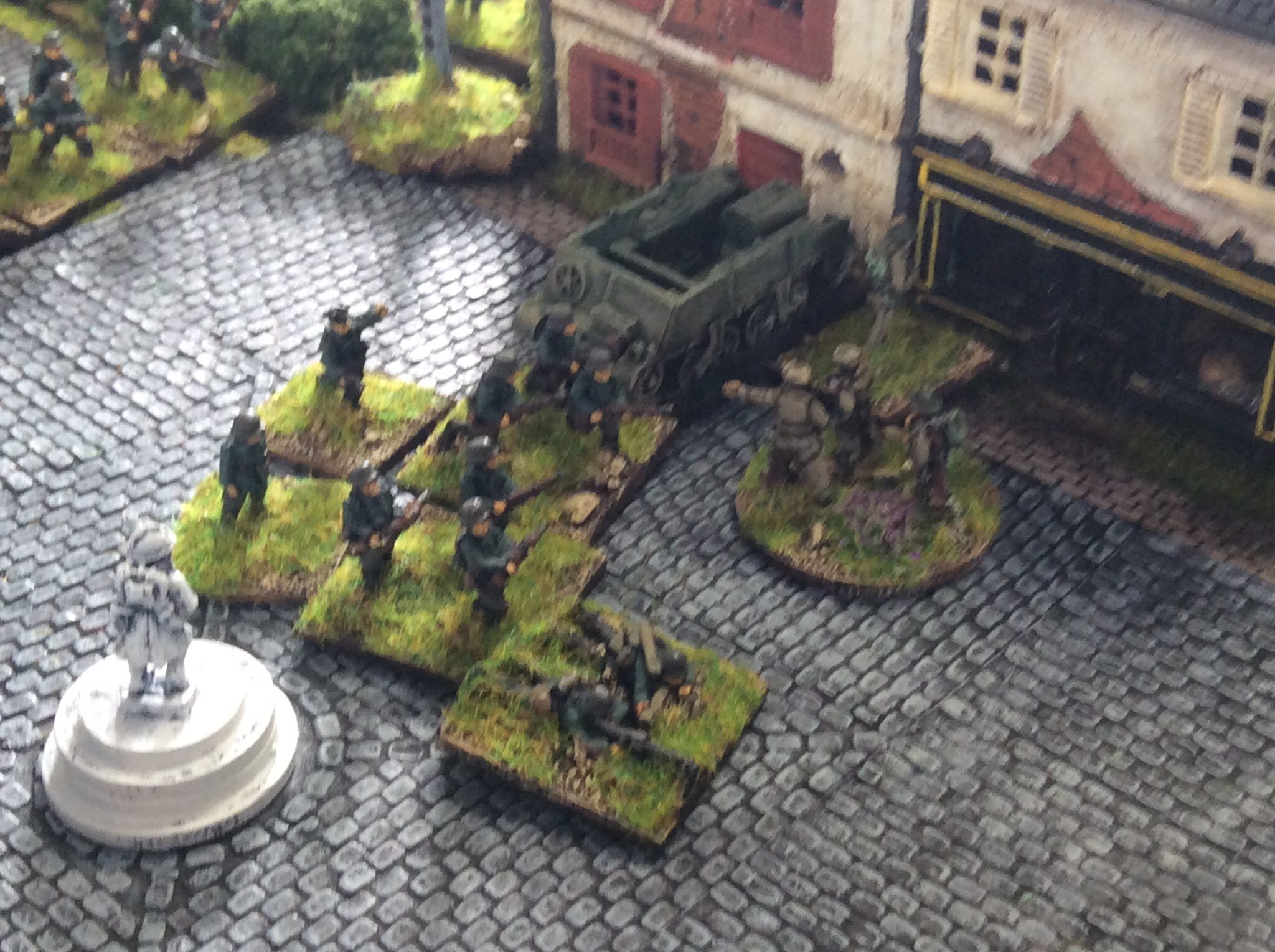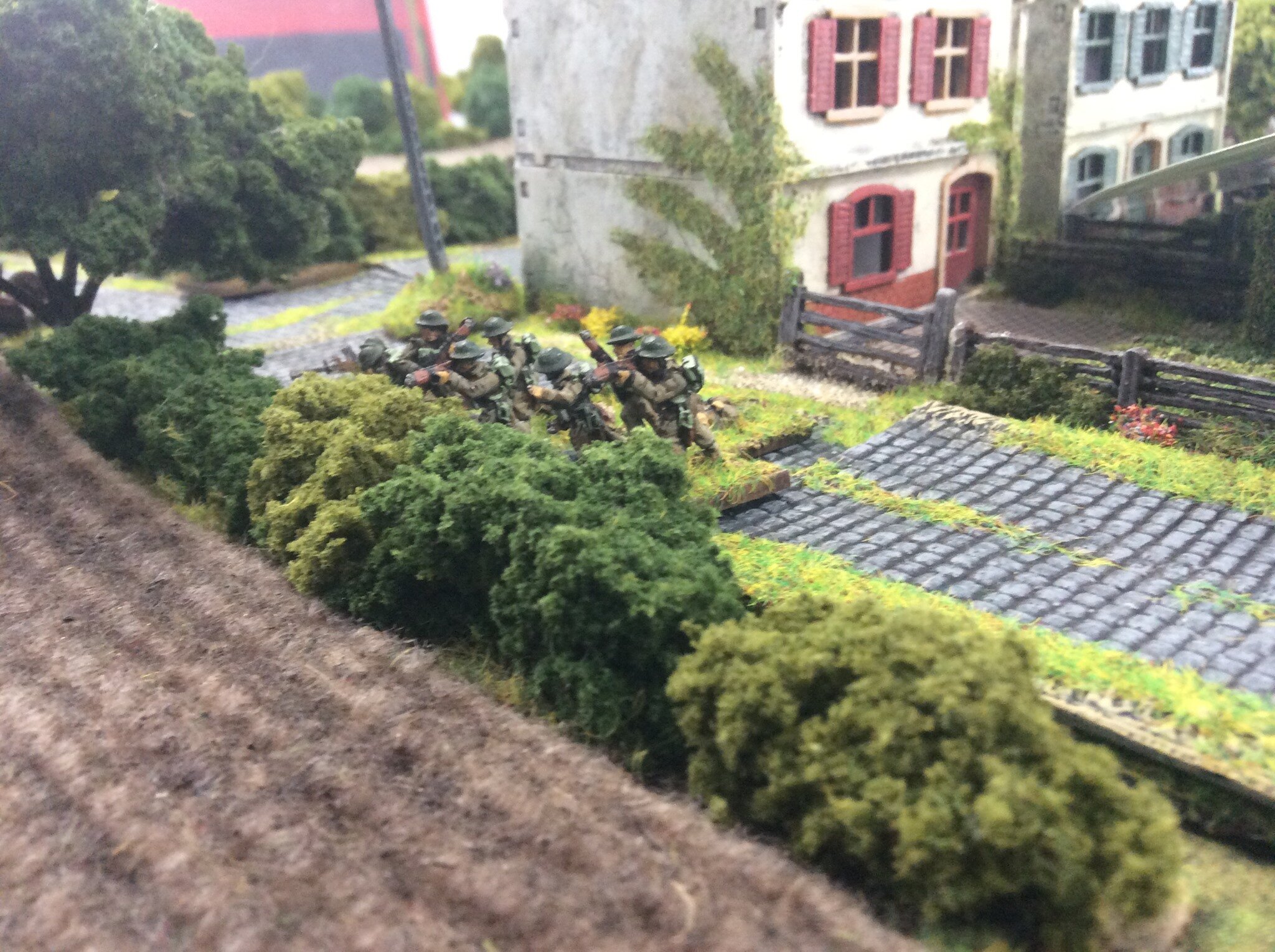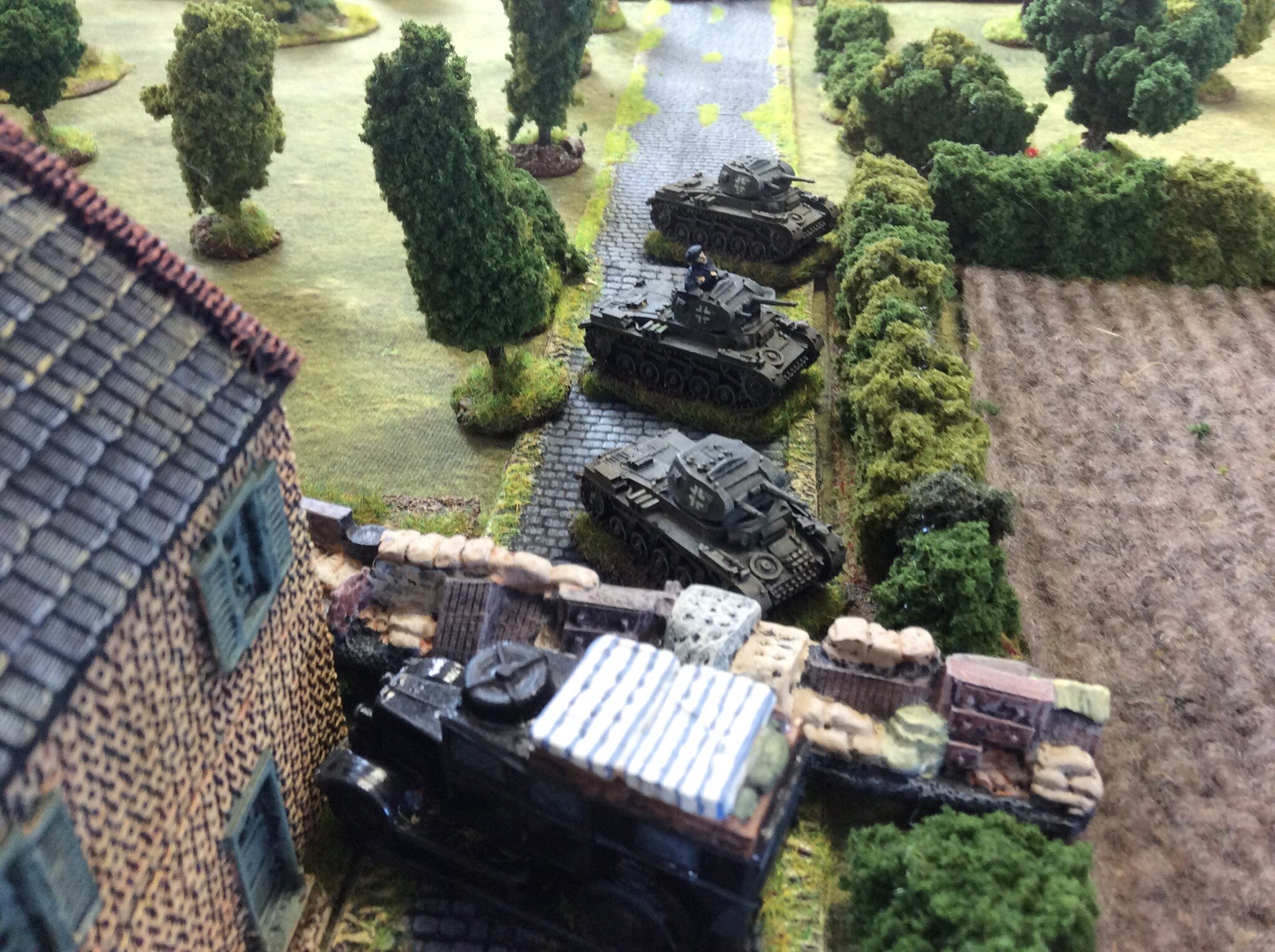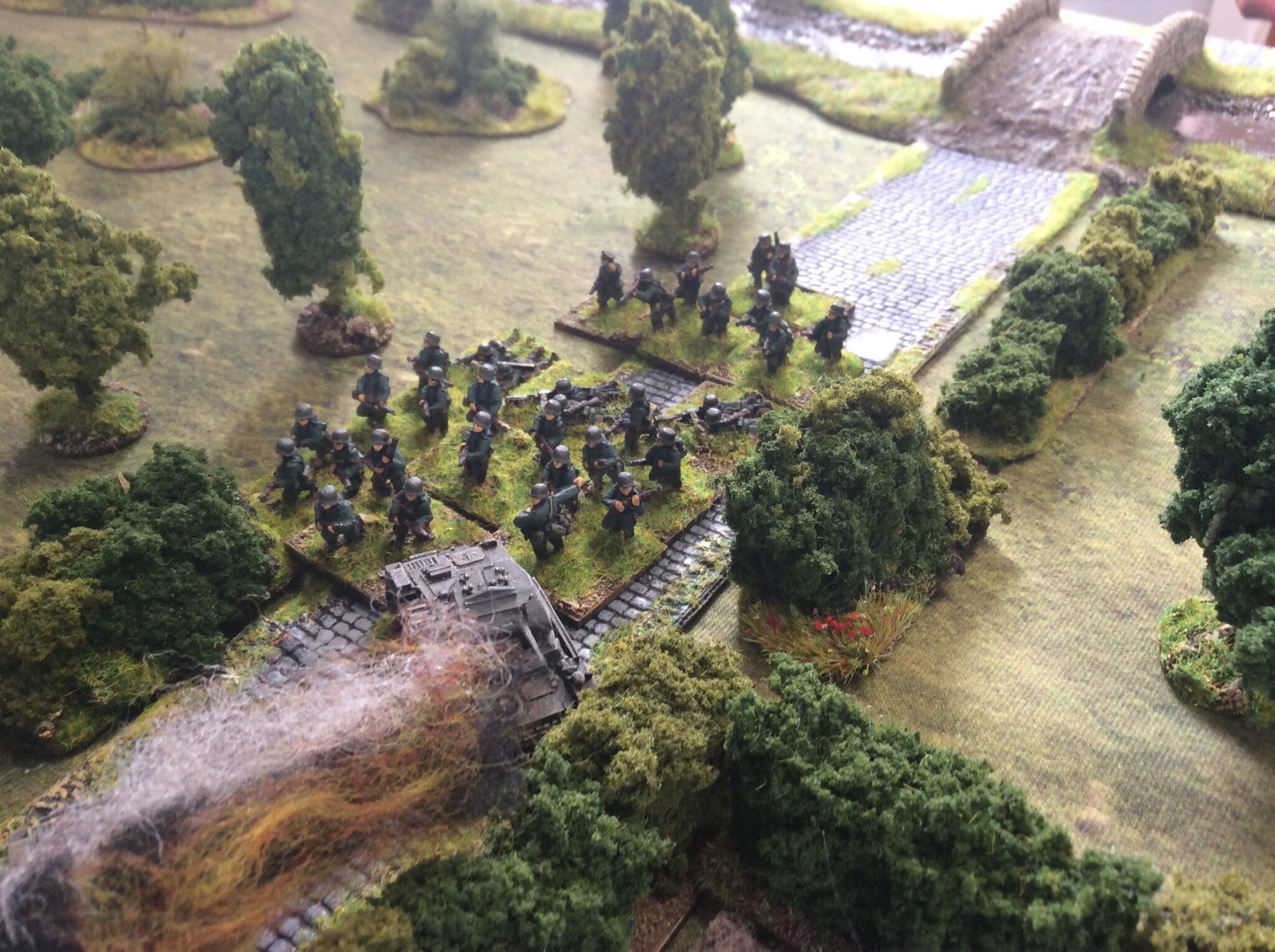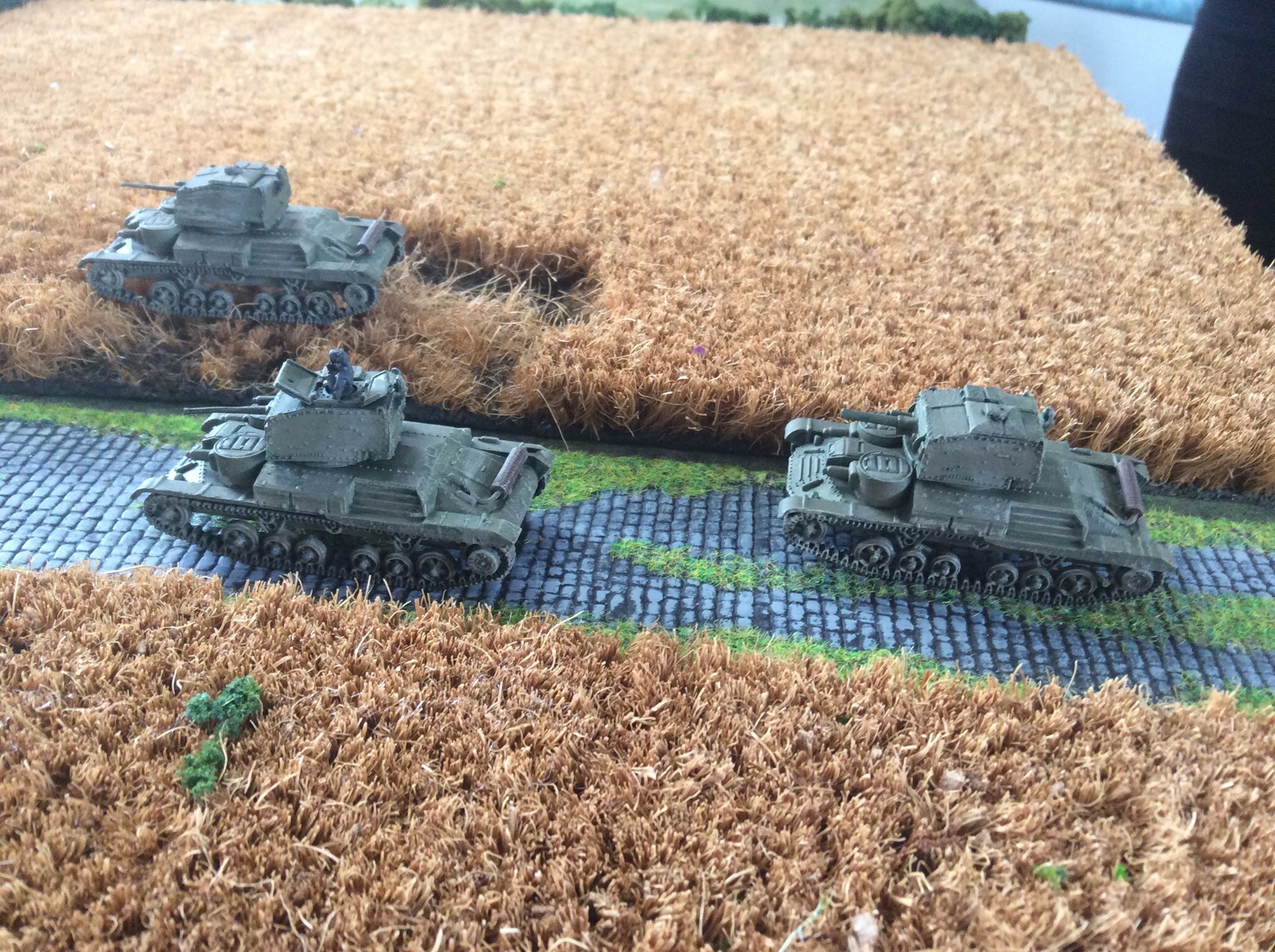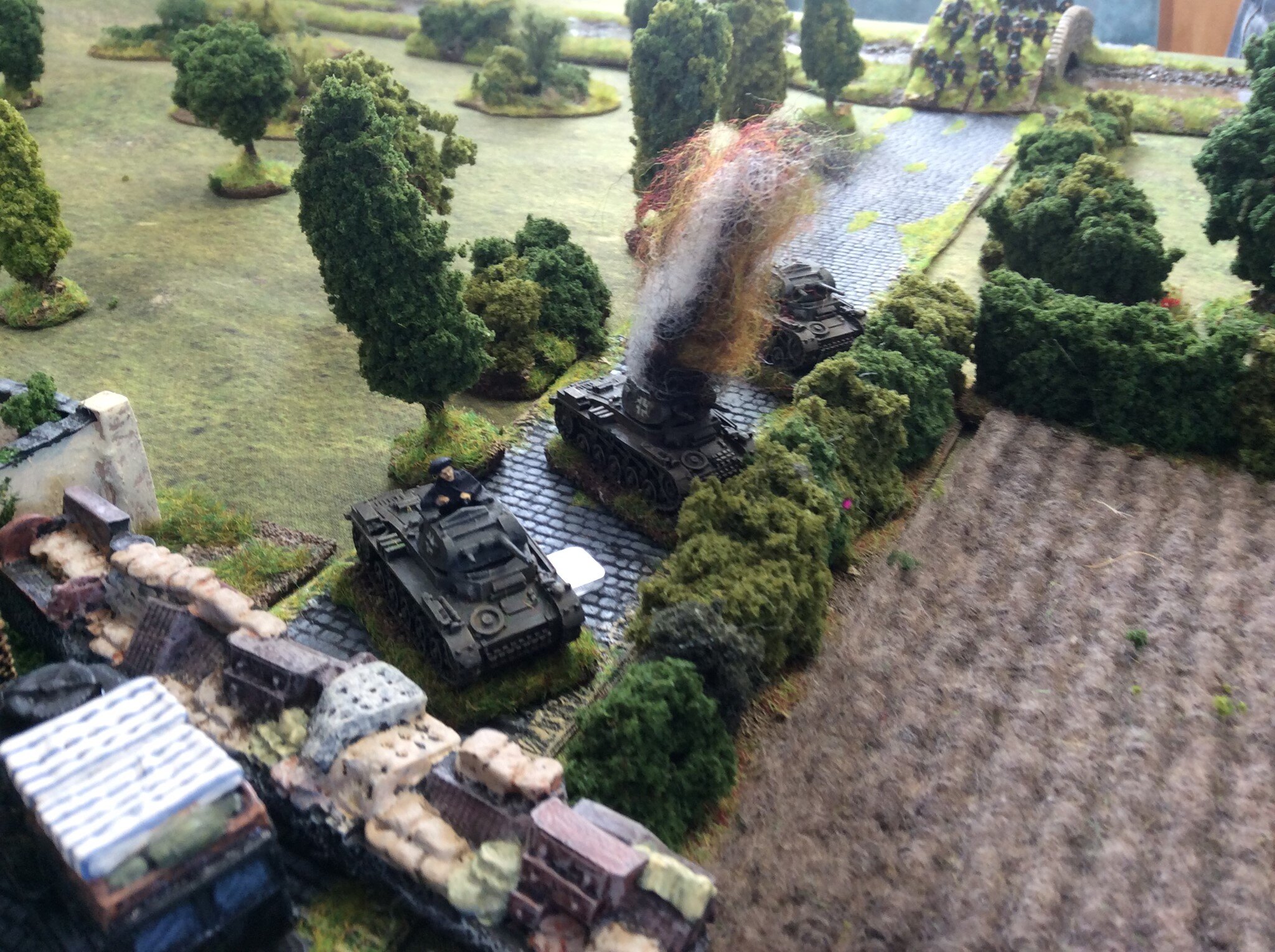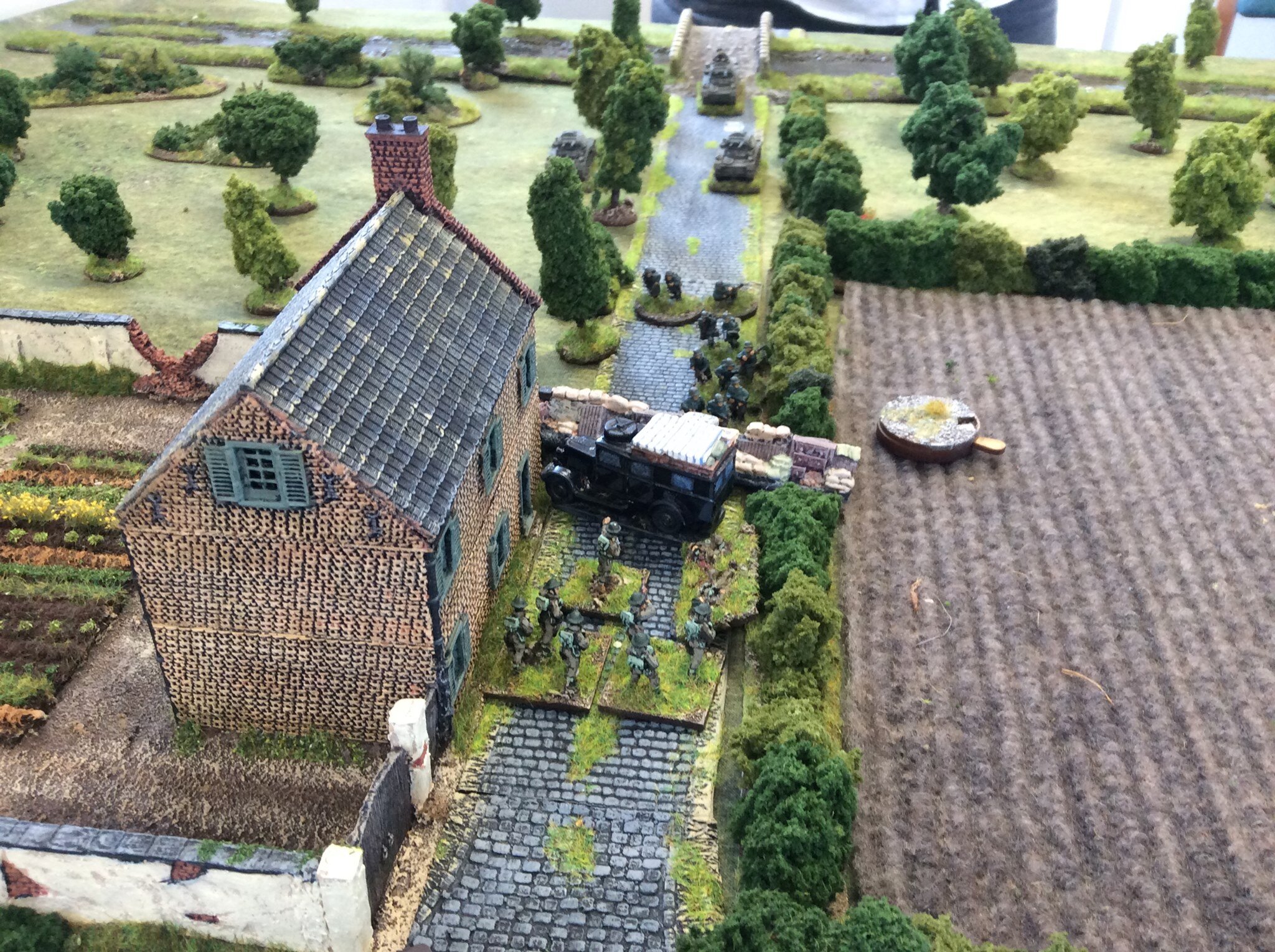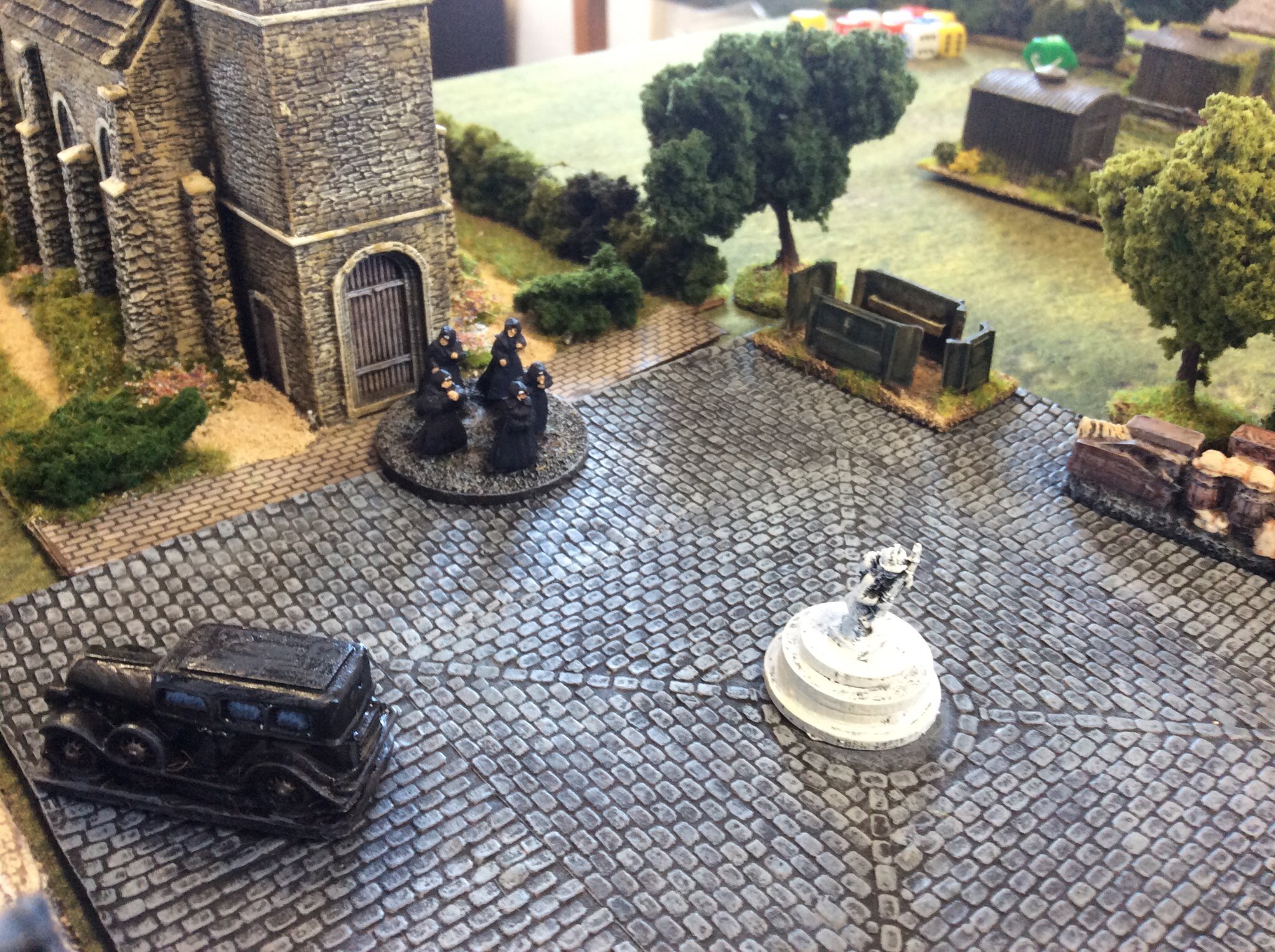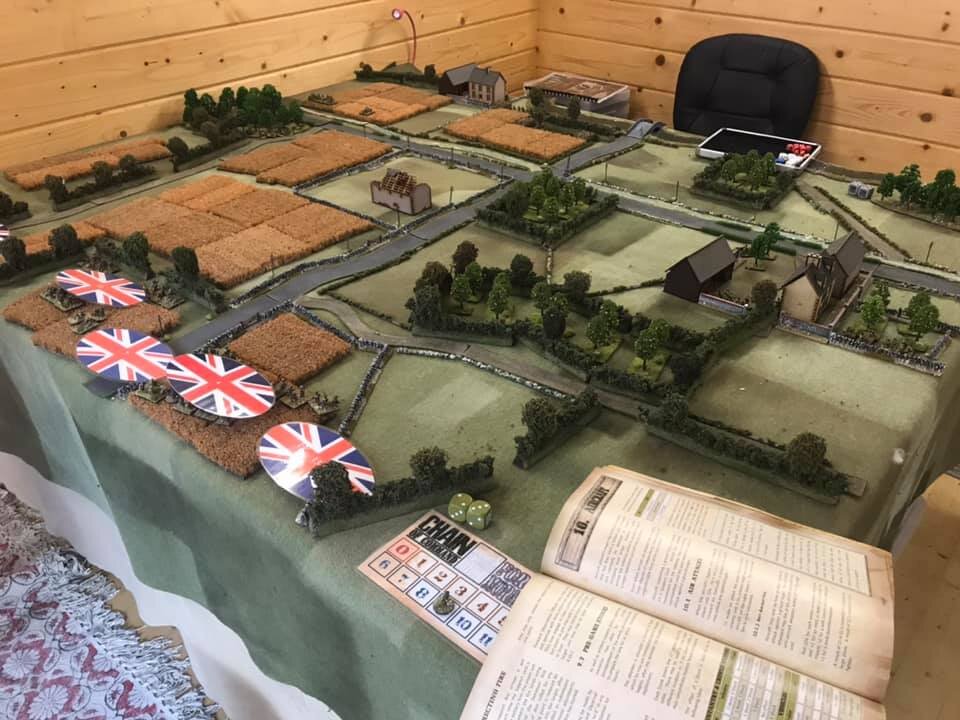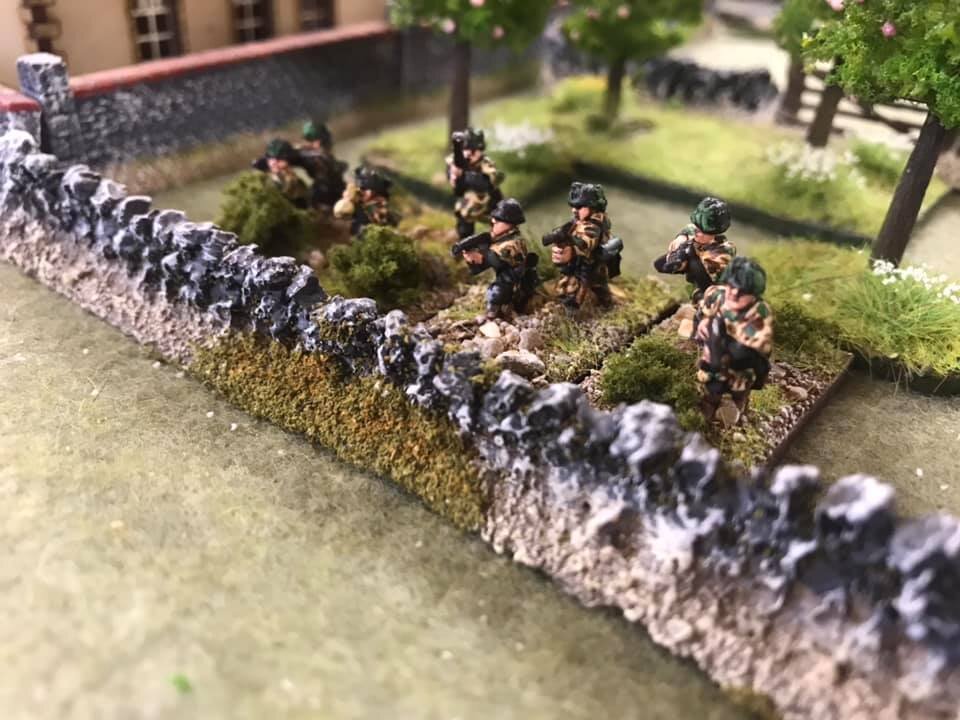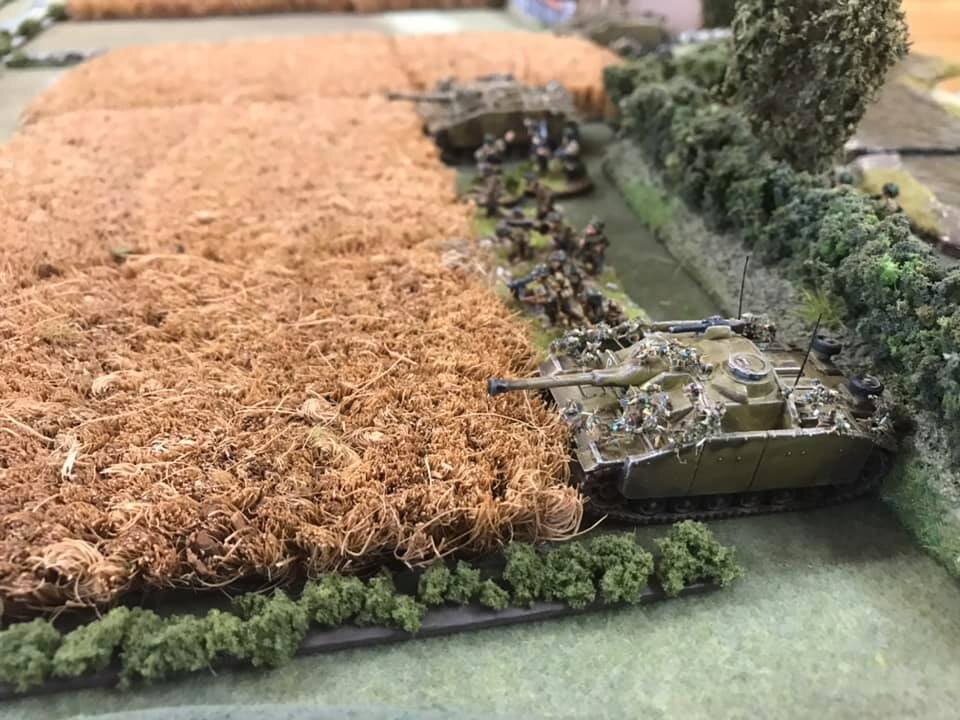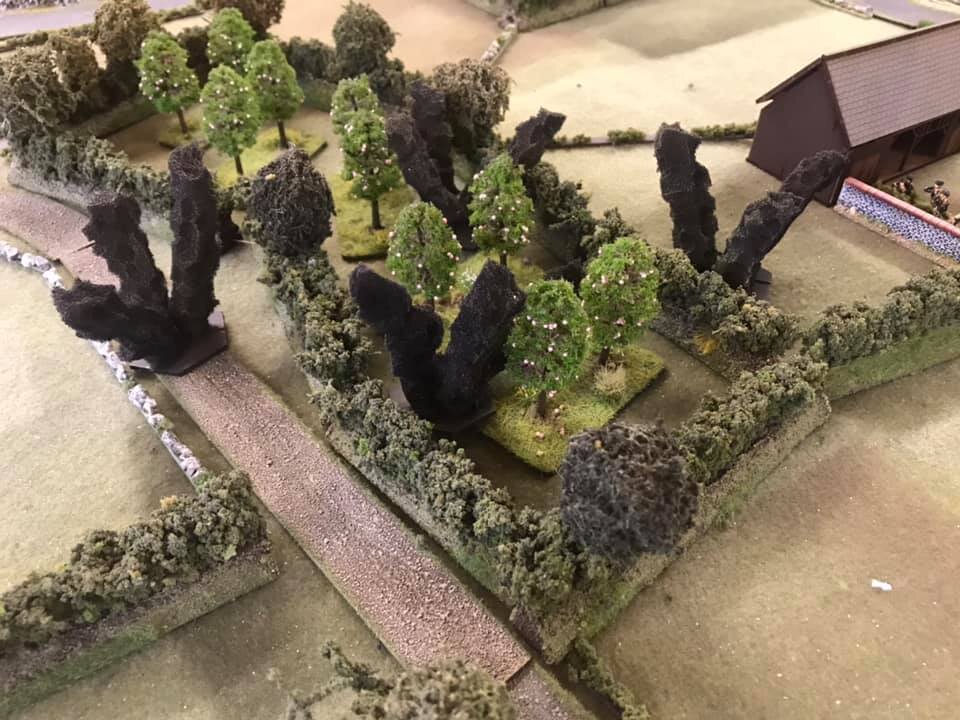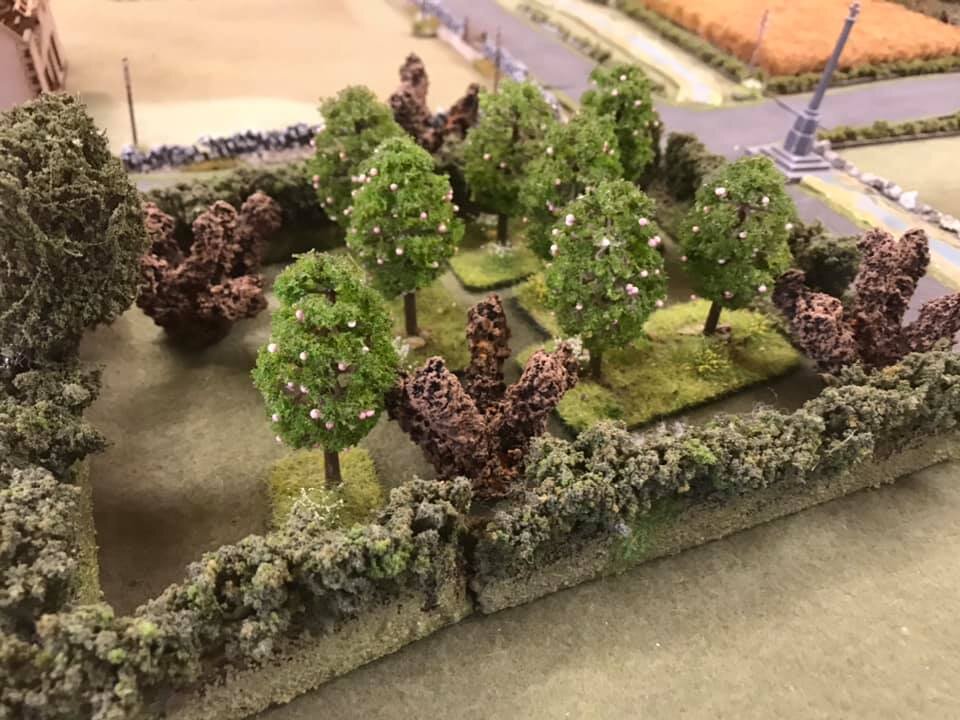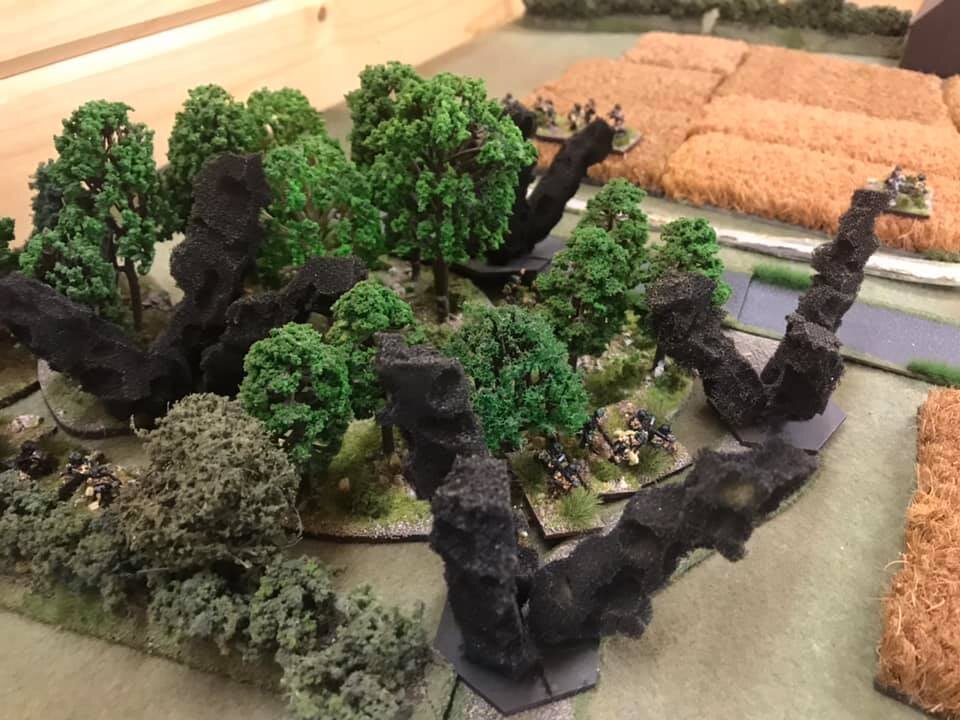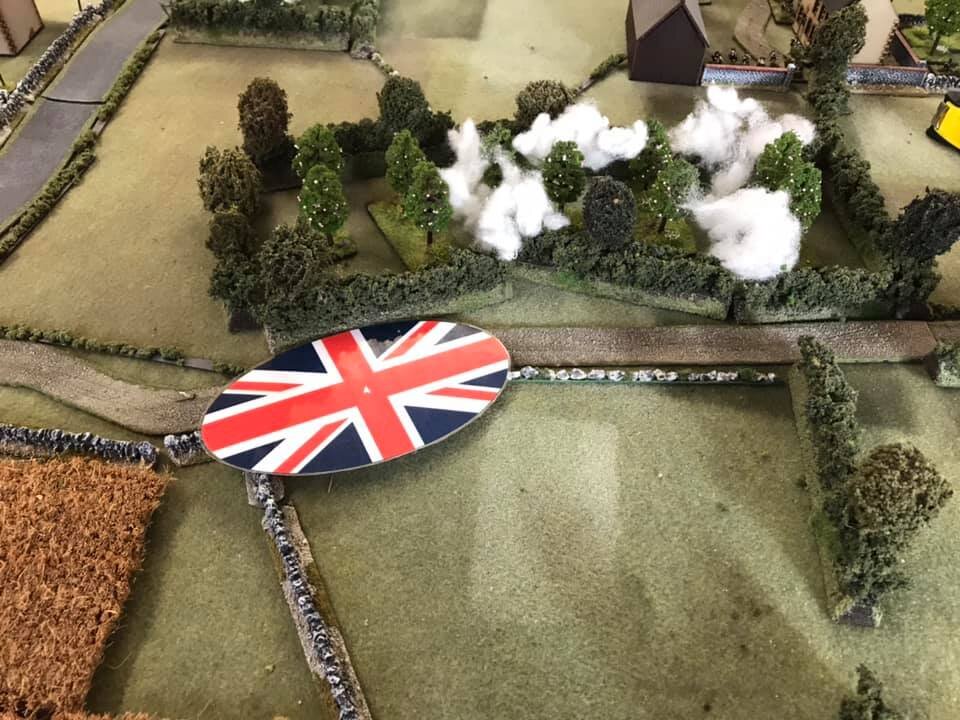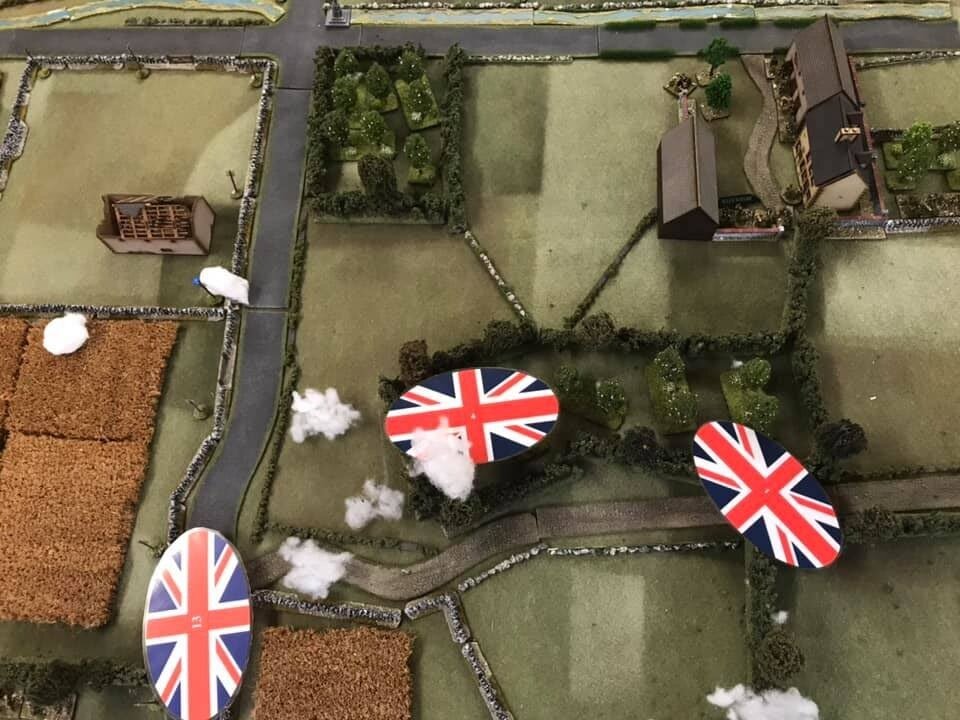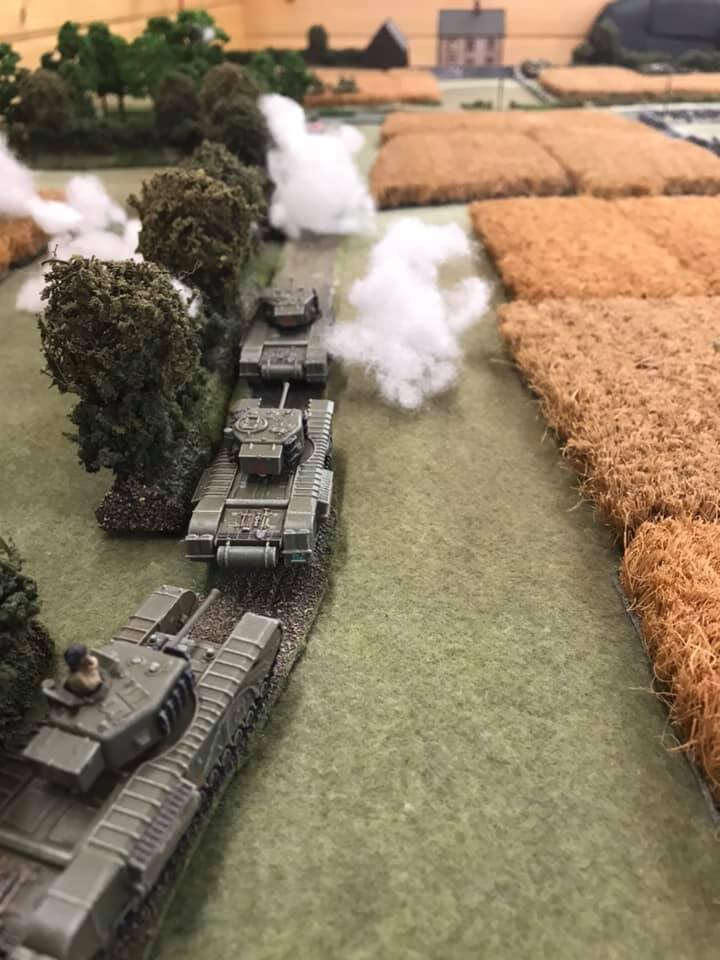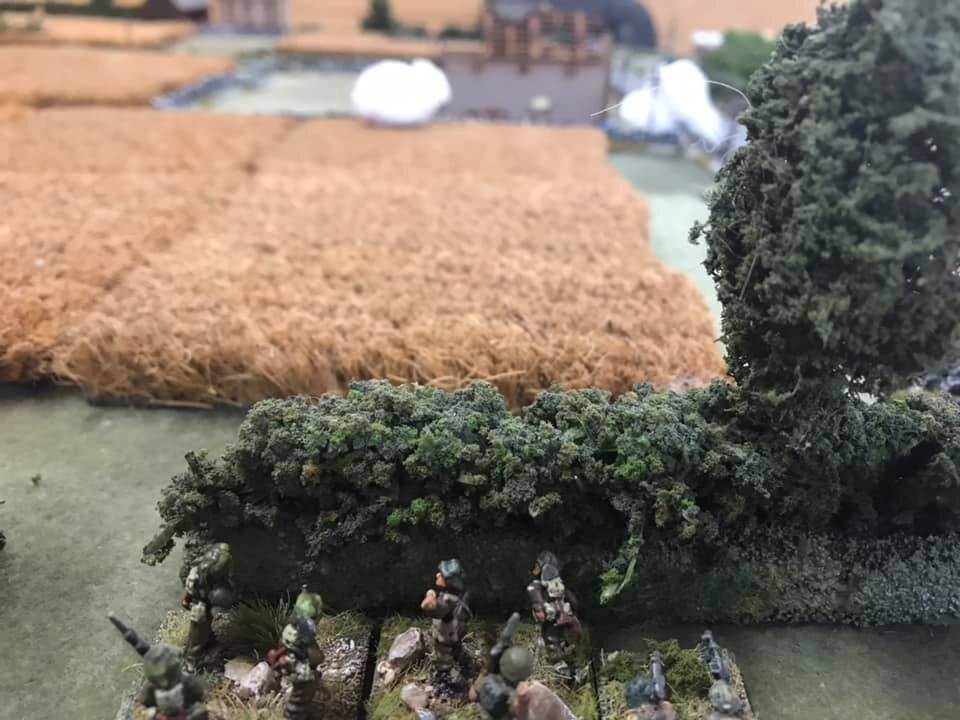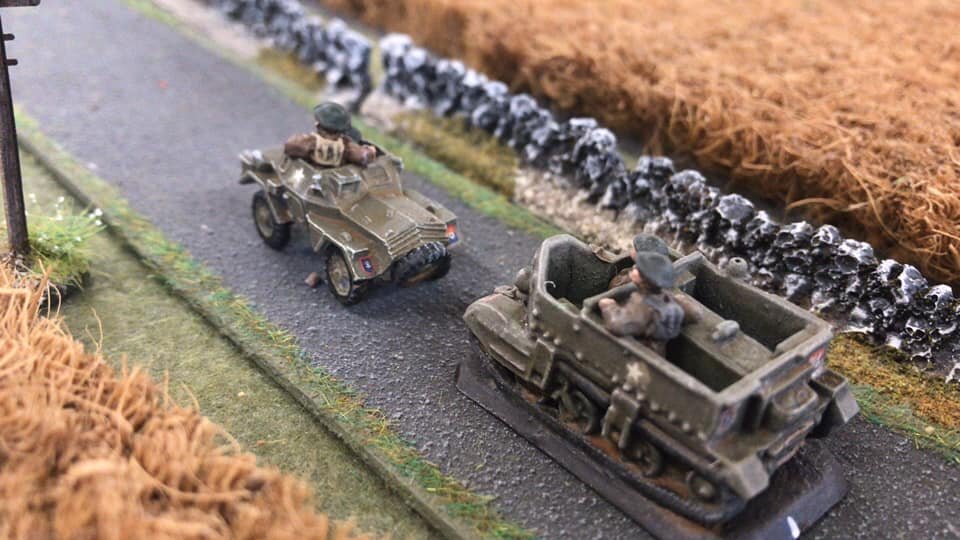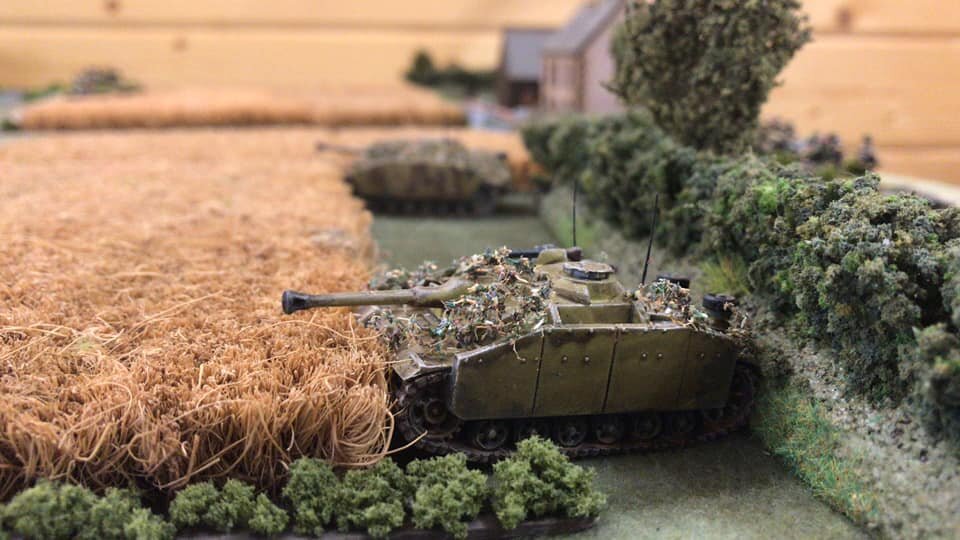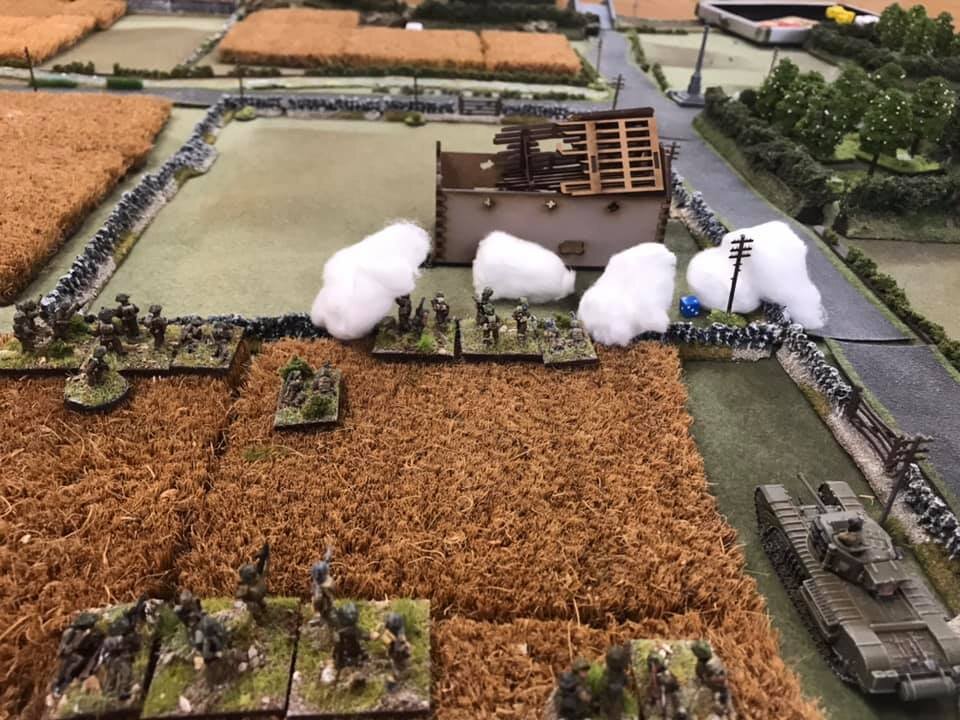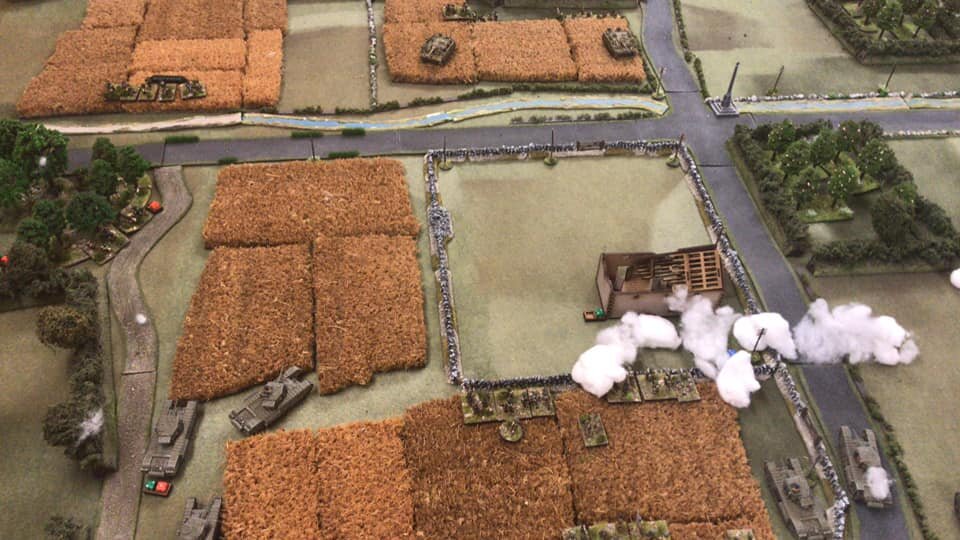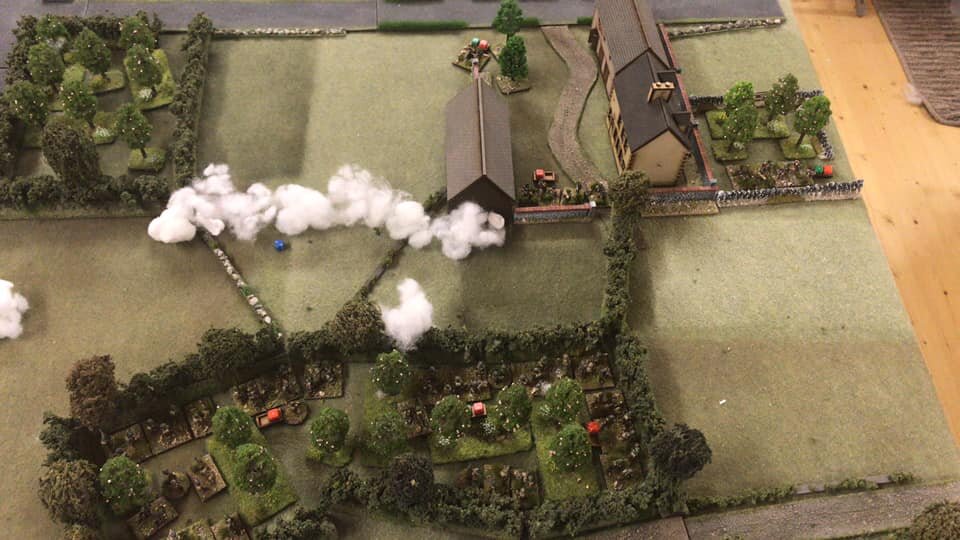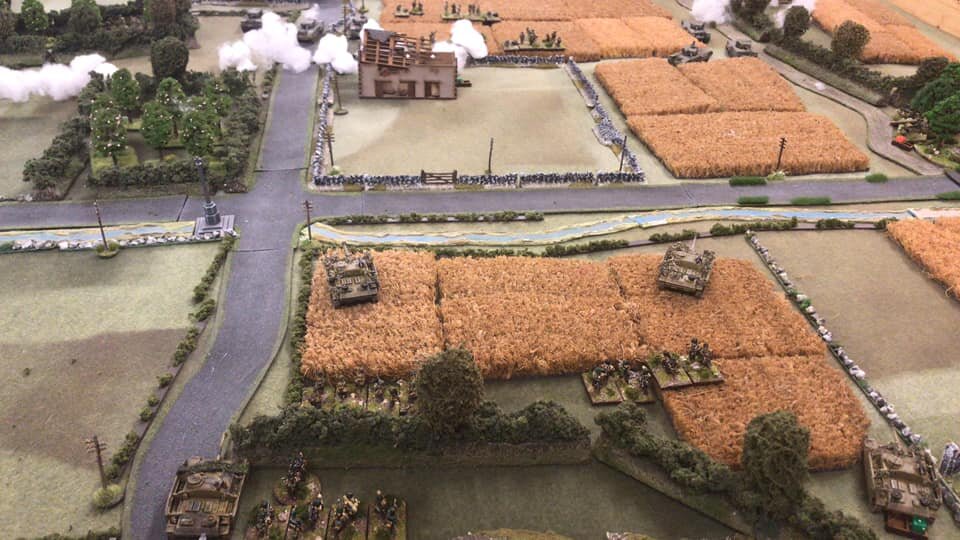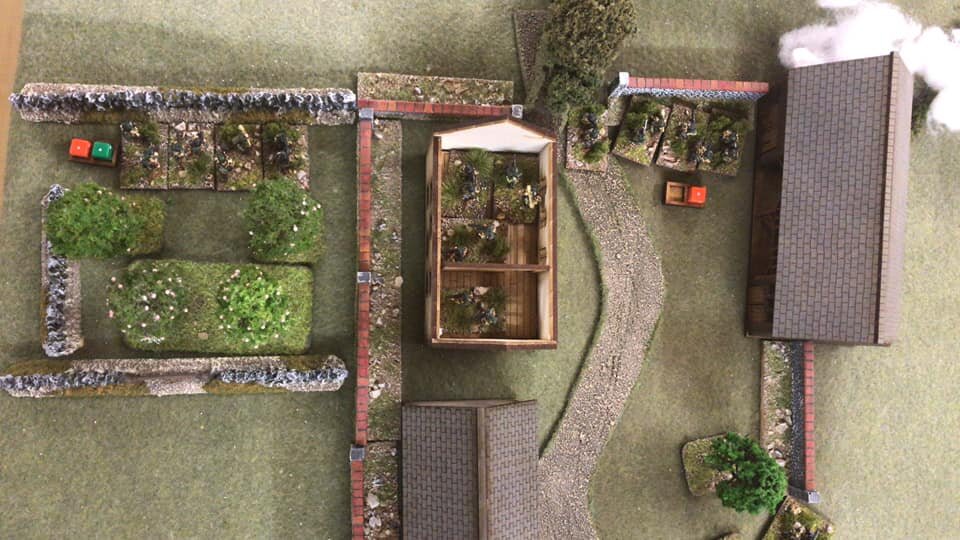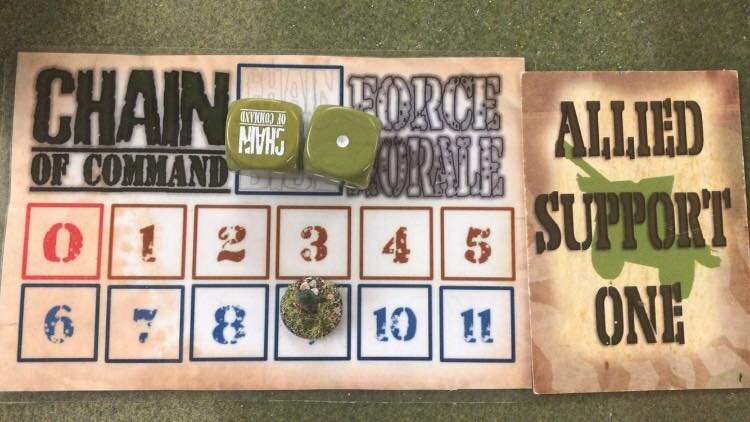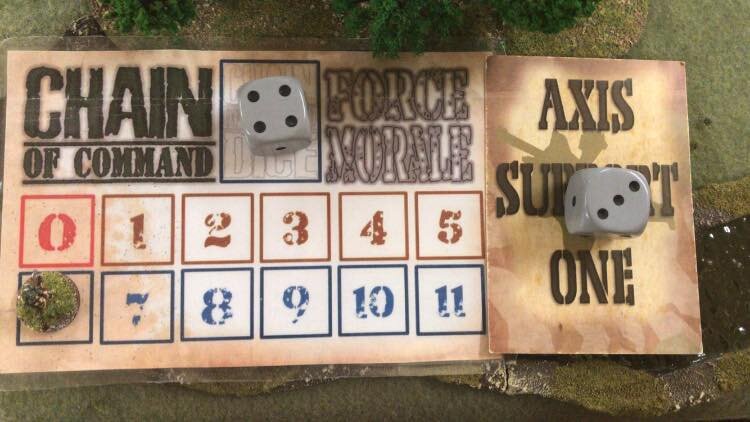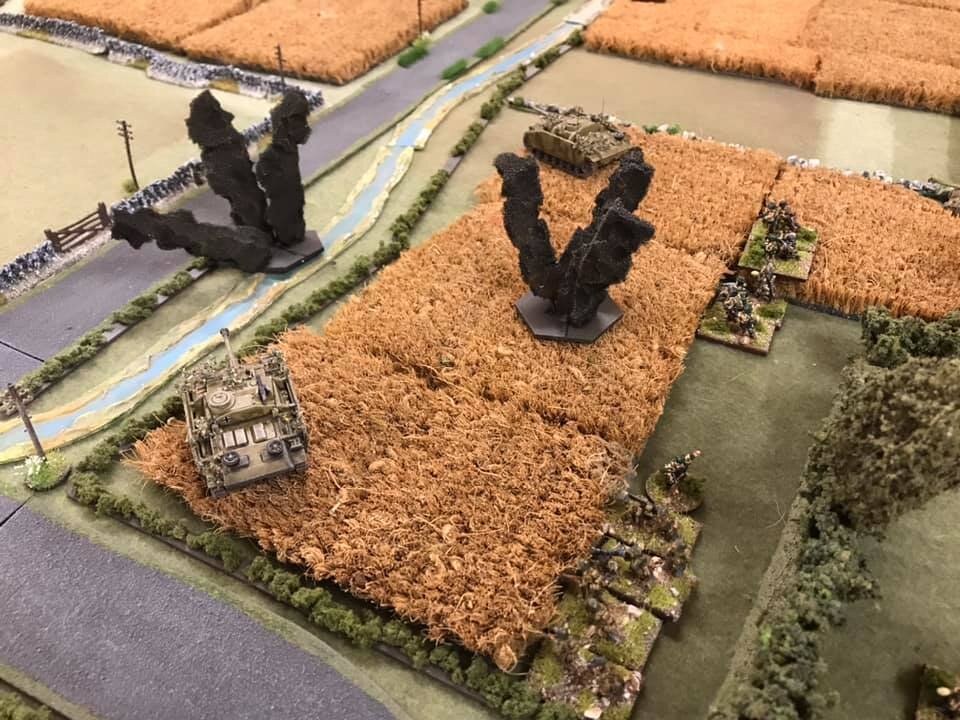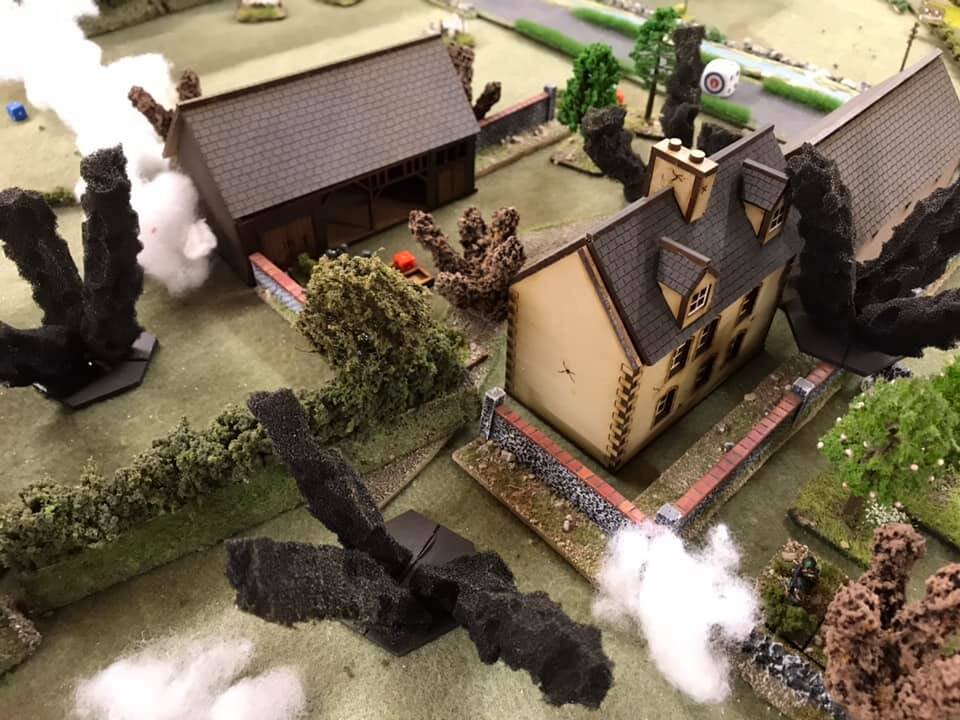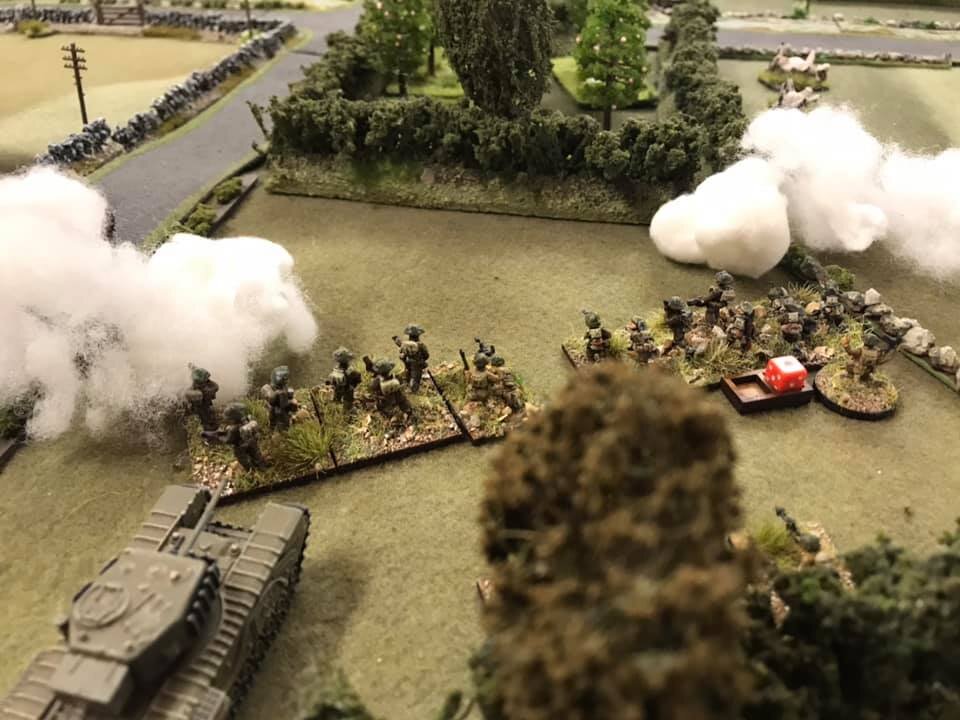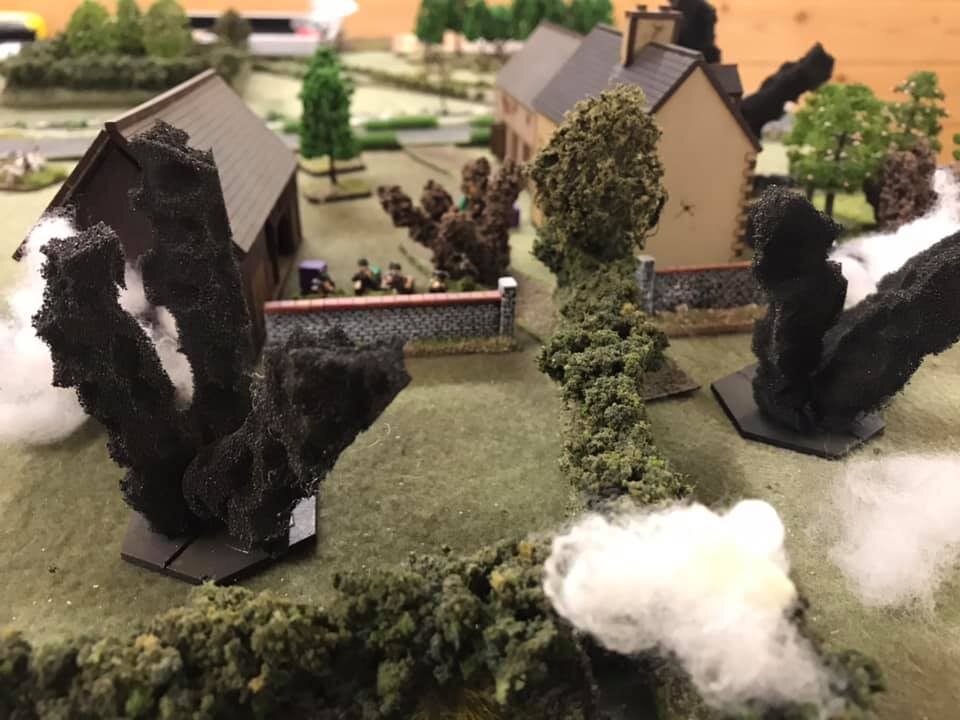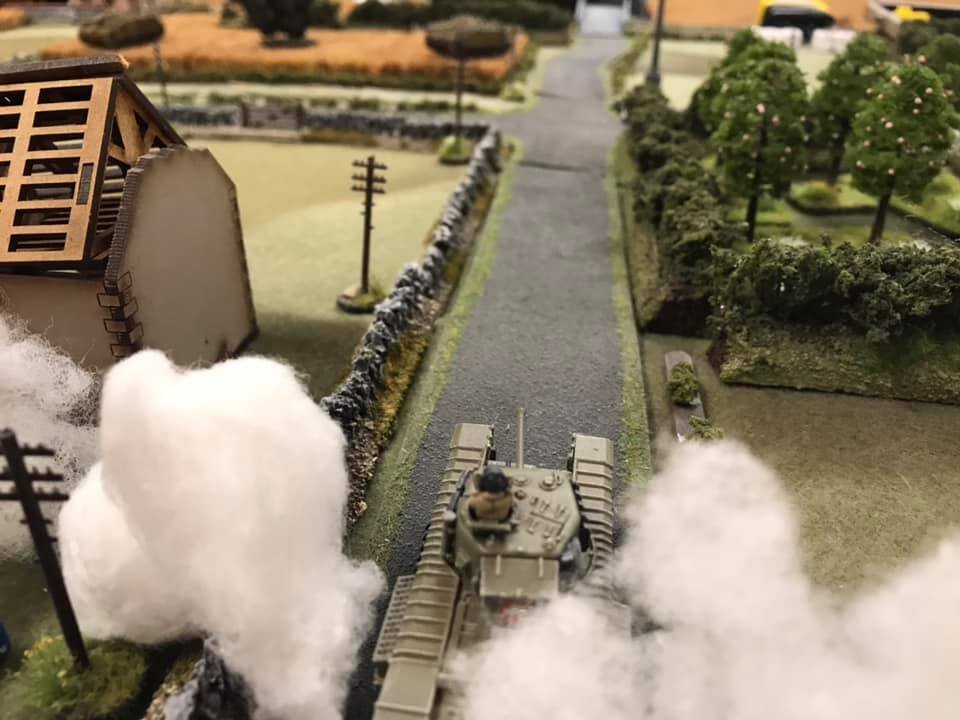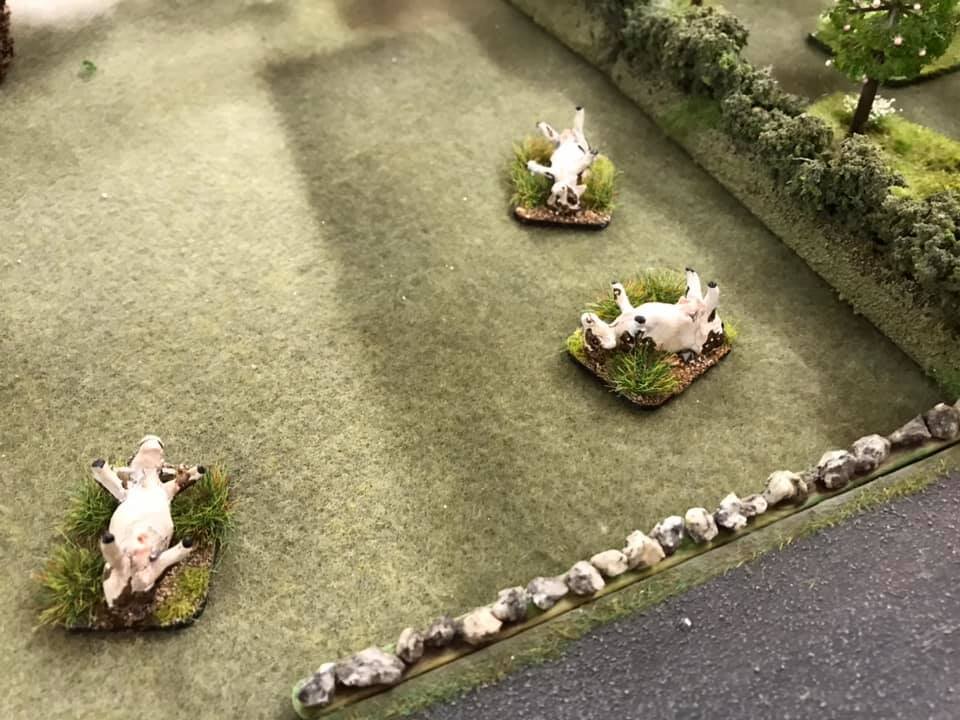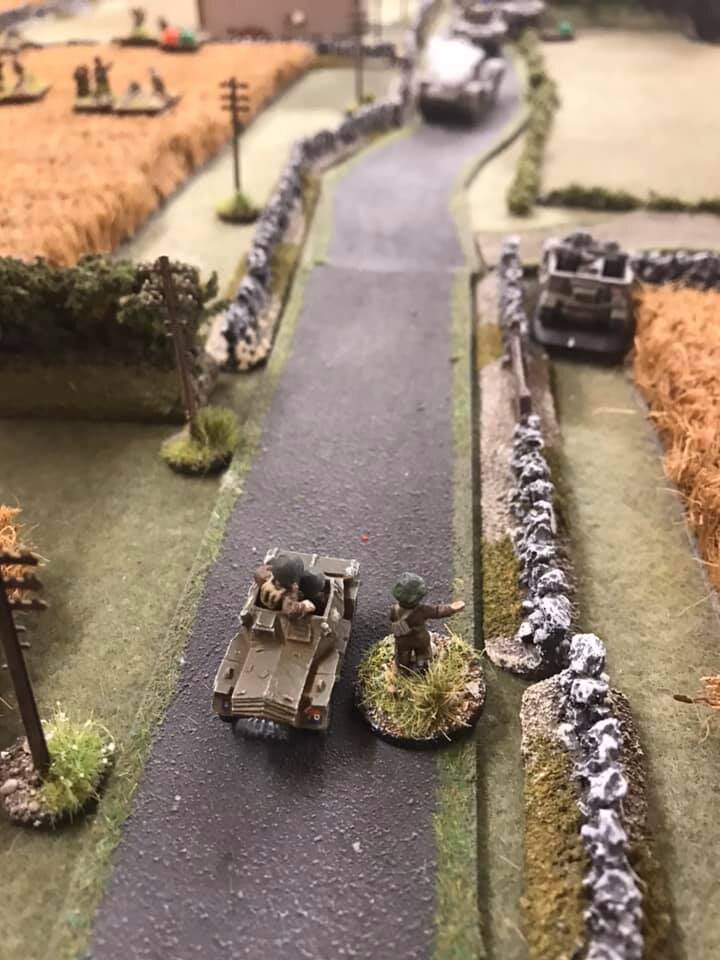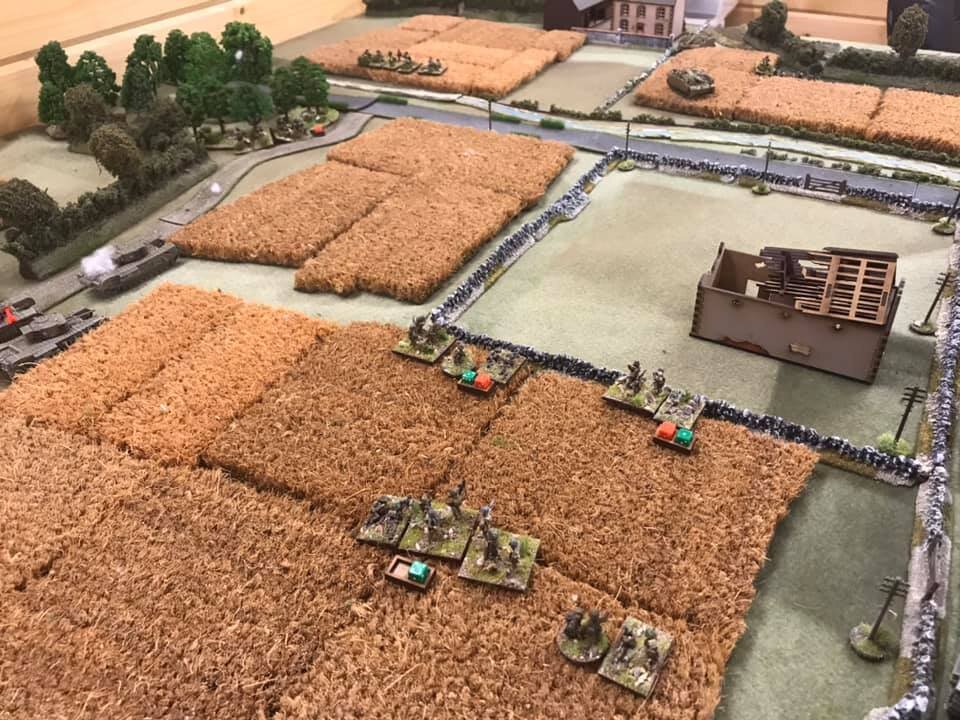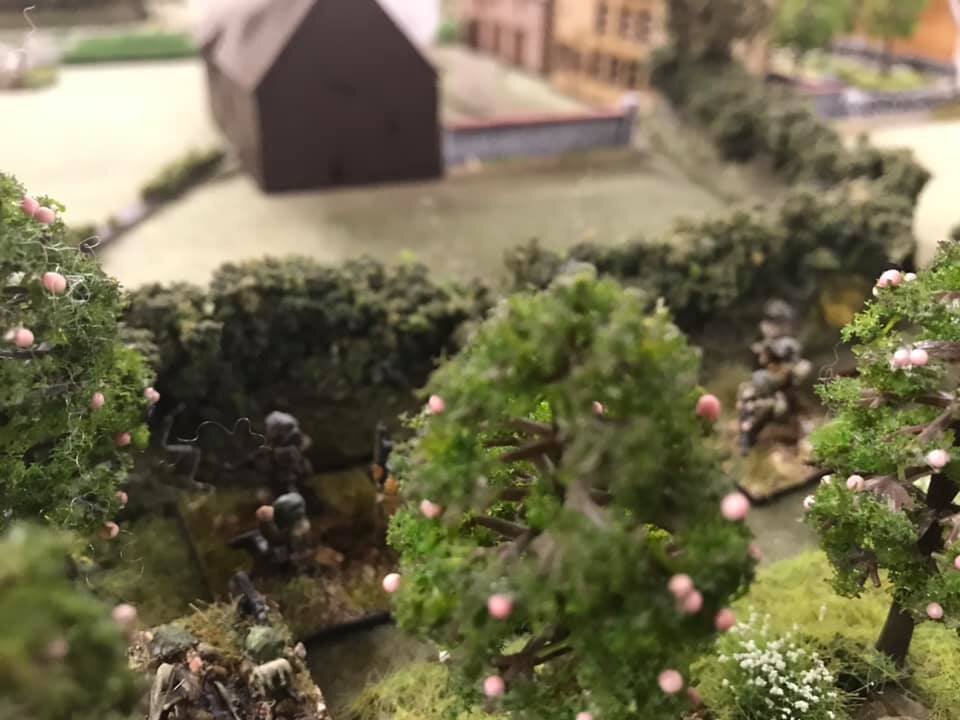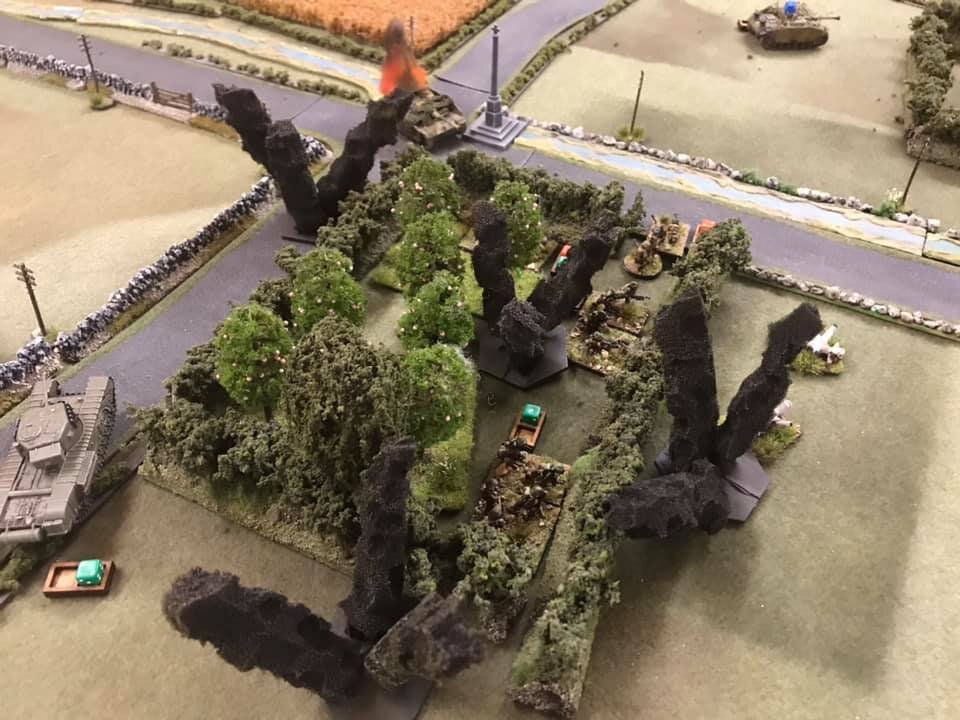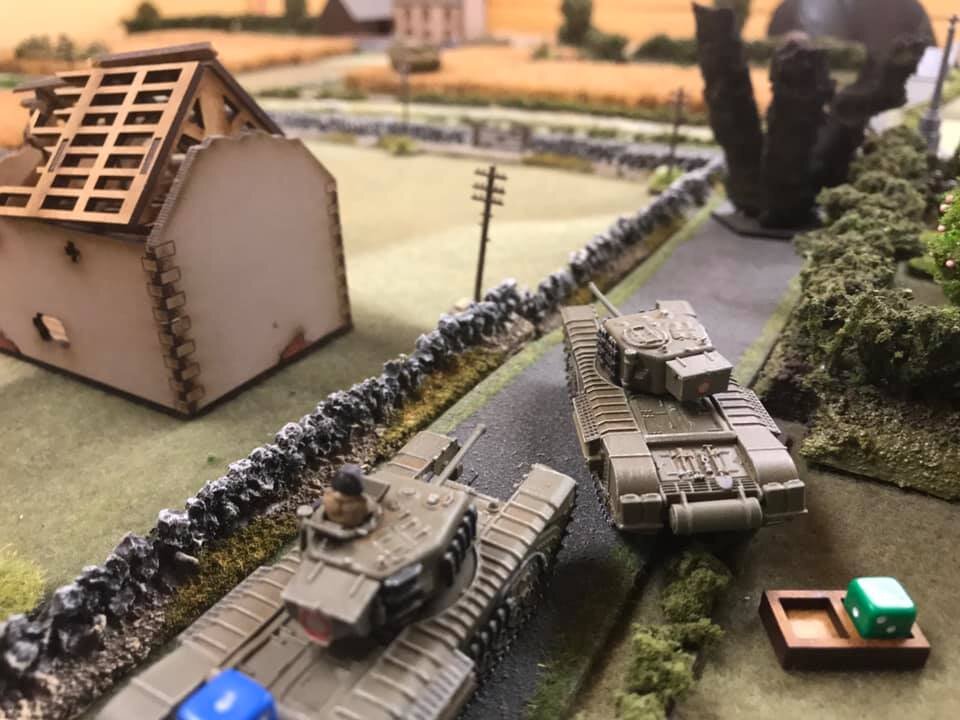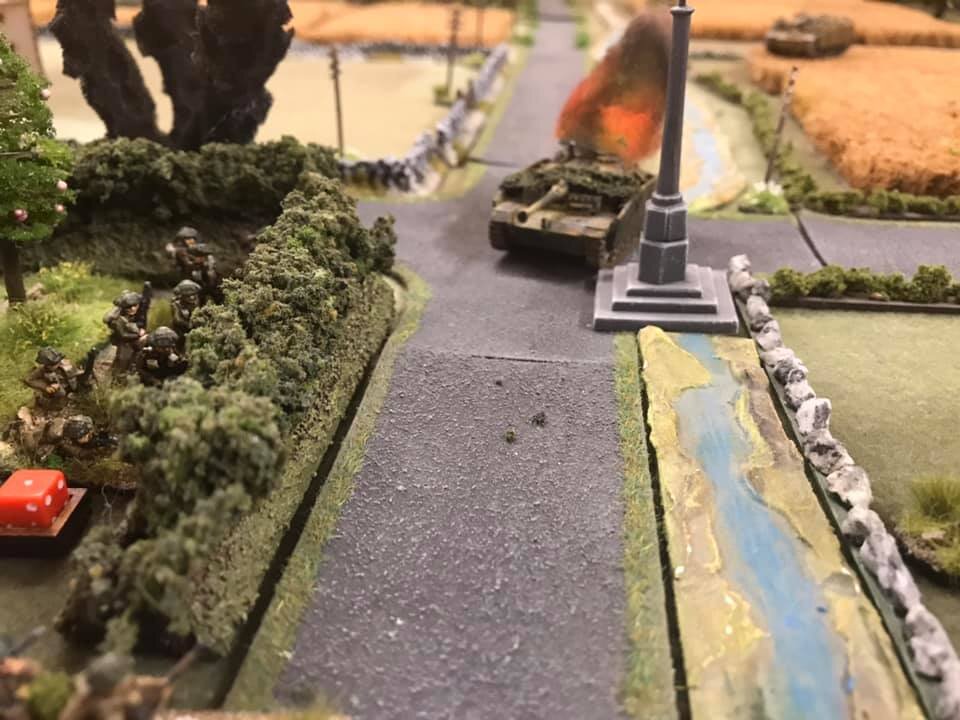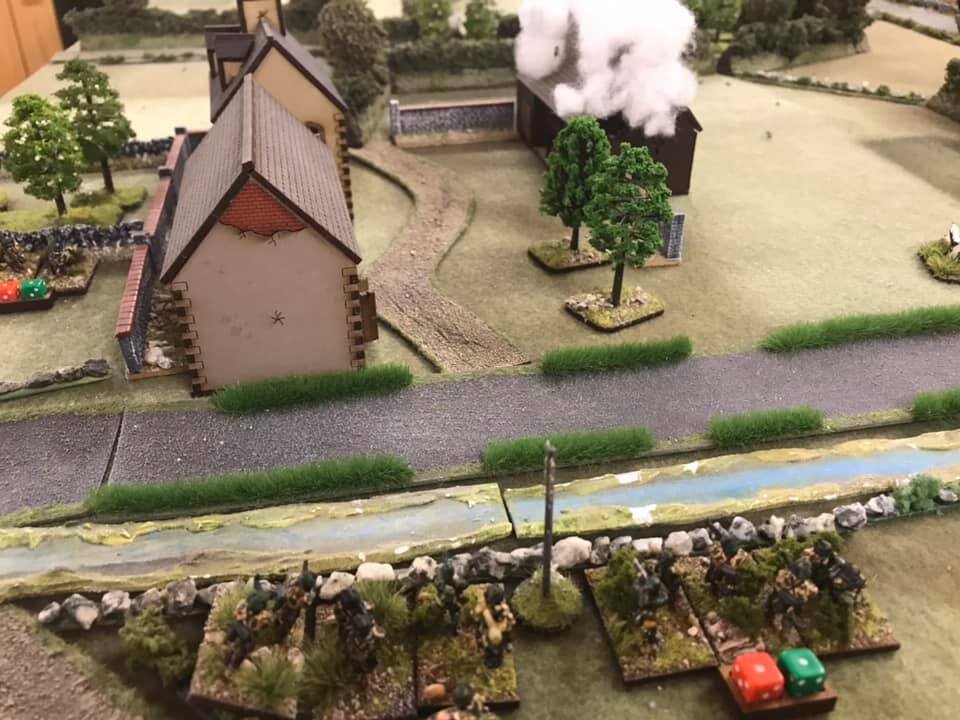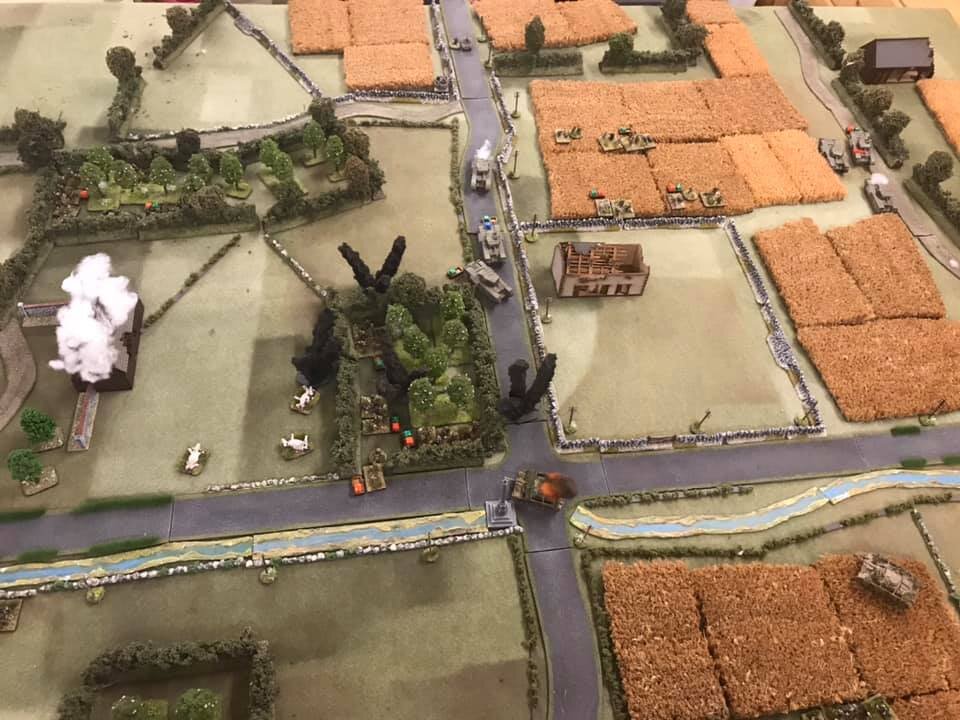I allowed myself four Big Men in my substantial force though rated the troops as poor with only two initiative dice maximum. The T-28's I decided should be green crewed as well!
The Battle
When Jez and I usually play we only have time for a three hour game maximum. Usually I have a small defensive force and Jez has a fair sized attacking force. This time it would be different with the advantage of numbers firmly on my side. I wanted to see Jez panic as the German commanders had when initially when hit by human wave attacks.
I deployed AT rifles separate from their Platoons, but to operate on the same chip, well in advance of my main line of defence in the small fields around the western farm.. These would hopefully halt the lightly armoured German AFVs which I envisaged making a run for the bridge early on. I placed my 12.7mm AA HMG, a Maxim, and my six mortars in a copse on my side of the bank, in the loop of the river where they could command the battlefield.
Next to the bridge I deployed a 76mm Regimental gun and sniper to pin troops in the farm should they dismount from their armoured vehicles as I knew they would. Supporting them and hidden by the copse with the mortars were two T-28's my ultimate reserve in case the Germans captured the bridge.
My second HMG and a sniper were located in a small copse on the northern riverbank to protect the second, unspotted bridge. In the boggy areas, adjacent to this feature, I had deployed two Platoons of infantry, with a further two platoons sharing the same blind on the southern bank hidden by the copse.
Finally in a small copse on the extreme eastern table edge I deployed yet another infantry Platoon and my second 76mm gun.
I hoped to launch an assault via the second bridge throwing the enemy into confusion whilst their forward progress was held up by AT rifles and snipers. My mortars would support either the attack or pin troops in the farm.
The bunker was revealed to Jez on his baseline in a large copse, guarding access via the road. Jez was told he could deploy within 12" of either northern table corners.
So much for the plans then....
My blinds came up first and I easily spotted a mass of armoured cars heading towards the farm. I decided to hold all my dice and as Jez's 'Blinds Move' came up he spotted a blind in the cornfield, west of the farm. Deciding it was a fake he advanced a SdKfz 231's right through the blind.
Big mistake. I hit him in the rear with a close range shot from my AT rifle. Ka-boom, vehicle destroyed.
This really shook Jez. He soon recovered though and his remaining heavy armoured cars blazed away, killing an AT rifle crew member and causing three wounds.
Ominously, other blinds of Jez's occupied the woods to the east. Relieved, I was praying at his point that Jez was not going to make a run for the bridge as I had concentrated most of my infantry in the east near the second, as yet undiscovered bridge.
He spotted blinds in the small copses on the northern bank and discovered the bunker to be empty, and was as yet unworried. However, his arse began to grip the chair when he successfully spotted my six mortars and two HMG's in the river bend.
As 'Tea Break' came up Jez was forced to place his Panzers and armoured infantry on table. They were just behind the farm, in cover.
The next turn saw Jez dismount and occupy the farm whilst one Panzer drove right along the road, another skirting the farm to the north.
When my 'Blinds Move' came up I decided the time had come to mess with his mind.
A blind left the boggy ground it was hiding in and occupied the large wood in the centre of the table. An AT rifle located on the northern edge of this feature started popping away at a Panzer III hitting it with alarming accuracy though failing to penetrate.
I spotted a 75mm infantry gun in the eastern woods and decided foolishly to shoot at long range with my infantry and 76mm gun located in the copse to its front, to no effect.
The photos do not do the spectacle justice as twelve squads each of ten infantry launched into the advance to contact.
I have never before used a wave assault in IABSM but judging from the look on Jez's face I will be doing so again. He was absolutely terrified! Jez was incredibly impressed with the number of troops he was facing. He had thought initially that I would only have a skeleton force but by now he realised he was on the defensive himself.
Luckily for me I activated an AT rifle in a yard near the second farm and managed to hit his forward observer a couple of times, unnerving him somewhat.
The action switched to the western side of the table as Jez killed my AT rifle near the first farm and then successfully assaulted and killed another AT rifle with his infantry, clearing a field, and outflanking my remaining AT rifle. He also spotted my fake as a fake and began to realise that a run for the bridge may work.
A Stuka descended from the clouds and dropped its bomb, engines screaming, before pulling out of its dive and flying away. Had the pilot managed to look back he would have realised that his detonation was in fact on top of a SdKfz 223! Blue on blue! Jez was not impressed. I seem to have a magnificent record of friendly fire when others have air support, and I do not.
My 'Mortar Bonus' chip arrived. the first time any of my mortars had had the chance to fire. I dropped a shell onto a section of Schutzen in the farm. Killing a couple of vipers! However, scoring a lucky 17, a pinned German section destroyed my Maxim HMG without it firing in anger.
Jez continued to mop up AT rifles with MG fire from his AFVs but he was somewhat surprised when my 76mm Infantry gun fired at his Panzer III, jamming its turret with its first hit, and forcing it to withdraw upon tea break or its next initiative with its second shot. Lucky for him that the third shot missed!
Things were looking a little uncertain for me near the farm so I decided upon 'Heroic Leader' to motivate a section and lead them from the central woods to assault Jez's Big Man led Panzer III. Minor damage forced it too to withdraw.
However, my exposed infantry squad were shot to red ruin by Halftrack MGs. Surprisingly the Big Man survived, but collapsed to the ground, no doubt sobbing.
It was a brave but foolhardy tactic, nevertheless one I would try several more times in the game.
Over in the east, Jez's 75mm infantry gun fired into the mass of Soviets heading toward him causing several casualties. However, suddenly a Big Man rose from the throng on the ground to cry Za Rodinu, for the Motherland! A loud 'Uhraieeee' sounded as the chip was pulled from the bag and three section of Ivans assaulted and wiped out the gun crew capturing the piece.
Other infantry Platoons headed further north when their chips were drawn, one Platoon however, headed back over the second bridge in an attempt to manouevre back into a defensive position.
The next turn saw Jez's armoured cars get the bit between their teeth and head in the direction of the bridge as he realised that time was running out.
My 12.7cm finally was destroyed by autocannon
He killed my last AT rifle with another infantry assault and was now a mere 12" away from the bridge.
I now drew a couple of 'Tank Killer' chips in quick succession and proceeded to attack the front and rear of Jez's Company HQ, still near the second farm and still awaiting their chip to be drawn.
The brave Ivans lobbed grenades at his 251/10 Command vehicle, immobilising it and also managed to immobilise a 251/1 at the rear.
However, when 'Tea Break' arrived next chip the smile was wiped off my face as both assault squads were hit with close range 2cm AA, Hanomag mounted MG34, Motorcyle Combo MG34 and 251/10 37mm AT cannon wiping out all except one man who dazed was captured and no doubt executed for his foolish bravery.
As Jez's Armoured cars continued their progress towards their objective my 76mm gun opened up again, missing wildly.
Once again as 'Tank Killers' was drawn I rushed a section from the central woods and permanently immobilised a SdKfz 222 with a flank hit.
Jez's infantry had been pinned with accurate sniper fire in the previous two moves but made a run for the bridge, shooting and butchering my victorious tank killers in the bargain, and finally setting foot on the rickety bridge.
My infantry Platoon which had captured Jez's 75mm in assault manhandled it to the edge of the wood intent on using it on the German HQ vehicles.
In a final act of suicide I assaulted Jez's SdKfz 10/5 2cm mounted light AA gun with yet another section. Managing to jam the weapons traverse they too were wiped out by yet more concentrated MG34 fire.
My fifth and final section to meet the same fate that day.
With the drawing on the 'Tea Break' chip, and it being lunchtime we called it a day.
Jez had managed to set foot on the bridge but not control it. It is arguable whether he could in fact have successfully held it close as it was to two T-28's.
My mortars had fired once as a platoon and twice as single tubes with no real effect and had been very disappointing. The number of chips in the bag seemed magically to prevent their chip turning up (I know, I know Clivey its 50% probability of a chip turning up - but it didn't!)
Jez's Company HQ also, armed to the teeth, had their chip turn up only once and relied on the fact that when 'Tea Break' came up they were within short range and could shoot my brave troops to ruin.
Spectacular is the only word to describe 120 Soviets running towards you!
I really wanted them to get into the German's but lacking 'Uhraieeeee' chips, also noticeably absent from the draw, and only in possession of two initiative dice with which to move meant that progress was slow. Luckily, Jez's lack of automatic weapons in that vicinity of the table meant that they hadn't accumulated wounds or it would have been a massacre.
The attacks on the AFVs, by the infantry were suicidal but often very effective. There was a real air of desperation about the savageness of the fighting worthy of a report in Signal with brave German's facing hordes of Ivans.
The game was a cracker, one of the best IABSM games I've ever played.
I shall use Human Wave assaults again. Back to the drawing board....
Kev




